This year’s draft class may not have a clear No. 1 MLB Draft pick candidate or even the kind of top-of-draft strength of a year like 2023, but it does have quite a bit of depth in terms of talent. I think in the long term we will look back on this draft and see it as at least an average one in terms of producing big leaguers, looking at all of the college pitchers and high school shortstops who’ll go among the first 50 picks and the track records of those categories of players.
This is my last major update to the Big Board, although I may make minor changes if I hear anything significant between now and the draft. There’s a solid group of six or seven prospects at the top, and then the next big drop-off comes around No. 64, which is almost exactly the number of picks in the top two rounds (the Dodgers pick 65th for the last pick of the second round). It’s also a good year to try to save some money with your first pick to go over slot later on, given that depth in high school shortstops and a solid group of high school pitchers beyond Seth Hernandez, who’s the only prep arm definitely going in the first round.
This is my ranking of the prospects, not a prediction in any way of where they will be drafted (that will come early next week). I don’t consider signability on this list — it is just about how good they are as prospects, including their present tools and skills and the projection going forward on their abilities and their physical gifts, as well. I don’t have access to all of the information teams have, including medical information, much of which won’t become public until after the draft.
(Note: Scouting grades are on the traditional 20-80 scouting scale. The “shadow” of the strike zone refers to one baseball width off the edge of the strike zone.)
Player Type Pitcher Position Player
School Type 4-Year College High School
Position 1B 2B 3B C LHP OF RHP SS

Loading
Try changing or resetting your filters to see more.
Scouting Report
Bats: L, Throws: R
Holliday is probably the best-known player in the class, thanks to his famous father, Matt, and increasingly famous brother, Jackson, but also because there have been plenty of points in the past year-plus when Ethan has looked like the best prospect in the class. He has easy plus power already and projects to be more similar to his father in that regard than his brother, though he’s not as advanced a hitter as Jackson was at the same age. Ethan has been inconsistent this spring at the plate, with his front side flying open as he tries too hard to get to that power, leaving him vulnerable to stuff on the outer third, although that’s a fixable problem. He does know the strike zone, and rarely chased stuff out of the zone last summer and fall. He’s big for shortstop but has great hands and a plus arm, showing better range this spring and more consistency on routine plays; if he moves to third base, it’ll be because he outgrows short, not because of a lack of ability. He’s not a sure thing, given some of his swing-and-miss issues (such as on velocity up in the zone) and the mechanical adjustments he’ll have to make, but he offers the best combination of upside and probability in the class.
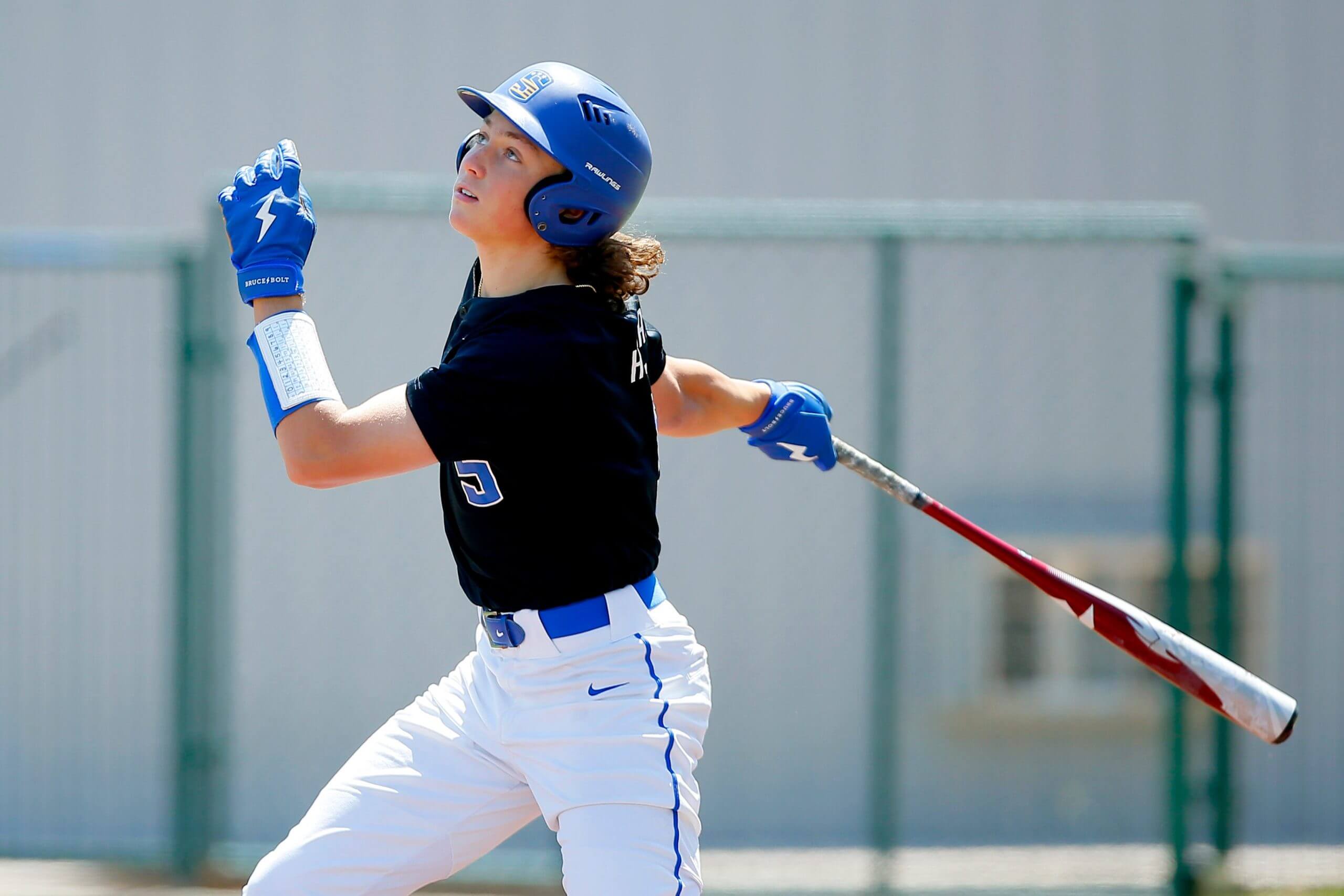
Position Player
High School
SS
3B

Scouting Report
Bats: R, Throws: L
Doyle transferred for the second time in as many years, moving from Mississippi to Tennessee (after starting his career at Coastal Carolina), and picking up some serious velocity along the way. He spent the spring of 2025 dominating hitters with his 96-99 fastball, striking out 42.6 percent of batters he faced. He throws the heater more than 60 percent of the time, and hitters just don’t hit it — they whiff over 40 percent of the time they swing at it, even though he’s throwing it so often they can frequently just guess fastball and be correct. He backs it up with a plus splitter up to 89 mph and an above-average slider in the low to mid 80s, both of which miss plenty of bats, with the splitter a weapon he’ll use against hitters on both sides of the plate. He works in the zone a ton, walking 8 percent of batters he’s faced, and isn’t afraid to attack hitters on the inner third. The only knocks on Doyle seem to be the lack of track record prior to this year and the fact that the delivery is unorthodox, although he repeats the heck out of it and I don’t see a big red flag beyond the fact that he throws really hard. If his command and control hold up against better competition, he could be a No. 2 starter, and I wouldn’t hesitate to start him at least in Double A.
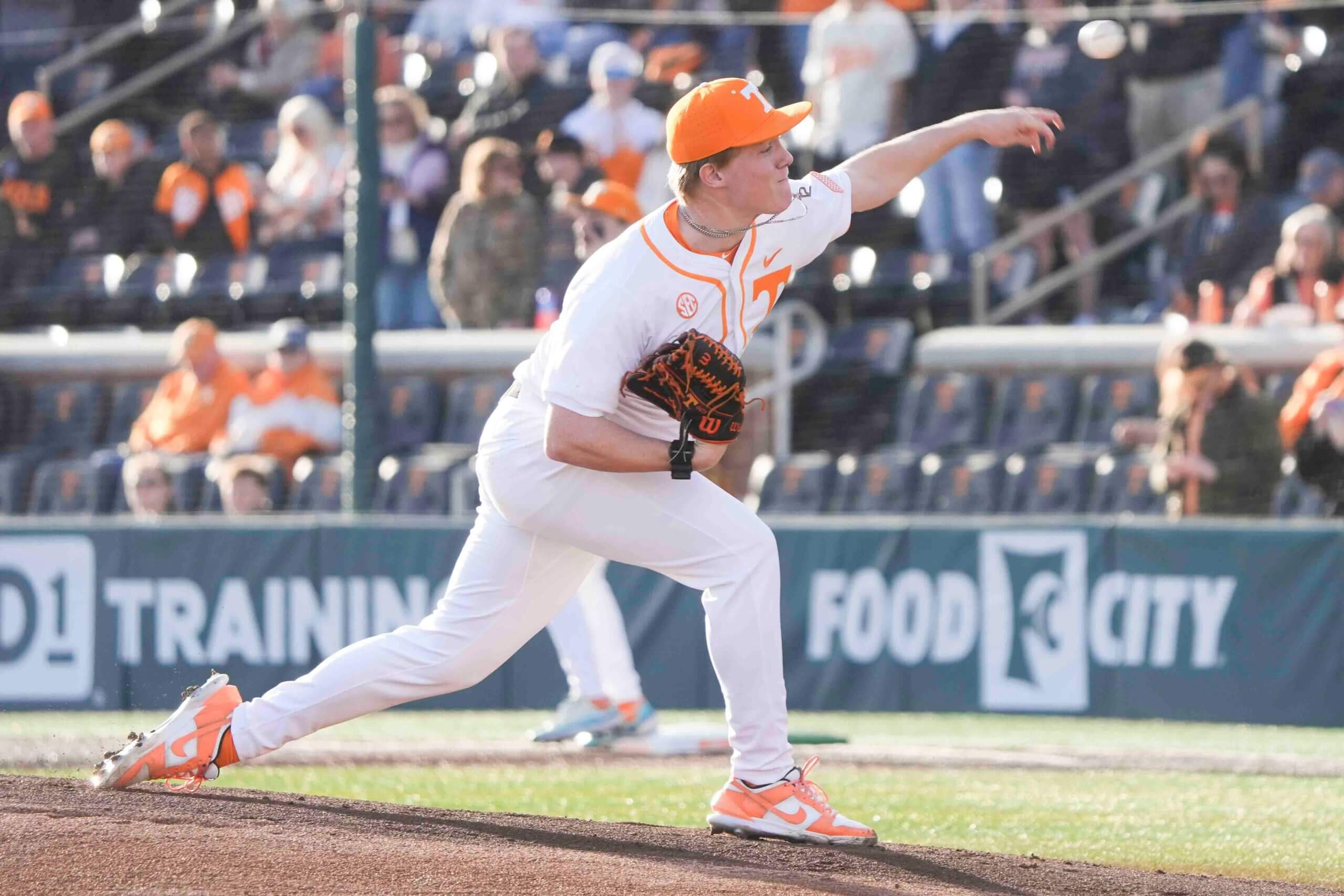

Scouting Report
Bats: L, Throws: L
Anderson is a very polished, competitive lefty who works with a true four-pitch mix, or five if you distinguish between the two fastballs, and he throws a ton of strikes with the whole arsenal. He’s 91-95, using four- and two-seamers, and leads with a plus changeup that has excellent deception and hard fading action, helping him attack hitters on both sides of the plate. His slider is the better breaking pitch of his two, as the curveball looks pretty but doesn’t generate as many whiffs and may be more of a show-me offering to keep hitters guessing. He repeats his delivery well and it looks like real command, not just control, especially of the fastball. Anderson threw 135 pitches on a cold night in Norman, Okla., in early April, which was followed by two of his worst starts of the year (11 runs allowed in 10 innings), which I’m sure is just a coincidence and not at all related to the irresponsible usage — although to Anderson’s credit, he competed all the way to the end of that shutout against the Sooners, even as his stuff continued to fall off in the last two innings. He went 130 pitches again in the first game of the finals of the College World Series. As long as he’s at full strength, he’s a mid-rotation starter, and looks like the kind of college pitcher who could get to the majors inside of 18 months.
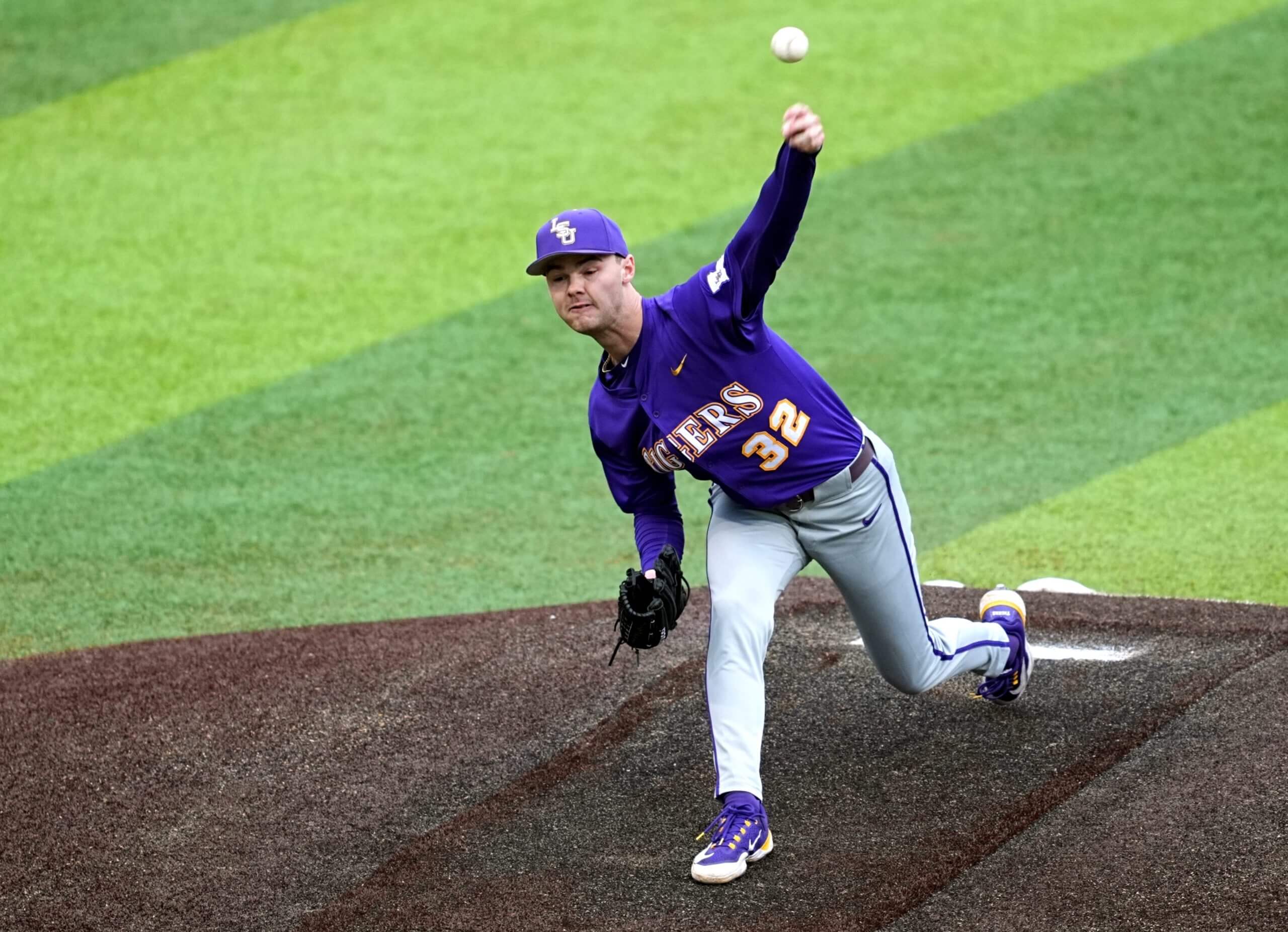

Scouting Report
Bats: R, Throws: R
Arquette might be the top college position player in the class … but you’ll find people who say he’s a back-of-the-first-round talent, too. The Hawaiian standout transferred to Oregon State from Washington this year, and he’s hit .354/.461/.654 as the Beavers have played an independent (non-conference) schedule, finishing one behind team leader Gavin Turley in homers. He has excellent hand-eye coordination, rarely swinging and missing, especially at pitches in the zone, and he doesn’t chase much, although he’s started expanding the zone a little more with two strikes as the spring has progressed. He’s an agile shortstop with excellent hands and a plus arm. However, at 6-foot-5 and I’d guess at least 10 more pounds than his listed 220, he’d already be one of the biggest shortstops in MLB history, and I’d bet heavily that he goes to third base. Aside from that positional question, Arquette just hasn’t faced much good pitching this year; he’s seen enough velocity to say he can hit it, but he hasn’t seen much quality secondary stuff, and when he has faced harder sliders or changeups with some tumble, he hasn’t fared as well. There’s 25-homer upside with a strong eye and what could be really good defense at third, a Troy Glaus-ish profile, if Arquette reaches his potential.
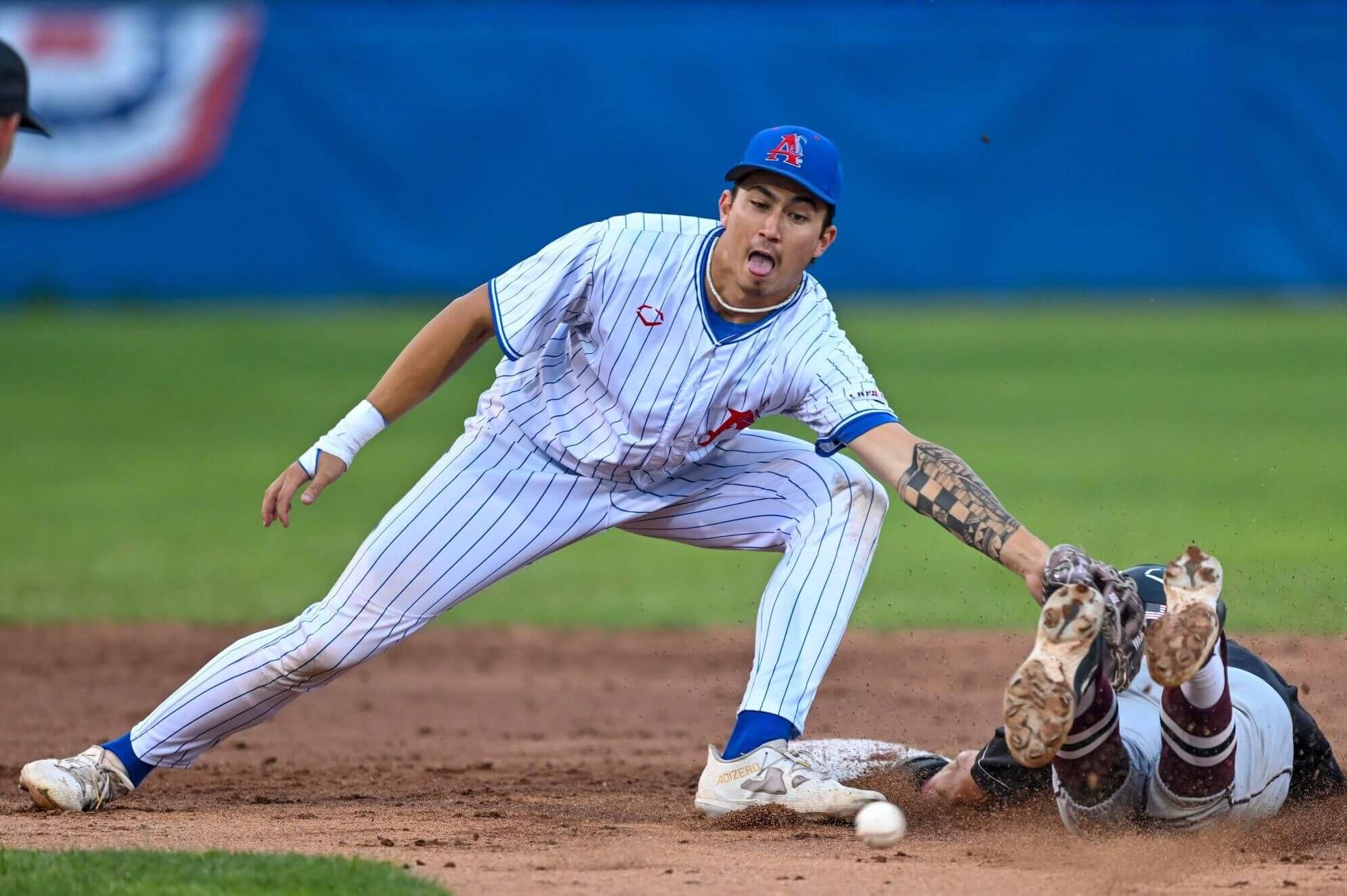
Position Player
4-Year College
SS

Scouting Report
Bats: L, Throws: R
Irish started the year as Auburn’s catcher but was hit in the back by a pitch, fracturing his scapula, and after his return he mostly played the outfield, which is only going to underscore questions about whether he’s a catcher at the next level. He can really hit, though, with an old-school approach that uses the whole field; he hit about 50 percent more balls to left field this year than he did to right field, a big increase over 2024 when he was closer to 50/50. He did start pulling the ball more as the season went on, though, which will help him with models that zero in on players who pull the ball in the air. He hits the ball extremely hard regardless of where it’s going, though. Pitchers have worked him away, and he’s just taken those pitches to left, with enough success that you’d think teams would try to come back in on him. He’s about a 45 receiver now, needing some work across the board behind the plate other than his throwing, where he nailed six of eight would-be basestealers before his injury. His ability to hit, and to handle stuff on the outer third so well, gives him a different sort of floor than the typical catching prospect — maybe he ends up at another position, but hits enough to profile as an above-average regular even if it’s an outfield corner. However, if he can stick at catcher he might be a star who hits for a high average with a ton of doubles the other way, and 12-15 homers with the current approach.
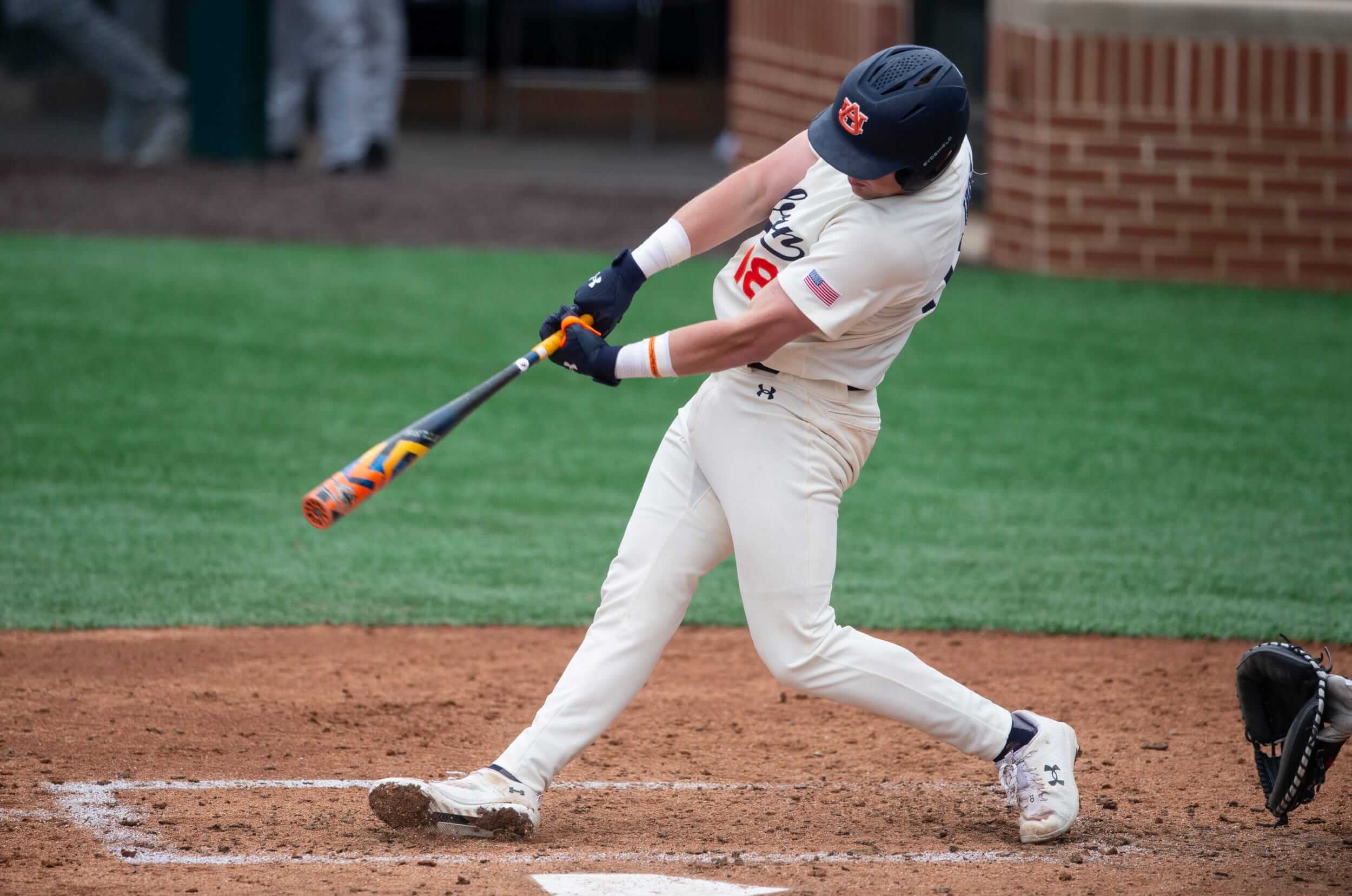
Position Player
4-Year College
C
OF

Scouting Report
Bats: L, Throws: L
Arnold came into the year as the likely top college pitcher on the board after a dominant sophomore season in 2024 that saw him finish third in Division I in strikeouts, behind only 2024 top-six picks Chase Burns and Hagen Smith. He’s taken a tiny step back in stuff this year, although he’s still topping out at 97-98, just sitting about a half a mile an hour less, so now he’s 91-95 but with a ton of ride, coming from such a low slot — nearly sidearm — that hitters can’t square it up. He works with a plus slider that gets huge horizontal break and he can throw a true changeup that’s at least a 55, with great arm speed and late, sudden tumble to it. It’s a surprisingly easy delivery for its type; a lot of guys coming from down there with this velocity have high-effort or otherwise troublesome deliveries, but other than some cutoff in his landing Arnold’s is about as easy as it gets. There’s definitely some reliever risk here with the low slot, but in this class he’s pretty clearly one of the top-five talents, and at least a mid-rotation guy if he starts.
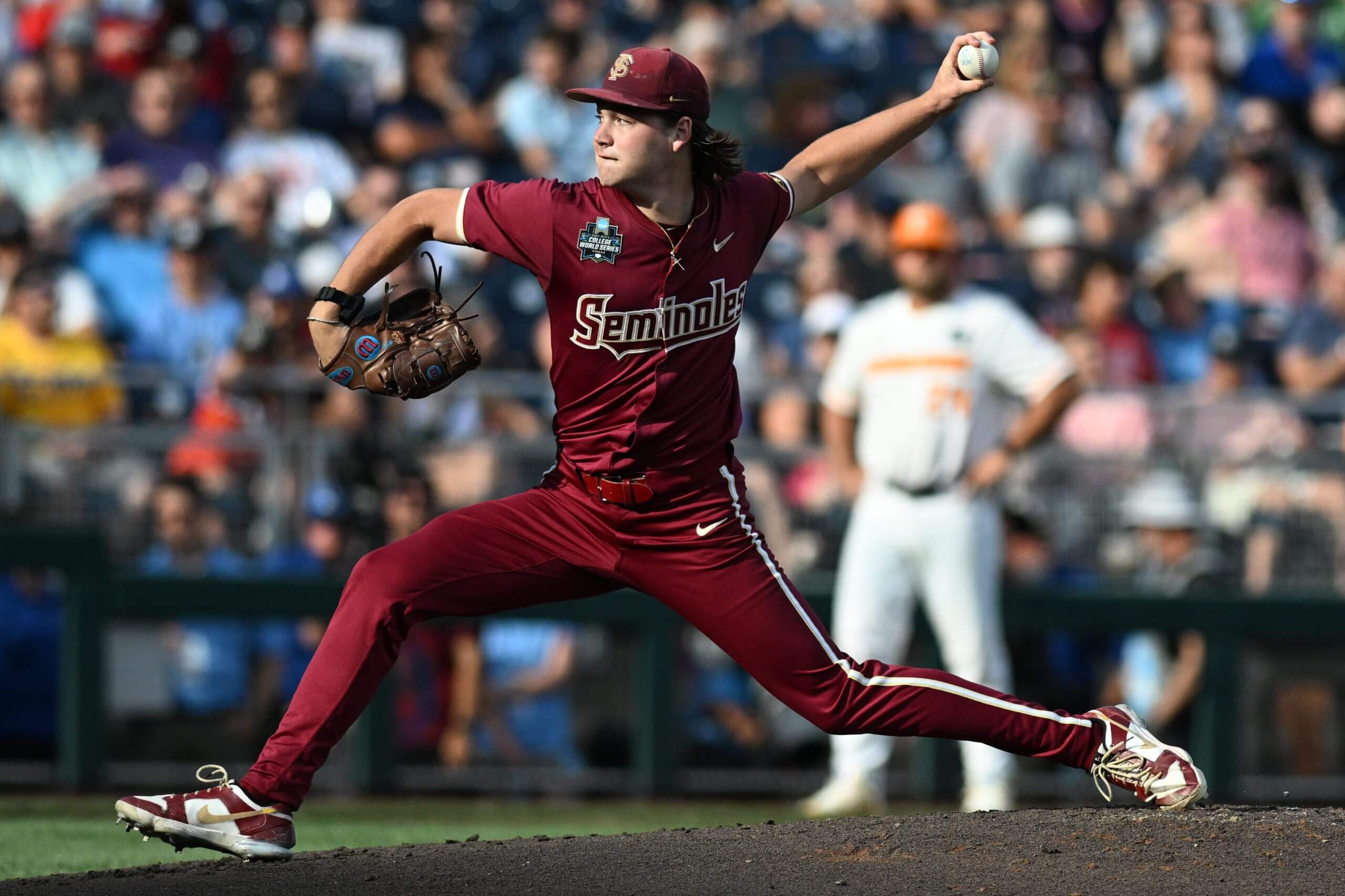

Scouting Report
Bats: L, Throws: R
Kilen transferred from Louisville to Tennessee this year and started the season on fire, going 9-for-15 with four homers at the Minute Maid* Tournament against Oklahoma State, Rice and Arizona. (*It has another name now, but I’ll call it Minute Maid forever.) The only thing that stopped him all spring was a hamstring injury that took him out for close to a month; other than that, he hit for contact and power, walking more than he’s struck out, playing capable defense at short and above-average defense at second. Kilen struck out in just 11 percent of his PA this year, and his whiff rate on pitches in the zone is just 10 percent, yet he still hits for significant power, topping out over 110 mph and boosting his average exit velocity about 2 mph over his sophomore year. He’s going to end up at second base in pro ball, maybe starting out there, with a chance to hit .300+ with at least solid-average power.
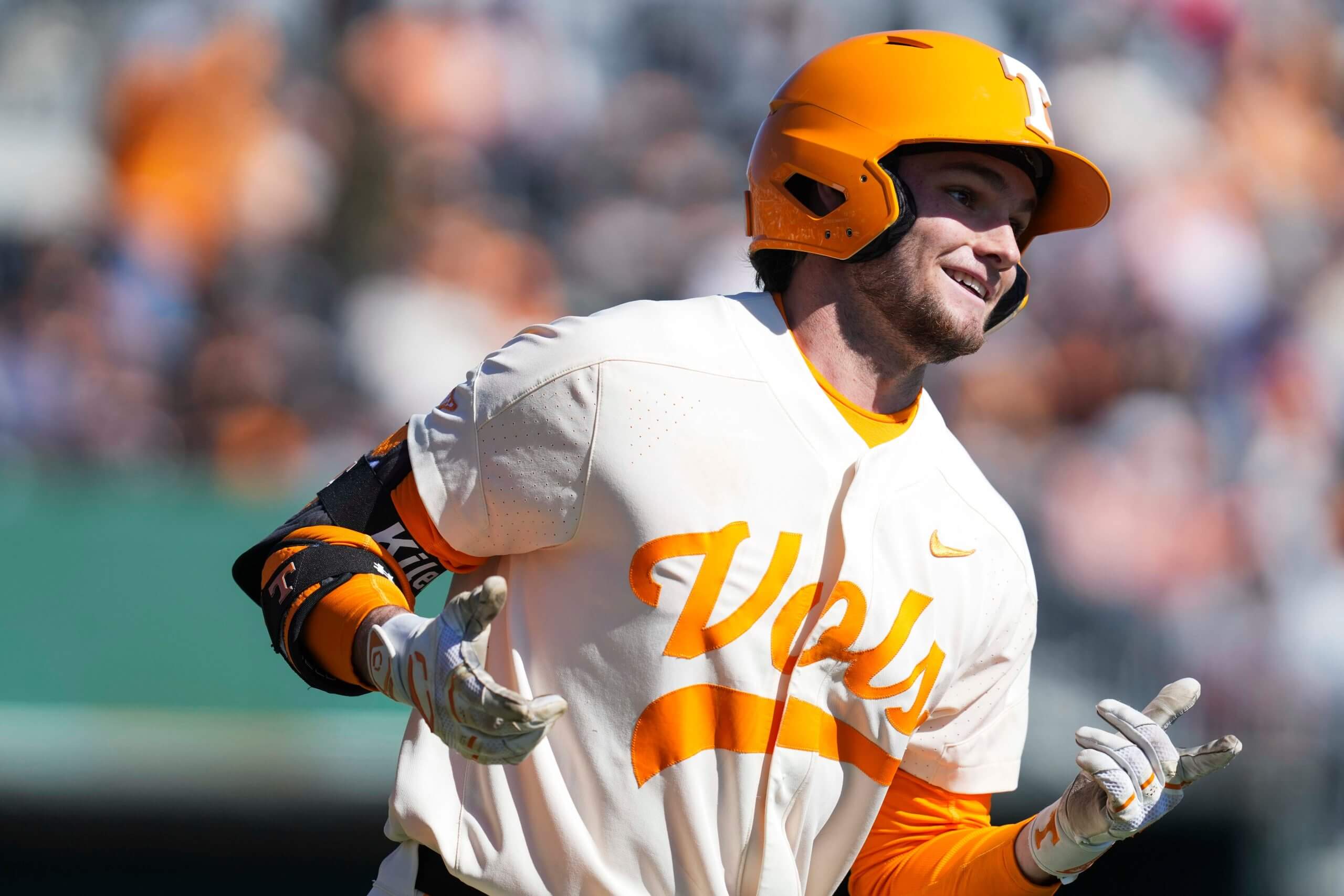
Position Player
4-Year College
2B
SS

Scouting Report
Bats: B, Throws: R
Willits, the son of former Angels outfielder Reggie Willits, is one of the leaders of the deep group of high school shortstops in this draft class, and one of the most likely to stay at the position for the long term. He reclassified into the 2025 class, and now he’s one of its youngest prospects, turning 18 five months after the draft. His swing is compact and geared toward contact, without a lot of lift or length to the ball to create more power. He does have room to fill out, especially in his lower half, and his contact quality should improve to the point that it can support higher batting averages, although I think he’ll top out at 45 (below-average) power. He’s a definite shortstop with soft, easy hands, a plus arm, and plus running speed, with the upside of 70 defense. His floor is pretty high because he can defend and make contact, which would at least make him a utility infielder, with above-average upside if he gets strong enough to get to some doubles power and hit .300 or so.
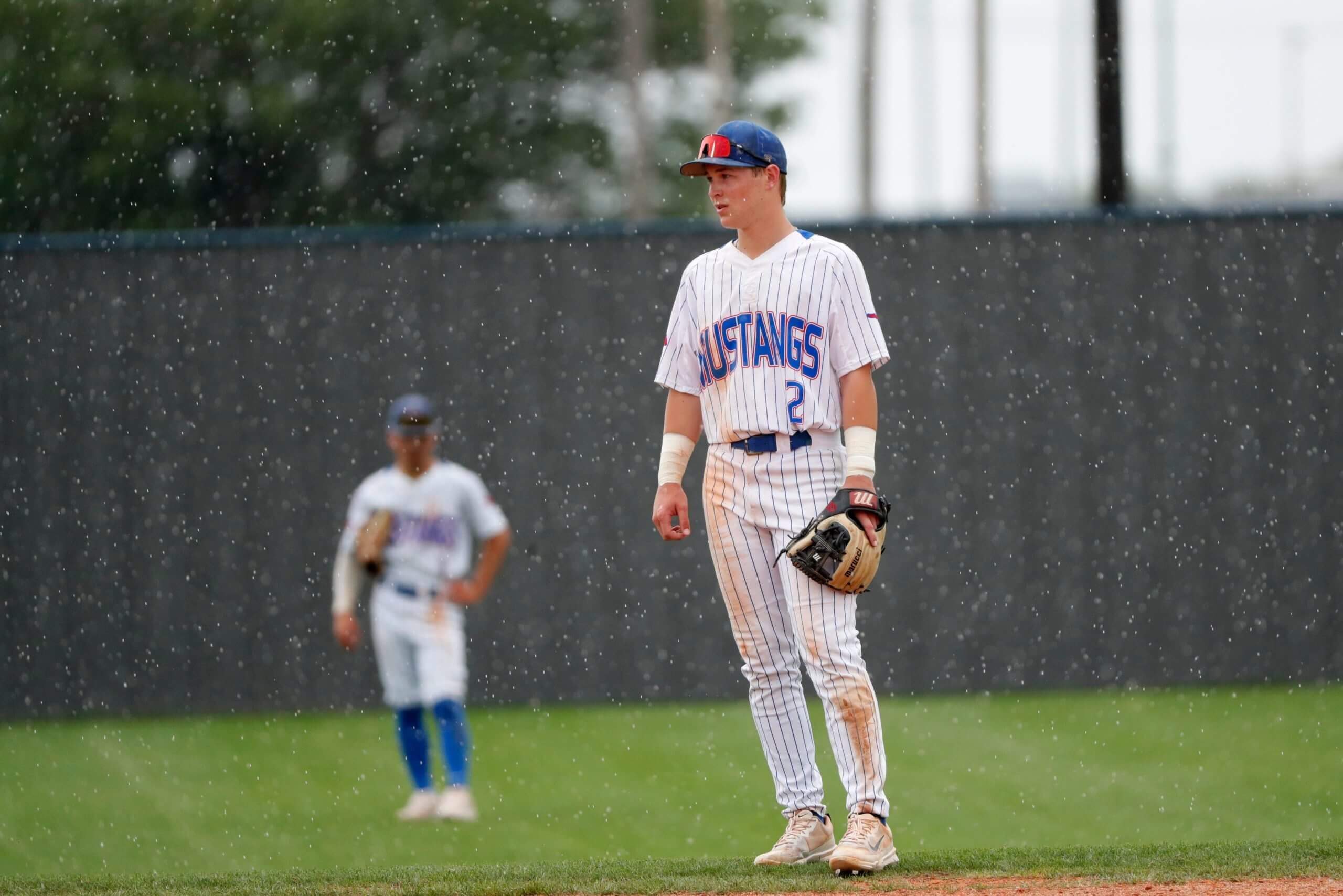
Position Player
High School
SS

Scouting Report
Bats: R, Throws: R
Witherspoon was dominant in his second year with the Sooners after he spent a year in junior college, cutting his walk rate almost in half even though he’s gained about a full mph on his heater since last year. Witherspoon will hold 95-97 deep into games, topping out at 99, with a five-pitch mix that includes a slider and cutter that run into each other, along with a 55 changeup that he needs to use more often. He has such good arm speed on that last pitch that it looks like it should be a real weapon for him, especially against lefties, but he prefers to go to the cutter against them despite worse results. His arm action is very short — after separation, he barely brings his pitching hand down, tapping an imaginary button behind him with the ball before he begins moving forward — which is the trend right now but in his case has produced plus control. He looks very athletic and should be able to make adjustments to the delivery to get him to a more consistent release point out front, which should boost the command, especially on those two breaking pitches, which he can leave up in the zone. There’s so much to work with here, and a strong foundation of arm strength and strikes, with No. 2 starter upside if he gets the right development help. He won’t turn 21 until a month after the draft, just like his twin brother Malachi (what a strange coincidence), who has similar velocity and a 55 slider, but doesn’t throw enough strikes to start because he doesn’t repeat his longer arm stroke.
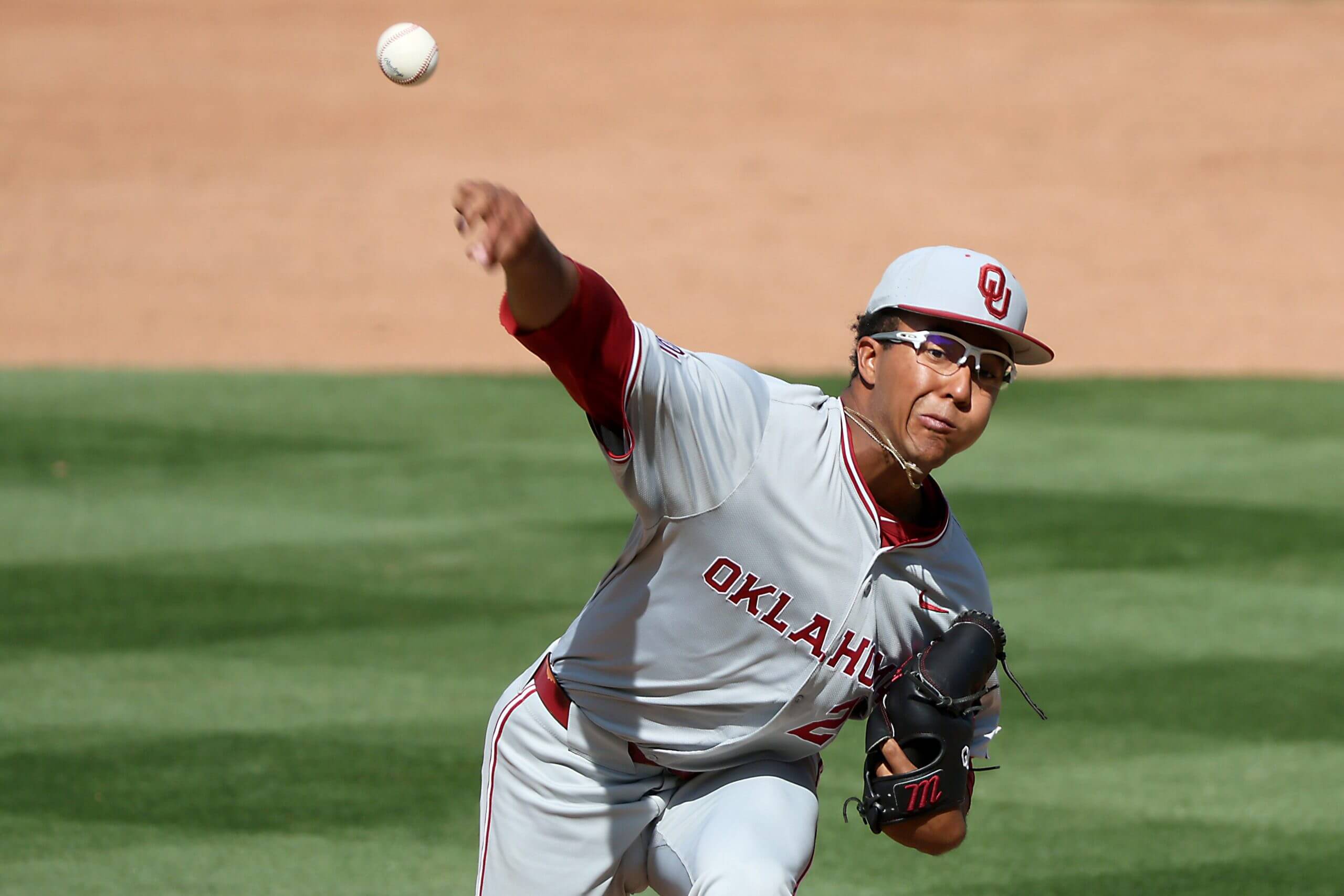

Scouting Report
Bats: L, Throws: R
Parker is one of the best pure hitters among the high school crop this year, with a very high-contact approach that held up against better pitching last summer and fall. He has incredible hand-eye coordination and a reasonably compact path to the ball, only whiffing twice in 86 pitches in the zone, according to 2024 data from Synergy. He doesn’t expand the zone easily and has shown he can catch up to good velocity. He does have a habit of drifting over his front side on some pitches, and that is at least one reason why his evident strength hasn’t translated into much in-game power. He’s a shortstop for now with good hands and a plus arm, way more likely to end up at third base as his range is average at best. He’s a bet on the hit tool, and if you’re going to bet on a high schooler’s hit tool, his is the one to bet on.
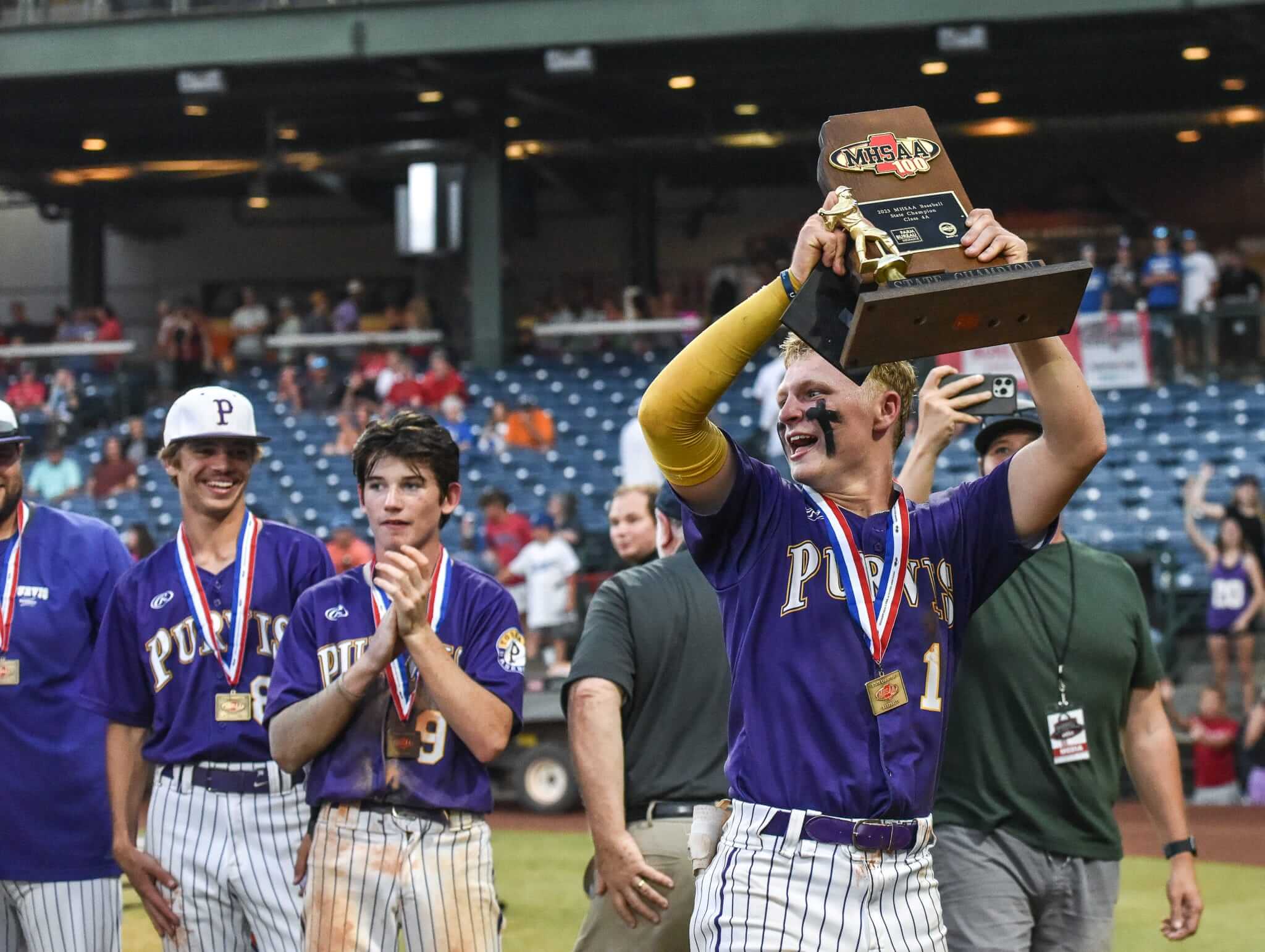
Position Player
High School
SS

Scouting Report
Bats: R, Throws: R
Carlson is a plus defender at short with a cannon of an arm, and he projects to enough power to get to 20-plus homers if he can shorten up his swing enough to make consistent contact. He bars his lead arm and his hands are so far back that he has trouble getting the bat head to the ball on time, so the power doesn’t always play in games and he’s very vulnerable to pitchers who can change speeds on him within at-bats. He’s a wizard on defense, though, with great instincts, range in both directions, and excellent hands, along with at least a 70 arm — he’s been up to 97 off the mound, although apparently he doesn’t want to pitch, and given his defensive prowess that’s the right call. He should have a high floor because of the defense, but there’s some risk in the hit tool here that he never gets to enough contact to stick in the majors; someone’s going to have to reduce the arm bar to untap his All-Star upside.
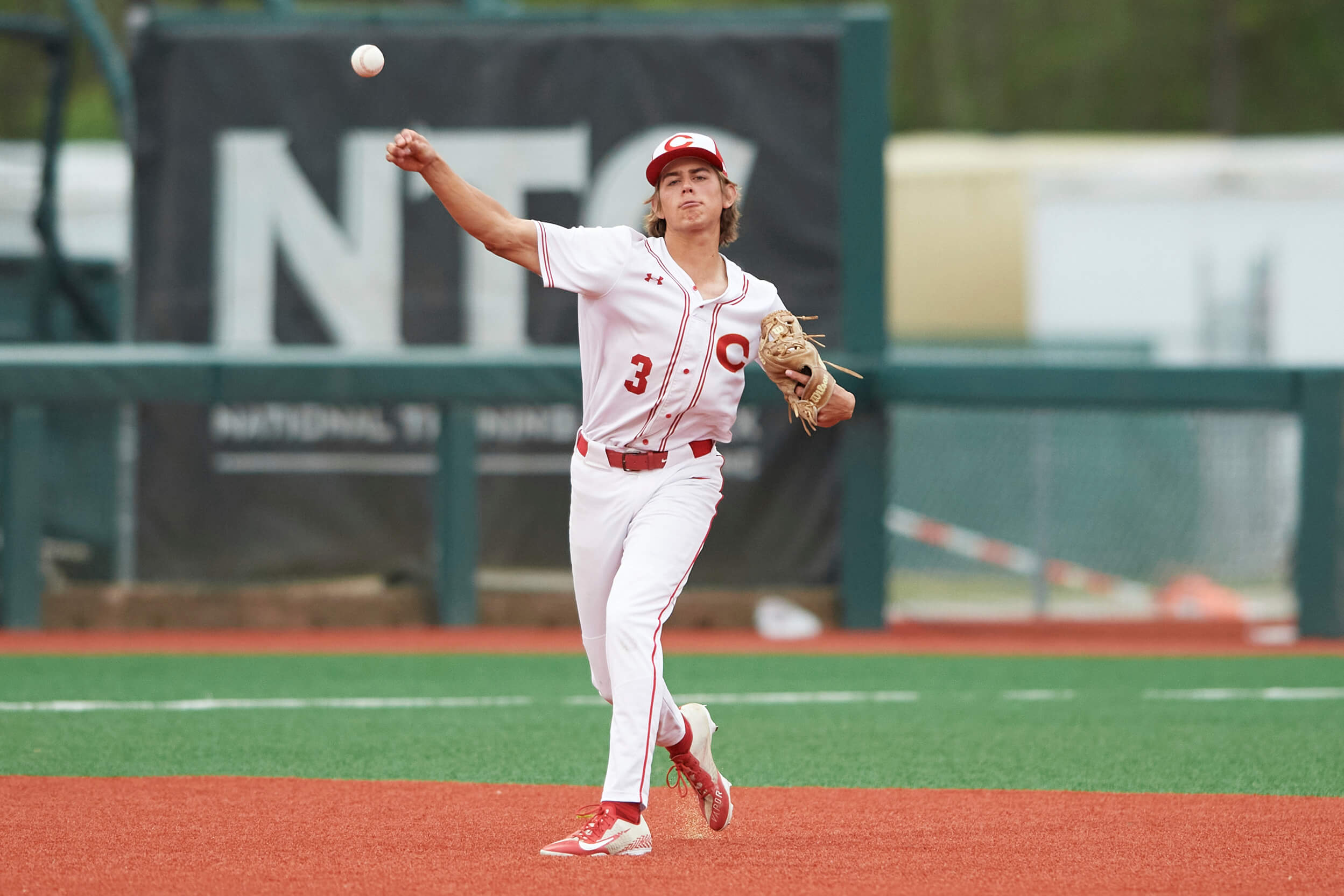
Pitcher
Position Player
High School
SS
RHP

Scouting Report
Bats: R, Throws: R
Fien is one of the bigger enigmas in the draft class, as he was clearly the best hitter on the showcase circuit last year, making a ton of hard contact against all manner of pitching, but didn’t have the same success this spring against lesser competition while playing for his regular high school team. At his best, Fien has excellent bat speed and plate discipline to match, rarely whiffing or chasing; in a modest sample last year, he swung at pitches beyond the shadow of the zone just 11 percent of the time. He showed at least 55 power and projected to plus, with such great feel to hit that he seemed like he’d be one of the first high school players selected. This year, he’s still making a lot of contact, but not the kind of hard line-drive contact that he made last summer. He still has great hand speed and loft in his finish to get the ball in the air, but he’s less fluid, top and bottom, and a little longer to the ball. The result is his timing has been off — but he has had it before, and that’s something that you can fix, a lot more easily than overhauling a swing or trying to teach someone to stop chasing sliders down and away. He has a 70 arm and while he’s almost certainly moving from shortstop to third base in pro ball, he’s a good enough athlete that he could be a plus defender at the hot corner. There’s some risk here given the performance this spring, but that looks like a buy-low opportunity for some team that probably thought in January it would have no shot to draft a player of his talent. He’s committed to Texas.
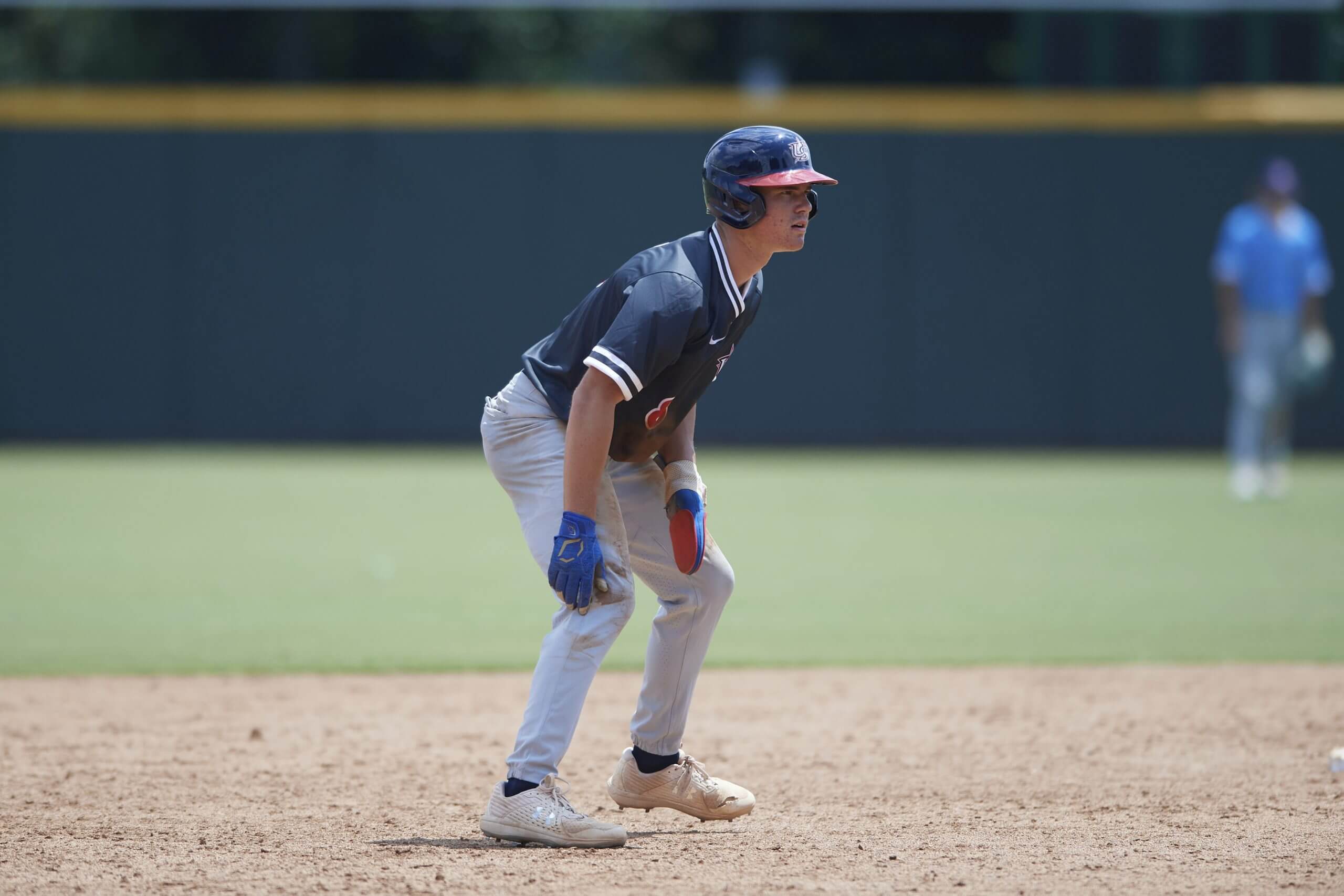
Position Player
High School
SS
3B

Scouting Report
Bats: R, Throws: R
A native Hawaiian from Wailuku, Aloy is a true shortstop and a superb athlete who led the Razorbacks with 20 homers (through the Regionals) and a .355 average this season. He’s not a runner but shows good instincts and lateral range, with plenty of arm for the left side of the infield; if he does eventually have to move off the position as he fills out, he should be an above-average to plus defender at third. He struck out 20.4 percent of the time this year, as he does chase pitches out of the zone, even those well out of the zone, at a higher-than-average rate. His main issue has been on breaking stuff, even when it’s coming from left-handers. He has a sizable leg kick and gets his front foot down late, after his hands have started, which could be one factor. He does hit the ball hard when he makes contact, though, with a hard-hit rate of 54 percent and 90th percentile EV of 107.2 mph, so there’s plenty of bat here if he can bring the contact rate up even half a grade. Just that one modest improvement would take him from a potential regular at shortstop to a potential star.

Position Player
4-Year College
SS

Scouting Report
Bats: R, Throws: R
Pierce is a no-doubt shortstop with excellent feel to hit, boasting a smooth right-handed swing that has enough loft for line drives; where scouts diverge on him is what kind of power he might have in the future. He’s a 70 runner with a 70 arm and shows great instincts in the field, with no consideration that he’ll have to move off the position at any point. He’s probably maxed out physically or close to it, with batted-ball data that points to above-average power but more below-average results in games. He made good swing decisions on the showcase circuit with strong whiff and chase rates. At worst he should be a utility infielder because of the shortstop defense and ability to put the ball in play. The ceiling is an occasional All-Star if he gets to enough in-game power. He’s committed to Georgia.
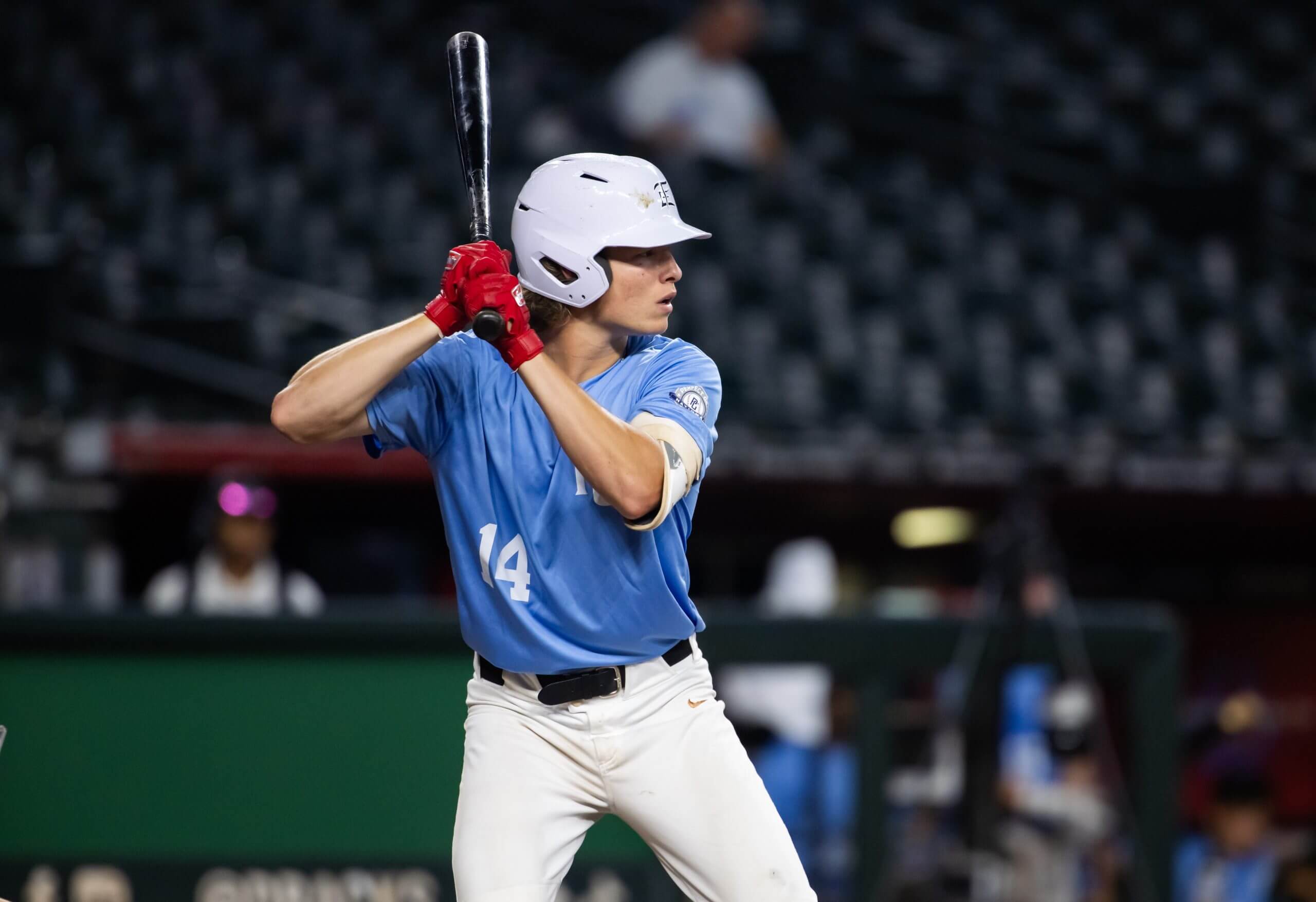
Position Player
High School
SS

Scouting Report
Bats: L, Throws: R
Cunningham is one of the better pure hitters in the draft class this year, on par with Gavin Fien and JoJo Parker, although he doesn’t offer the possible physical projection that those guys do as he’s already filled out. He has elite hand speed and rarely swings and misses, with a whiff rate of just 9 percent at tracked events in 2024, according to data from Synergy Sports. The swing is a little flat through contact, so the power potential here is limited unless someone can get him to loft the ball more. He has a 55 or 60 arm at shortstop and his hands are excellent; I’ve heard very mixed reviews on whether he’ll stay there, as he’s at least not the prototypical shortstop and it’s not clear if he has the lateral range to stick. Cunningham is listed at 5-10 but he’s shorter than that, maybe 5-8, which is also going to take a lot of teams out of the running (except Arizona), as will the fact that he’ll be 19 on draft day. If you believe in the defense, he’s an easy first rounder; if you think he’s a second/third baseman without enough power, he’s still a top 40-50 pick, at worst, because he has such good feel to put the bat on the ball. He’s committed to Texas.
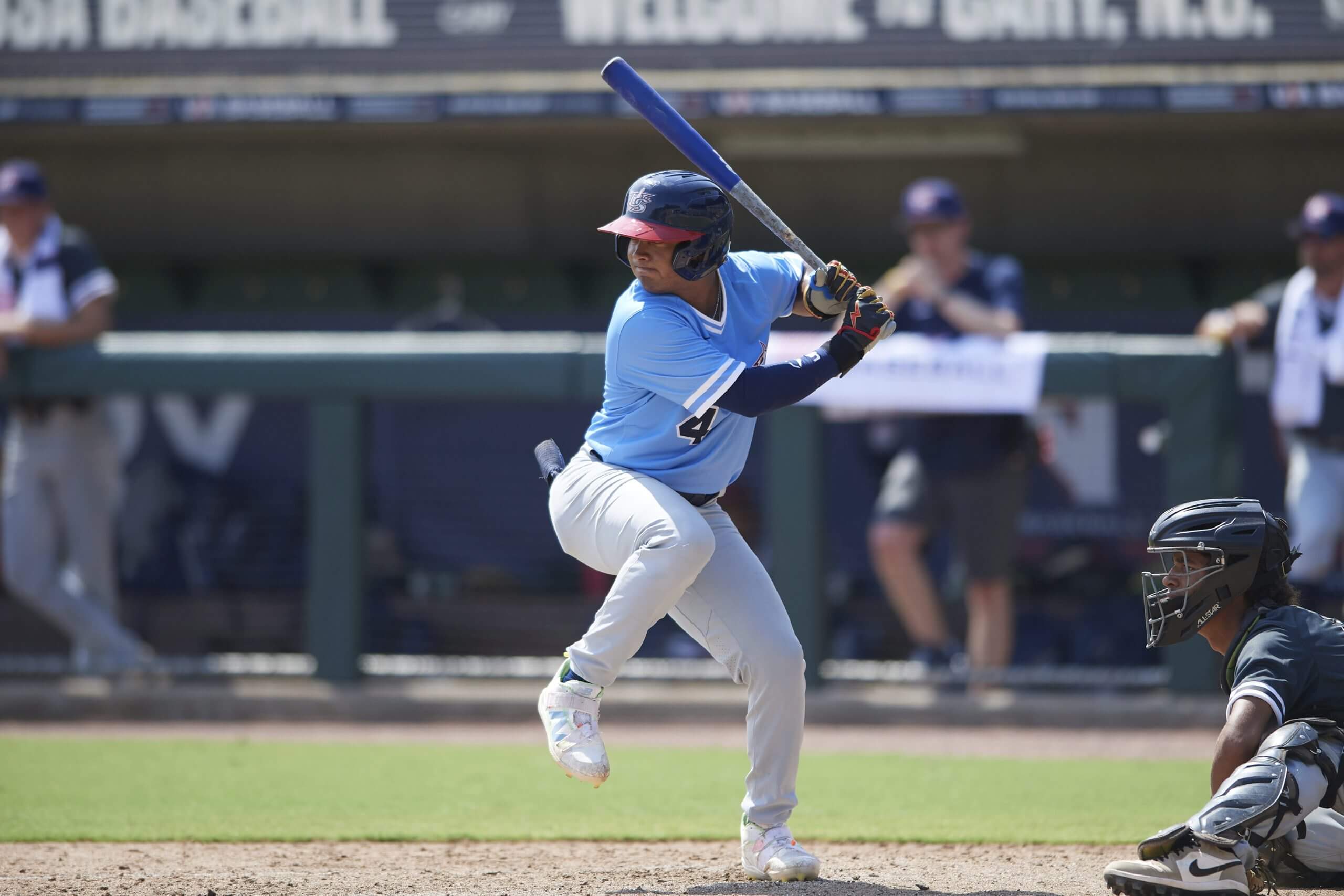
Position Player
High School
SS

Scouting Report
Bats: R, Throws: R
Bremner came into the spring as a potential top-five pick, but his stuff wavered and his results weren’t great, especially early in the season, and by the time he started pitching better a lot of teams up top had moved on. He has an elite changeup, probably a 70 on its own, with excellent fade, effective against hitters on both sides of the plate. His fastball has the velocity, sitting 94-96, but it’s too straight and he doesn’t command it well up in the zone. His slider would be at least an average pitch but he cuts himself off in his landing and can’t finish it out front, so while he gets good spin rates the pitch just doesn’t have the bite it needs to at least miss right-handers’ bats. He’s pretty athletic and he does throw strikes; he walked 19 batters on the season (6.1 percent), and in the last half of his year, covering seven starts, he walked 5.9 percent of batters while striking out 43.8 percent. There might be a mid-rotation starter here with some delivery help, and maybe the addition of a two-seamer.
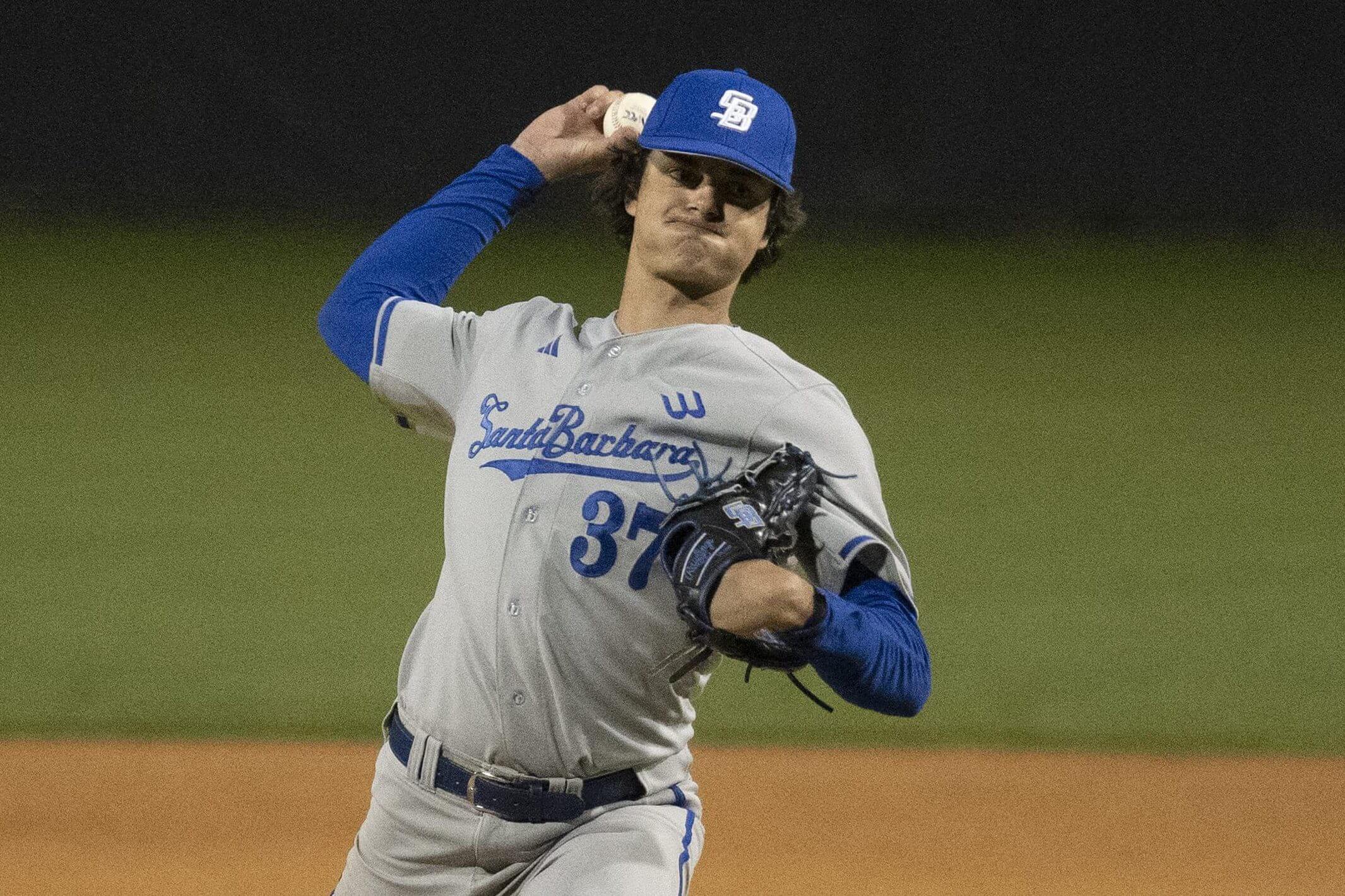

Scouting Report
Bats: L, Throws: R
Neyens has some of the best raw power of anyone in the high school class this year, getting up to 108 mph at showcases last summer, with a high-effort swing that boasts strong bat speed and puts the ball in the air a ton. He has hit well this spring against local competition, but at tracked events last summer/fall and this spring he’s shown too much propensity to whiff on pitches in the zone — 23 percent of the time he swings at them, including fastballs in the upper half. He doesn’t chase, with a swing rate on pitches out of the zone of just 11 percent in those same events, so the issue is contact on strikes, not ball/strike recognition. He has a strong arm and should be able to stick at third base, where the power would make him an above-average regular if he hits enough to get to it. If there’s a consensus on him now, it’s that we don’t know if his hit tool is advanced enough to support the rest of the package. He’s committed to Oregon State.
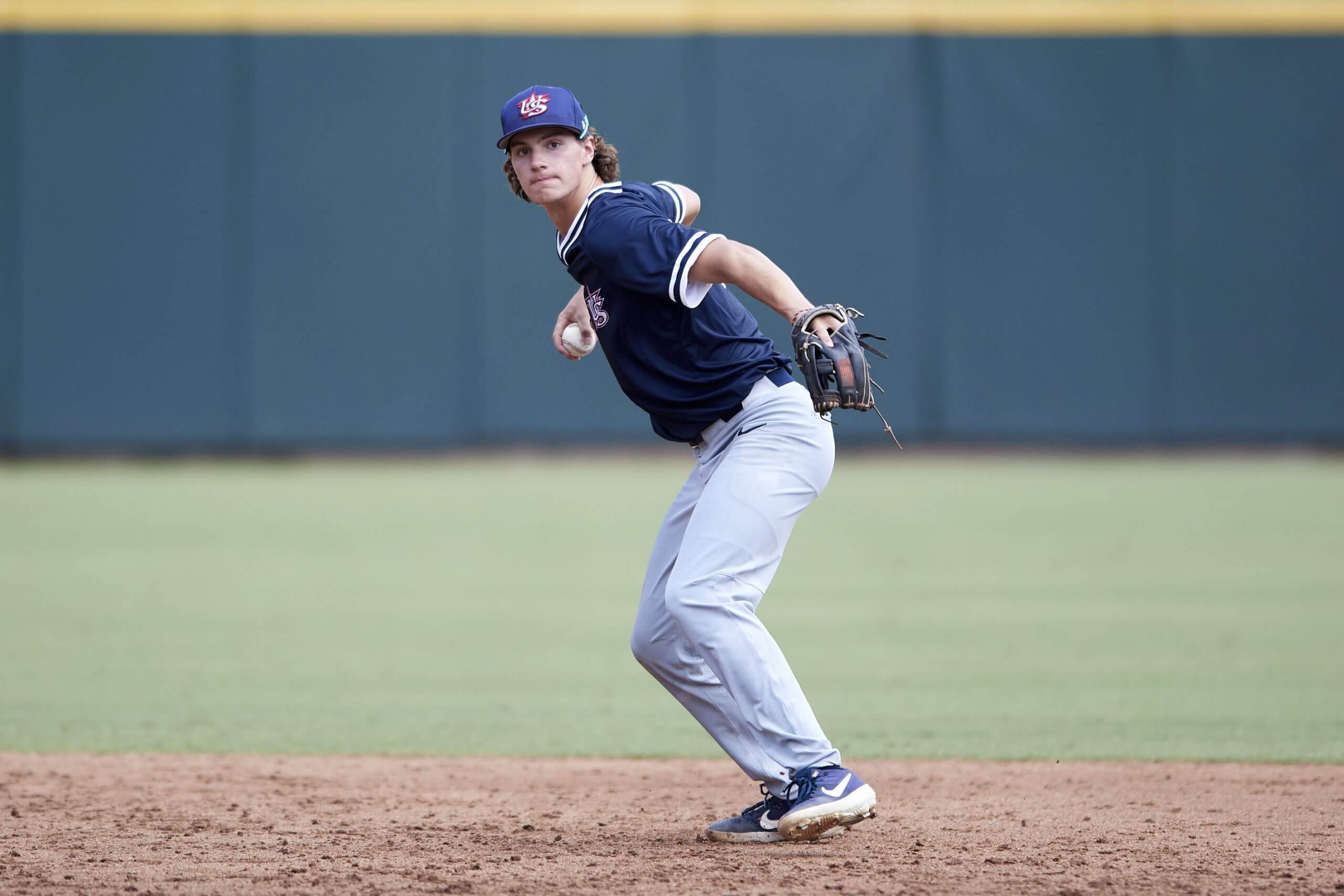
Position Player
High School
3B

Scouting Report
Bats: L, Throws: L
De Brun is a diminutive outfielder from the Pacific Northwest, like Corbin Carroll was; de Brun is listed at 5-10 but may be shorter than that, and like last year’s fun-sized first-rounder Slade Caldwell, he has excellent feel to hit and projects to stay in center field. He takes a solid stride to get his lower half involved, but it’s a slashy swing and he can wrap the bat a little behind his head, creating some extra length to the ball. With two strikes, however, he goes to the Juan Soto double-wide stance to trade some power for contact. He faces the same questions about his ultimate power level that all guys his size do; I’ve had scouts say he’s somewhere in between those two Diamondbacks players in power potential. I felt a little better about Caldwell’s impact, not for power but for consistent hard contact, just for comparison’s sake. De Brun is committed to Vanderbilt.
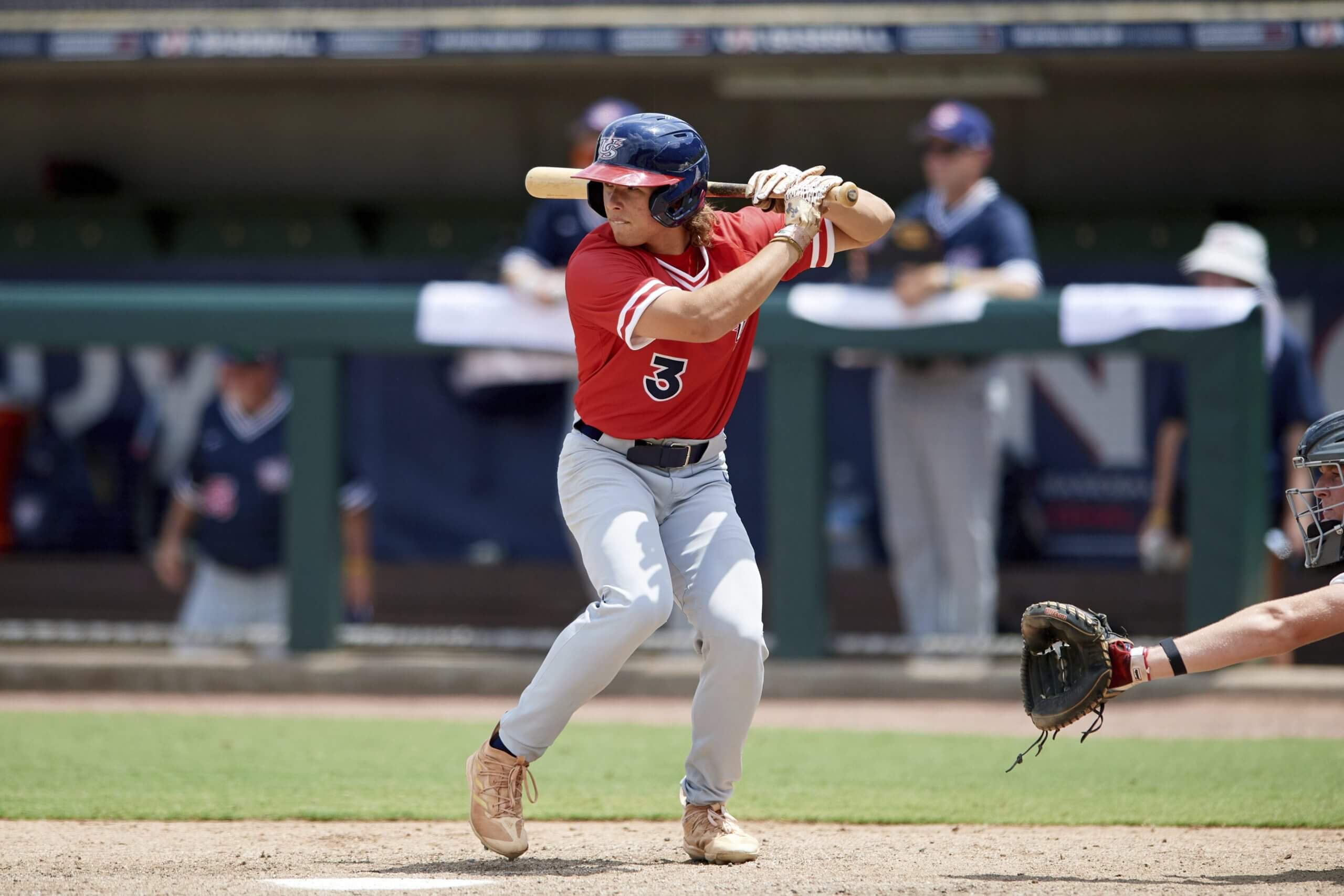
Position Player
High School
OF

Scouting Report
Bats: R, Throws: R
Houston is a no-doubt shortstop who’s boosted his performance and some of his batted-ball characteristics just enough to give him a chance to get into the top 10 in a draft class that’s weak up top. He set career bests in homers and steals this year while playing plus defense once again. The power is kind of an illusion, as Wake Forest plays in a shoebox, and 11 of Houston’s 15 homers this year came at home, mostly wall-scrapers that would be doubles or outs in a typical ballpark. He does have very strong hand-eye coordination and almost never whiffs on pitches in the zone, with a short swing that had him over a 50 percent groundball rate as a sophomore but down to 44 percent this year. He’s a high-floor, lower-ceiling prospect, unless someone foresees more power in his future than I do. He is a definite shortstop who hits the ball hard enough to keep his average up against good pitching, but probably doesn’t get above 10-12 homers a year.

Position Player
4-Year College
SS

Scouting Report
Bats: B, Throws: R
Bodine can catch and he doesn’t strike out — he struck out 8.1 percent of the time last year, and so far in 2025 that’s down to 7.5 percent, through the Regionals. It’s less a matter of plate discipline than one of not swinging; he swings less than 40 percent of the time, although when he does swing, he rarely whiffs, especially on fastballs. The result is that he’s walked more than twice as often as he’s struck out, but this year, with the Division 1-wide drop in power, he’s gone from hitting 20 homers in his first two years to just three in 2025. He’s hit lefties this season, reducing some questions of whether he’d be a platoon bat. He receives well and has a plus arm, throwing out just over a third of opposing runners this spring, although he could use some help to get a more consistent release. He’s the second-best catcher in the class, and that’s usually a top-30 or top-40 pick in any draft.
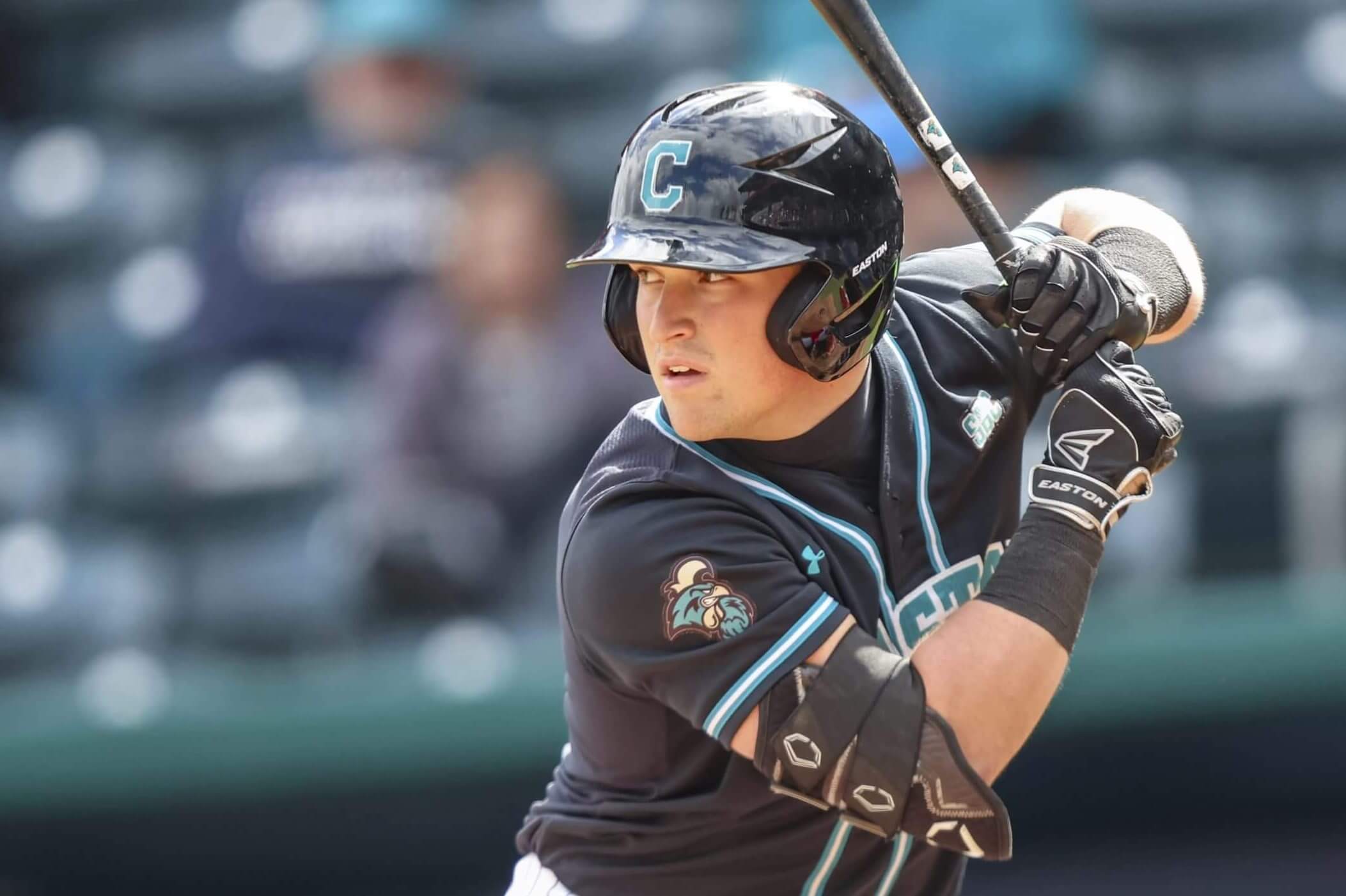
Position Player
4-Year College
C

Scouting Report
Bats: R, Throws: R
Hernandez is the consensus top high school pitcher in the 2025 draft class, anointed as such as a junior and only seeing his stock increase with his velocity this year. He’s been up to 100 mph on his four-seamer, although the velocity, which is more typically 94-97, isn’t the main attraction. He has at least a 60 changeup and an above-average curveball as well, along with a slider that’s extremely inconsistent right now but that I think will improve significantly once he gets to a team with a good pitching lab — he can spin the ball and he has plenty of arm speed, so it’s hard to imagine him not getting to a plus slider. The changeup has continuous tumbling action to it and it’s very deceptive right out of his hand, while the curve is a classic two-planer with a high spin rate as well. The four-seamer is dead straight and hitters who can catch up to the velocity can square it up, even at the high school level. He takes a huge stride toward the plate to generate all of that velocity, with a head-snap at release, and his arm can struggle to catch up, which may be why the breaking stuff isn’t consistent yet. The history of high school pitchers taken in the first round is dismal, however, given their high attrition rates, and as talented as Hernandez is, he’s still in that same category. There’s at least No. 2 starter upside here, but the risk of any high school arm is that they get hurt or don’t have the command and control to get to the majors.
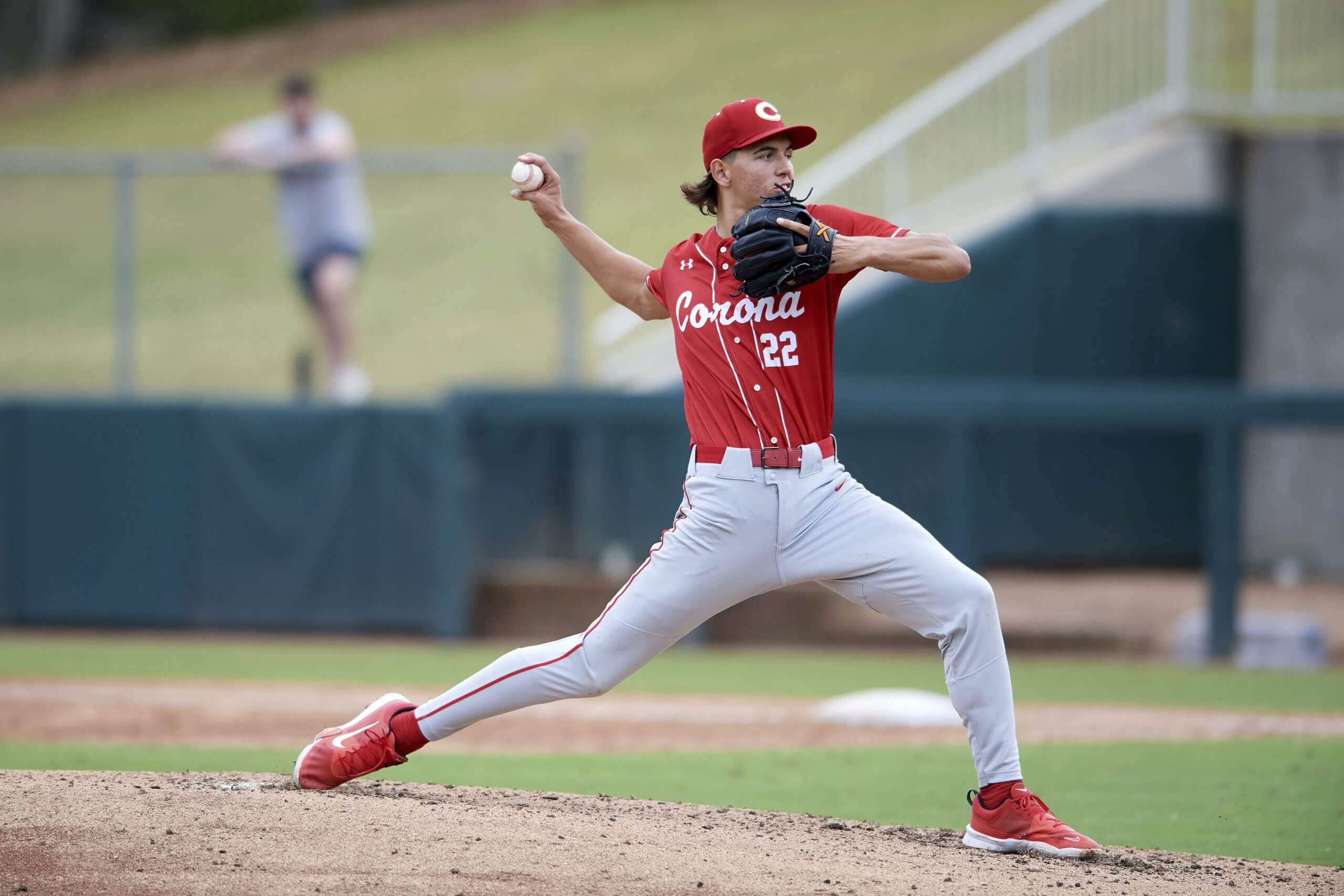

Scouting Report
Bats: L, Throws: R
Cannarella finished the 2025 season with a .353/.479/.530 line, a disappointing result for someone who came into the spring as a potential top-10 pick. He had shoulder surgery prior to the season and never looked right in the field or at the plate, whether it was a slow recovery or something else bothering him. He went from 11 homers as a sophomore to just five this spring, with his exit velocity numbers down a little across the board from last year and his hard-hit rate dropping from 52 percent to 44 percent. He still has a good eye and walked more than he struck out this year, and continues to show plus range in center, although this year he just couldn’t throw. As a sophomore, he looked like he could be a high-average centerfielder with plus defense, fringy power, and solid on-base skills. Maybe that guy is still in there if you get him fully healthy, which would make him an interesting buy-low opportunity at the end of the first round.
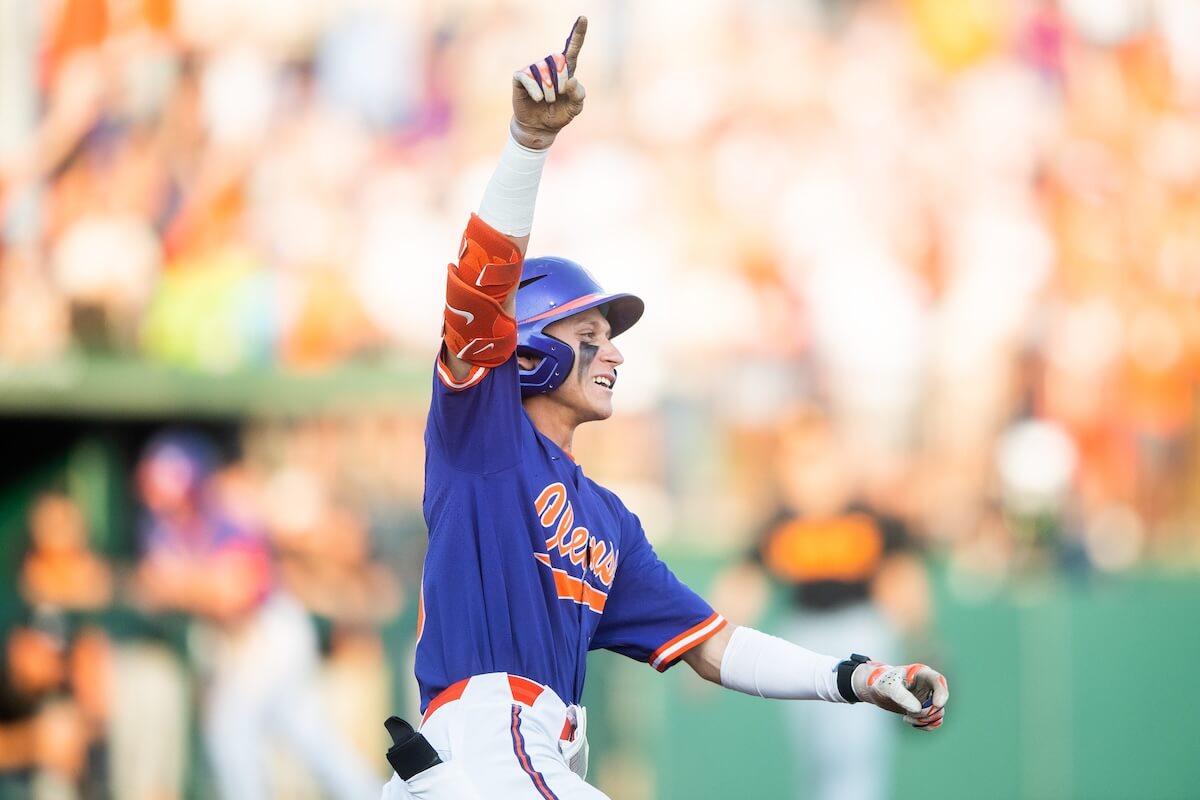
Position Player
4-Year College
OF

Scouting Report
Bats: R, Throws: R
Quick made one start in 2024 before undergoing Tommy John surgery, then returned this spring like nothing had ever happened, working 95-99 on a cautious program that has had him top 90 pitches just once all season. He throws four- and two-seamers, although the latter doesn’t have a ton of sink, with a 55 changeup that is very deceptive out of his hand and has some late fading action to it. He also throws a slider that has big break from high spin rates, but changes his arm slot enough — by about 8 inches of release height — for hitters to pick it up, and has begun working in a cutter at 91-93. His arm is often late, which may be contributing to the issues with the slider, and he comes back across his body with some head-snap at release. It all points to some reliever risk even before you consider the injury, but he’s also someone who has such a great foundation of arm strength, ability to spin the ball, and a present off-speed weapon in the changeup that he could be a No. 2 starter or better with some mechanical fine-tuning.
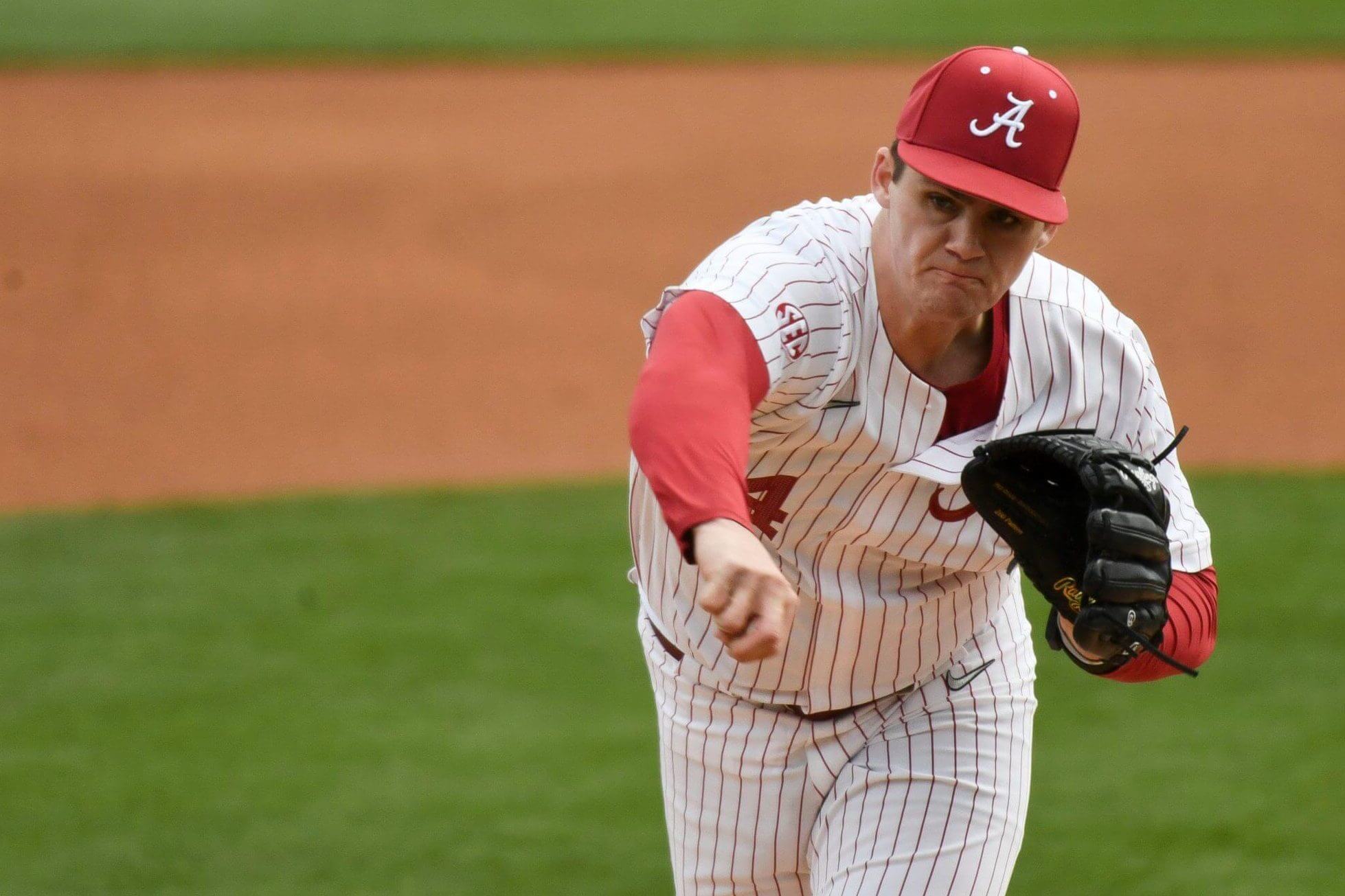

Scouting Report
Bats: L, Throws: L
LaViolette was overhyped coming into the year, getting some 1-1 chatter despite the fact that he struck out over 80 times as a sophomore, but his dismal performance this spring ended that talk and probably pushed him to the back of the first round or beyond. LaViolette hit .258/.427/.576 this spring with 66 strikeouts, a 24.4 percent K rate, due in large part to how often he whiffs on pitches in the zone — just a shade under 20 percent of the time. He has no load in his approach, making very hard contact because he’s extremely strong and has enough hand speed to get the bat going in time to catch up to good velocity, with a hard-hit rate on the year of 53 percent. He does know the strike zone well enough to see solid OBPs with power, likely pulled down by a low batting average and probably a strikeout rate above 25 percent when he gets to Double A. I don’t think he’s a center fielder but would expect at least 55 defense in right. If you think you can solve some of his in-zone miss, whether it’s by adjusting his swing to give him a load and some more rhythm or if you think it’s about pitch recognition, he does have 30-homer upside. There’s a ton of risk here, though, just as there was last year with Orioles first-rounder Vance Honeycutt, who is struggling with contact in High A right now.
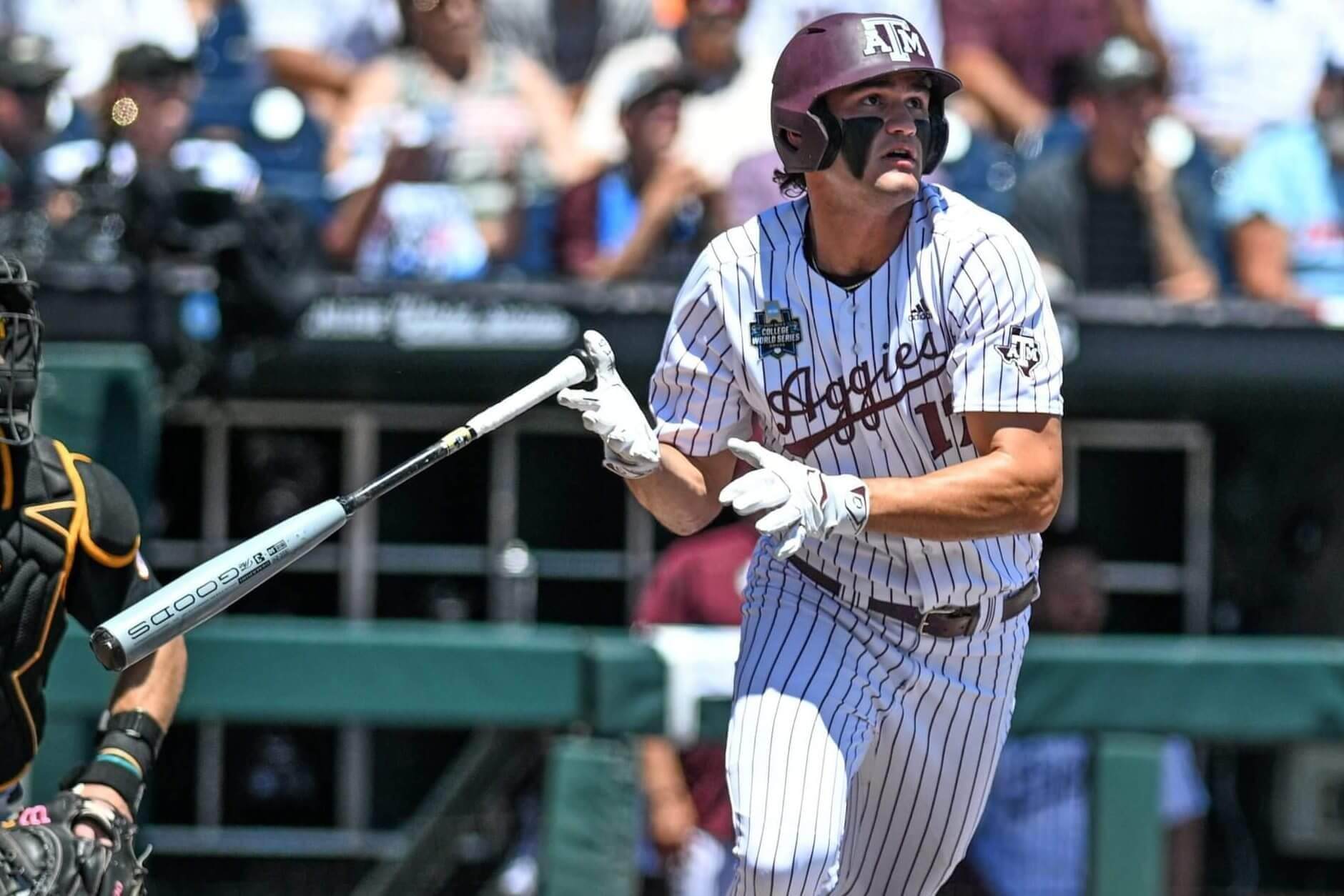
Position Player
4-Year College
OF

Scouting Report
Bats: L, Throws: R
Davalan is an age-eligible sophomore from Waterloo, Ontario in Canada, who hit .350/.434/.573 in his first year with the Razorbacks, with more walks than strikeouts through the Regionals and at least average power. A transfer from Florida Gulf Coast, Davalan is an extreme contact hitter, with a whiff rate last year of 15 percent and just 11 percent this year despite the jump in competition. It’s not a short swing, however, and he gets his hands back enough to generate plenty of bat speed for hard contact, with a hard-hit rate of 47 percent this year and peak EV over 110. He can definitely play an above-average left field, with a handful of games in center this year and on the Cape last summer; if you think he’s a center fielder, he’s probably a top 15-20 pick.
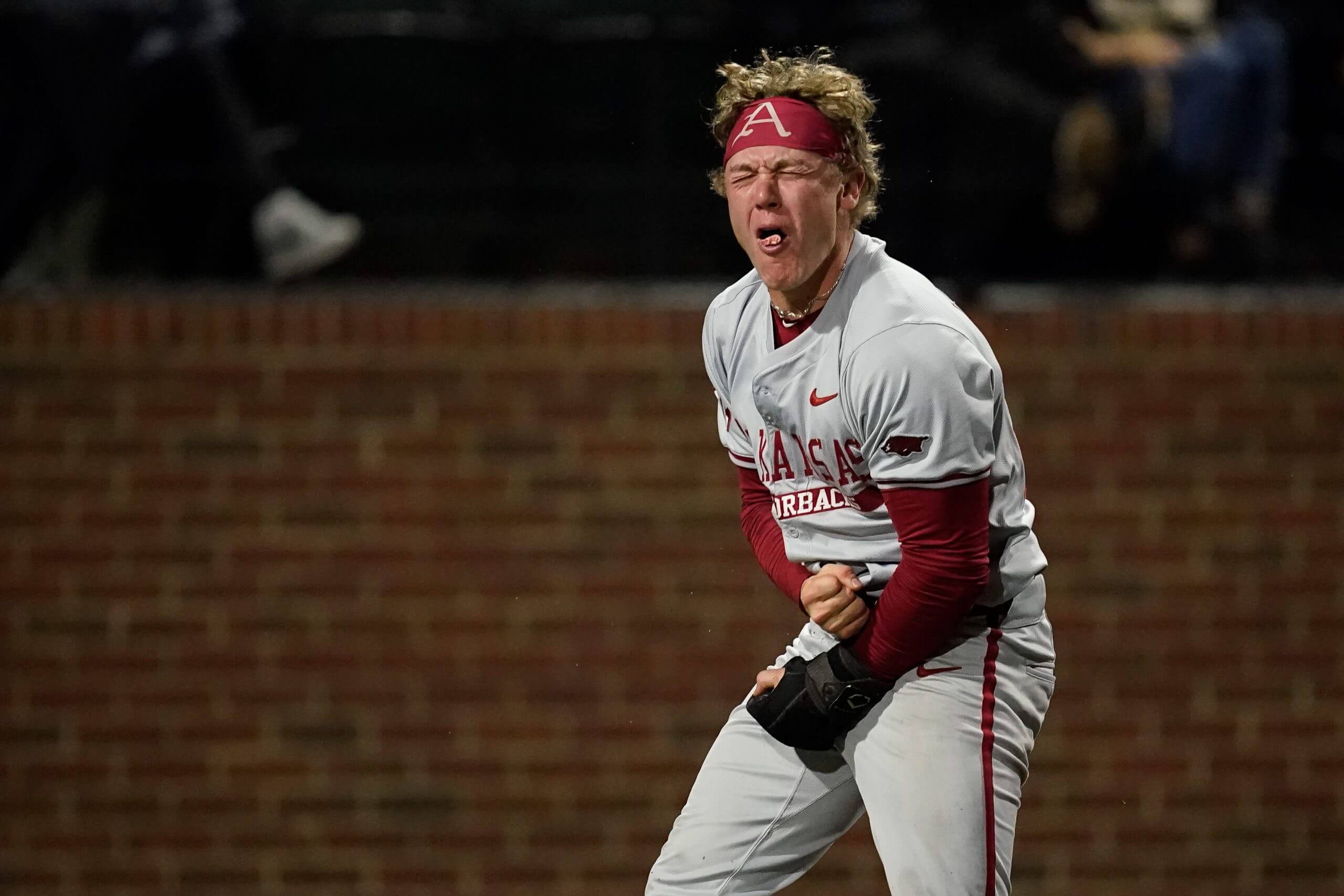
Position Player
4-Year College
OF

Scouting Report
Bats: L, Throws: L
Neville was a top-100 draft prospect out of high school in 2022, but had a strong commitment to Arkansas and ended up going in the 18th round to the Reds. He went to Fayetteville for one year, barely playing, and transferred to Oregon, where he’s put together a huge breakout season in 2025 as the Ducks moved from the Pac 12 (RIP) to the Big Ten, leading Division I in homers through mid-May. Neville is a 55 runner who projects to stay in center field, probably an above-average defender there as his reads on balls give him a little extra range beyond his pure foot speed. He has at least 60 power, as he’s produced contact over 110 mph several times, and the swing is geared to pull the ball in the air but also allows him to drive the ball the other way if the pitch is further away from him. There are concerns about the bat even with his performance this year — the change in conferences means Neville has faced worse pitching this year than he did in 2024, which has likely contributed to the declines in his whiff and strikeout rates, and in a brief stint in the Cape Cod League, he struck out in nearly half of his trips to the plate (19 K in 39 PA), even whiffing on a lot of average fastballs. He might not hit for a high average, making up for it with all of his secondary skills, including strong walk rates, power, and defense, enough to see an average to above-average regular ceiling and good chance for an extra outfielder as a reasonable floor.
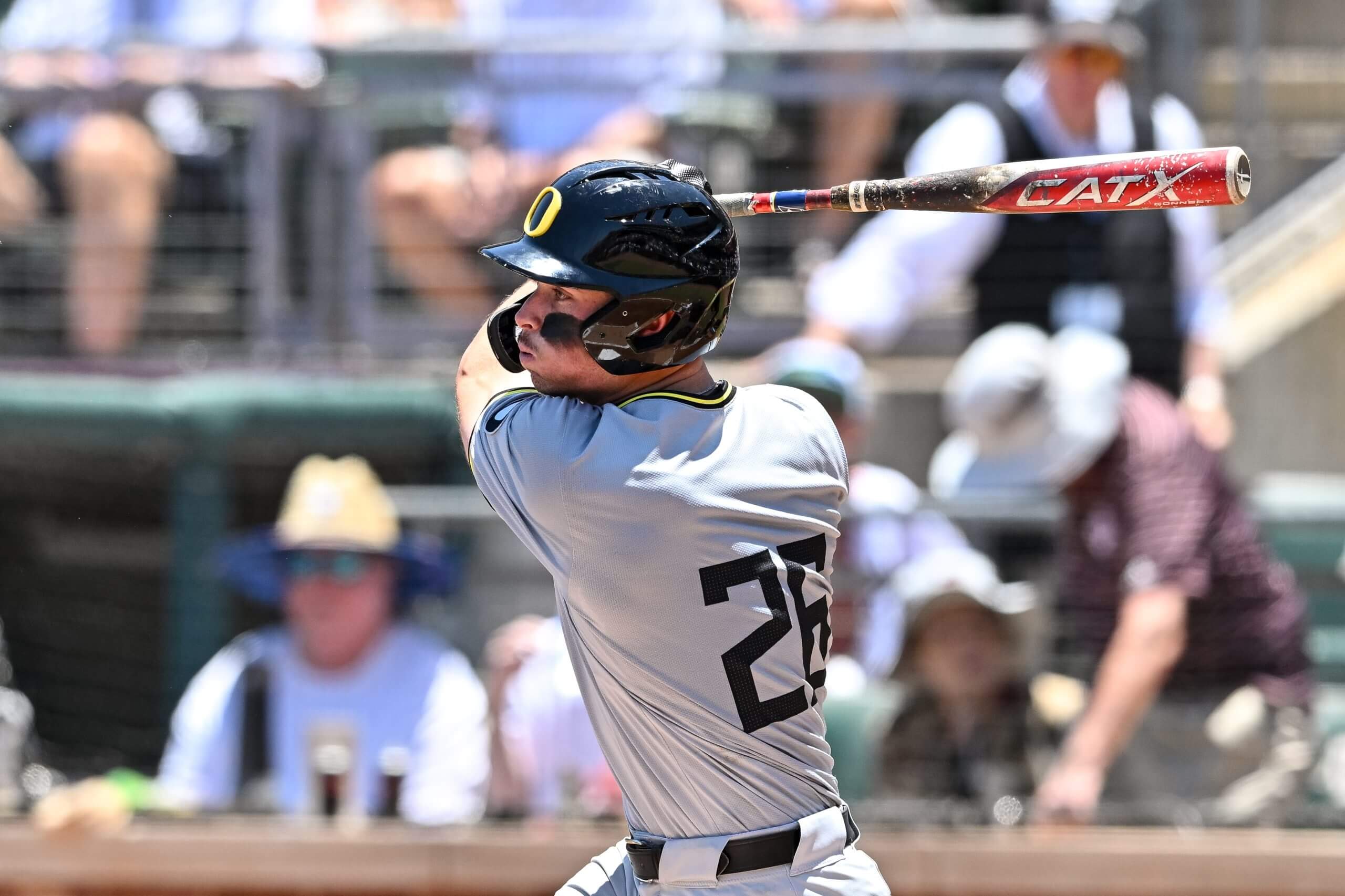
Position Player
4-Year College
OF

Scouting Report
Bats: L, Throws: R
Stevenson is a power-hitting catcher who smacked 18 homers this year for the Tar Heels through the Regionals and drew 58 walks, but who hit a disappointing .254/.422/.555 overall with a 24.7 percent strikeout rate, numbers that may knock him out of the first round and would certainly do so if he weren’t a catcher. Everything else about him would seem to indicate that he’s one of the best prospects in the draft: He makes a ton of hard contact, he knows the strike zone and he’s good enough to stick at catcher. His hard-hit rate of 57 percent was one of the best in Division I this year, and he topped out at 114.6 mph, with a strong but simple swing that I don’t think will require much if any adjustment in the future. His main issue is that he has no two-strike approach at all; if anything, he has an anti-approach, as he swings 32 percent of the time before he gets to two strikes and 49 percent in any two-strike count. He chases more and he whiffs more in zone in those counts, so it’s easy to see how he can be a high-strikeout guy with everything else he does well. He’s a good blocker but a below-average receiver, and has a 55 arm that plays up because he’s pretty accurate. He should be an everyday catcher, despite the low batting average this year. He’s a draft-eligible sophomore who’ll turn 21 about 10 days after the draft.
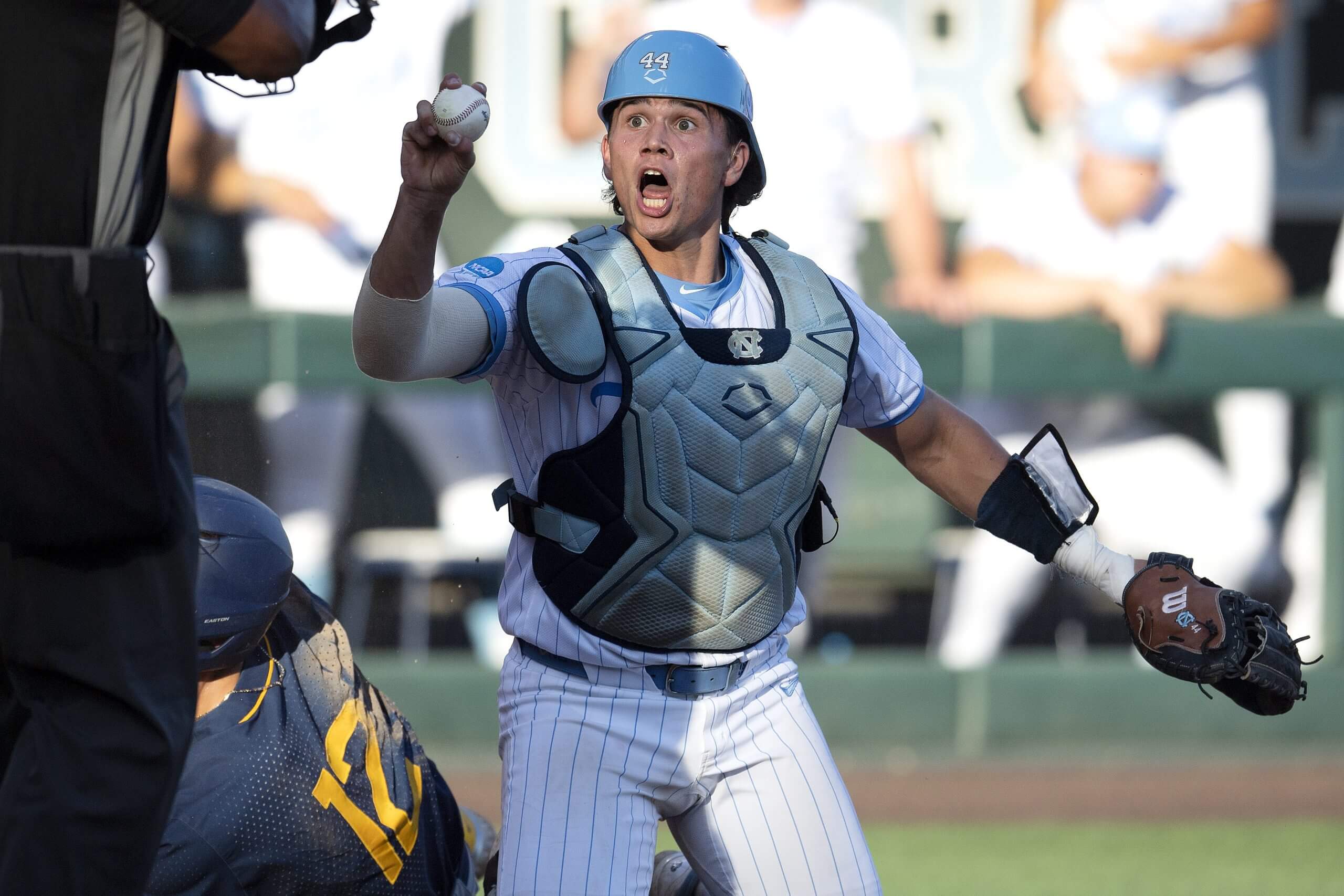
Position Player
4-Year College
C

Scouting Report
Bats: R, Throws: R
Hammond is a two-way player right now but his pro future is as a shortstop who hits for power. He’s an excellent athlete with plus raw power and a 70 arm, moving well at shortstop with the potential that he’ll just get too big for the position and end up a plus defender at third. His approach is the main question, and what it implies about his future hit tool; he doesn’t swing and miss much but he will follow breaking stuff out of the zone, especially right-on-right. Hammond can show bat speed, but not bat control, with the hope that that improves as he fills out, particularly if his wrists and forearms get stronger and he can maintain his bat path more through the zone. It’s 20-plus homer power and the chance for solid OBPs somewhere on the left side of the infield. He’s committed to Wake Forest.

Position Player
Pitcher
High School
3B
RHP

Scouting Report
Bats: L, Throws: L
Root has a plus curveball and plus changeup, with an athletic, repeatable delivery, helping him to a 31.6 percent strikeout rate this year, but his fastball plays well below its velocity and he has just a 9 percent whiff rate on the pitch through the Regionals this year. He dominated non-conference competition but had more trouble with walks and hard contact in the SEC, with a 4.97 ERA in-conference versus 1.72 outside of it. The transfer from East Carolina has a true five-pitch mix, with a cutter and slider in his arsenal as well, and as a result he can work away from the fastball more than most pitchers, throwing it 37 percent of the time this season — and that might still be too often, given the amount of hard contact he allows on it. He’s been up to 98 and sits 93-95, but the pitch is very straight and he tries to live with it middle-up, whether in or out of the zone. He holds his stuff deep into games and has multiple weapons to get batters out, so I don’t see any reason to give up on him starting. Someone will have to either change his fastball shape (difficult) or alter his pitch mix (easier) to get him to play to his strengths so he can be at least a No. 4 starter in the majors.
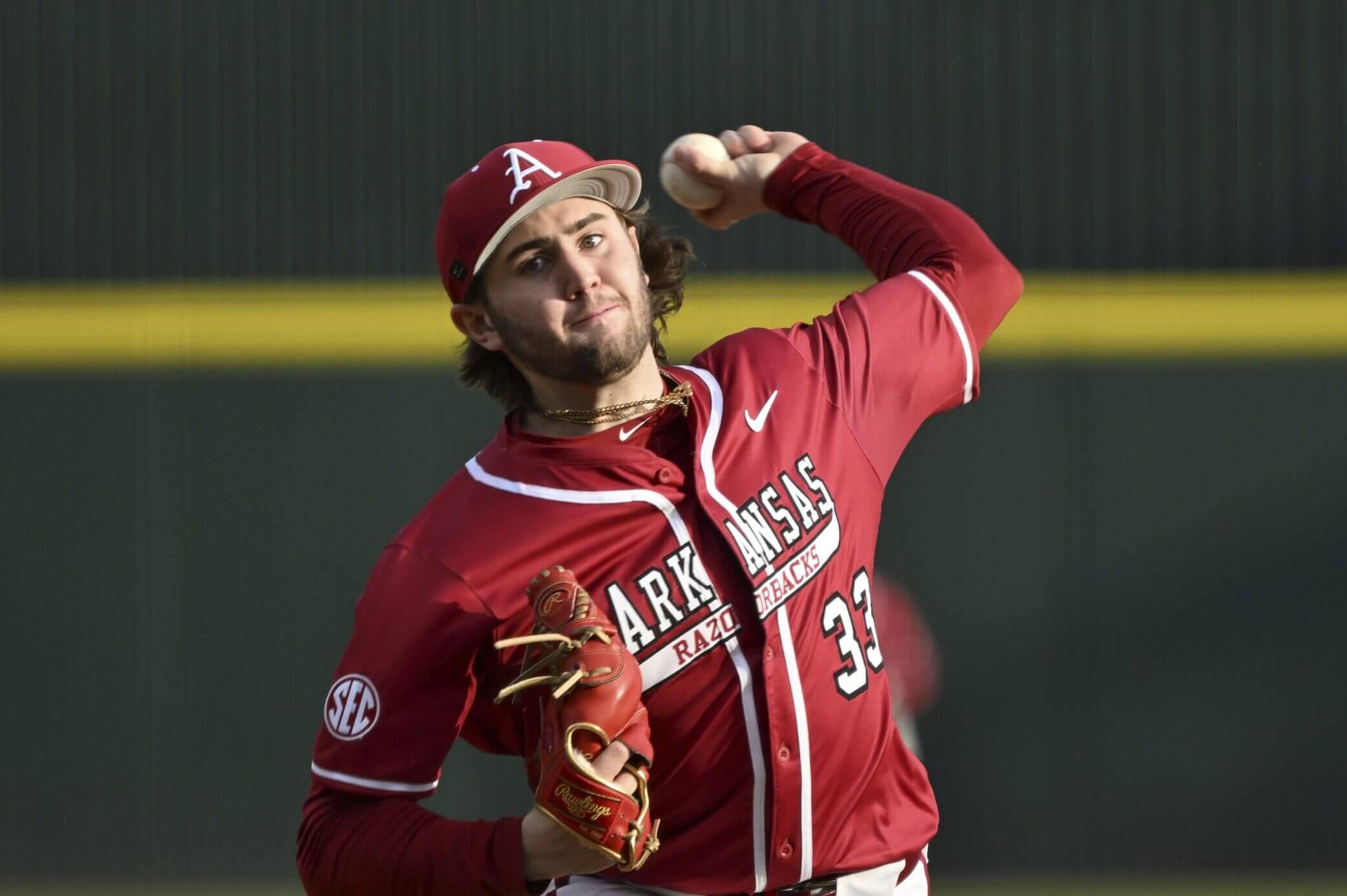

Scouting Report
Bats: L, Throws: R
Mitchell was one of the most advanced and disciplined hitters on the showcase circuit last year, with whiff and chase rates of 16 percent each in almost 400 pitches at tracked events; on pitches well out of the zone (WOOZ?) his chase rate dropped to just 7 percent. He takes a long stride forward but keeps his weight back with excellent balance through contact, with fringy power but some projection to get to average. He doesn’t throw well at all, however, and will have to move off shortstop, possibly to second base, more likely to center, and in the worst-case scenario to left. He’s committed to Georgia Tech.
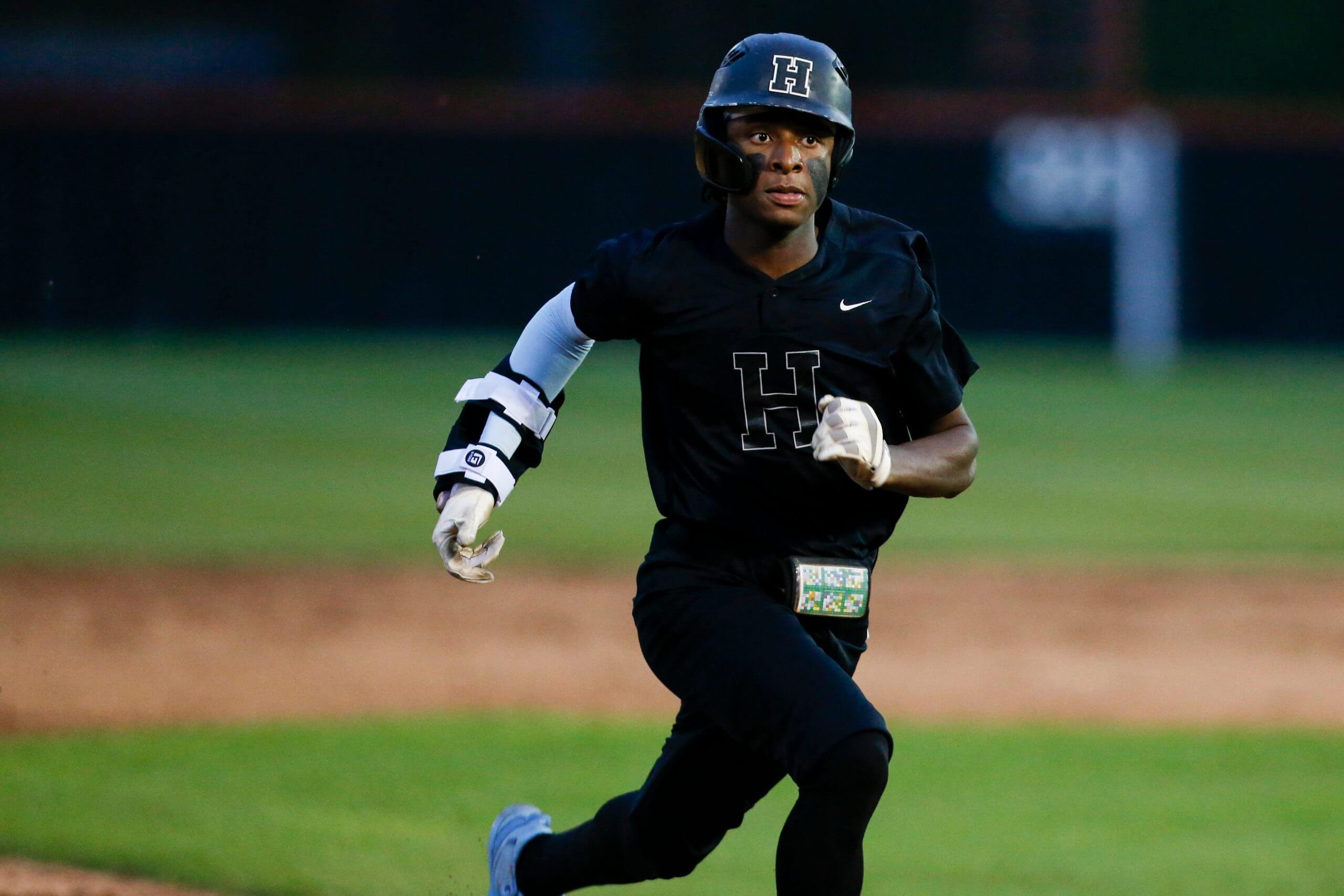
Position Player
High School
SS

Scouting Report
Bats: R, Throws: R
If Wood hadn’t missed a month-plus with a shoulder impingement, he’d be an easy first-round pick, as his fastball-curveball combination is as good as any two-pitch mix from a college righty in this draft. Wood made College World Series history by throwing the first no-hitter in the event since 1960 with a 119-pitch performance against Murray State. He’s been up to 98 and sits 95-96 with explosive ride on the pitch, with hitters pathetically whiffing 44 percent of the time on the fastball, then he hits ‘em with the 12/6 hammer at 83-85 or so, and there’s just a pile of ashes in the batter’s box. He does have a promising slider to give him something to pitch east-west as well, although he doesn’t have anything for lefties and they’ve slugged over .500 against him this spring. That’s the second issue, after the shoulder, and the third is that despite the 5 percent walk rate he’s posted through Regionals, it’s 40 command — he’s just blowing guys away, but he’s made enough mistakes in the zone, especially with the fastball, to allow five homers in 25 innings and post a 5-plus ERA before his brilliant CWS performance. The delivery has some nonsense in the back, but he’s on time out front and gets to his release point from a three-quarters slot pretty consistently. It is so easy to call him a reliever given all of the caveats, and how many pitchers end up in the ‘pen anyway, but you have to see if he can stay healthy and develop into a starter given the foundation here.
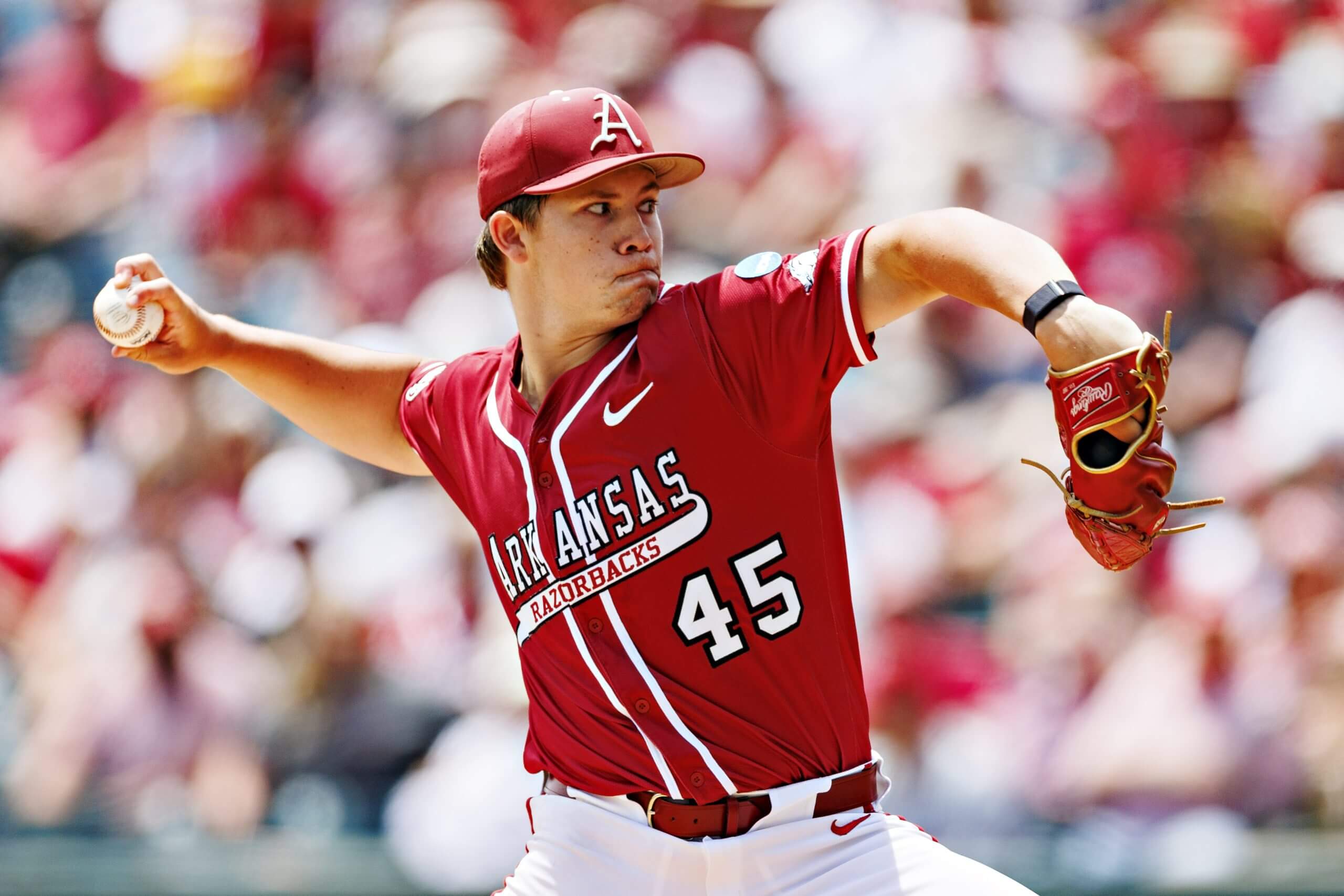

Scouting Report
Bats: R, Throws: R
Forbes has missed time the past two years with various injuries, but he’s missed a ton of bats when he’s been able to pitch, striking out 36.7 percent of batters this year heading into the Super Regional (where he’s struck out six of 16 batters as I type this). He’s a fastball/slider guy, up to 100 on the four-seamer, with two variations on the slider, coming from a low three-quarters slot that gets some sweeping action to both breaking pitches. He barely uses his below-average changeup because he hasn’t had to; he’s been more effective against lefties this year, giving up six of the seven homers he’s allowed to righties. I’ll be shocked if that holds up in pro ball — he doesn’t have any pitch that consistently moves away from lefties, and the best he can do is spin a slider that breaks down more than it breaks toward a left-hander’s bat. It’s a high-stress, slinging arm action, which also doesn’t generally point to future command; he’s given up too much hard contact for this quality of stuff and he’s walked 10.9 percent of batters he’s faced this year. There’s starter upside here with the velocity, the plus slider, and the size. To get there, he’ll need another pitch and probably needs at least another half-grade of control.


Scouting Report
Bats: R, Throws: L
Thompson has a low-90s fastball that’s hard to hit when he lets it ride up in the zone, and when he pairs that with a 70 changeup, he’s extremely effective against hitters on both sides of the plate. He’s also got an above-average curveball and average slider, and throws strikes, with a 7.9 percent walk rate this spring, although it’s control over command. He generated over 30 percent whiff rates on all four pitches this year, but the changeup stands out — hitters fanned on it 52 percent of the time they swung, as it has good late tumble and a little run to it as well. He seems like a definite starter, with no platoon split at all this year, who just needs to tighten up his fastball command to try to reduce the amount of hard contact he allows to become a mid-rotation guy or better.
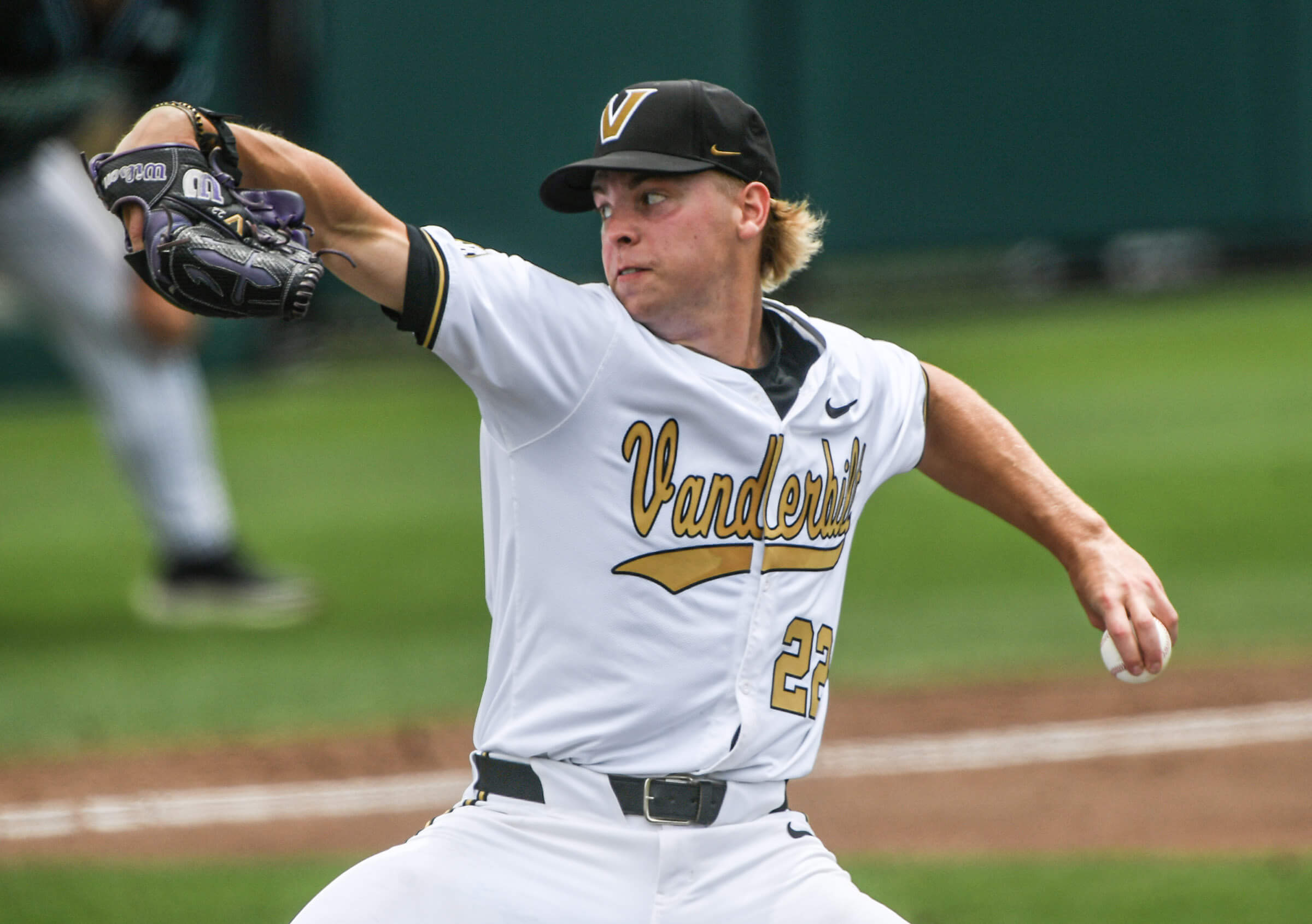

Scouting Report
Bats: R, Throws: R
Curley has excellent feel to hit with a simple swing that gets the ball in the air, although as the season went on he started to have more trouble picking up off-speed stuff from the better pitching in the SEC. He rarely chases pitches well outside of the zone (10 percent this year on pitches beyond the “shadow,” down from 14 percent last year), and makes enough contact in the zone to project an average hit tool, although his performance in conference is a little concerning. He can get to good velocity, but he’ll have to work on pitch recognition at some point in the high minors, maybe in Double A where he’ll see better secondaries on a consistent basis. He’s not a shortstop and probably has his best shot to stay on the dirt at third base. He’s draft-eligible as a sophomore, as he turned 21 in April.
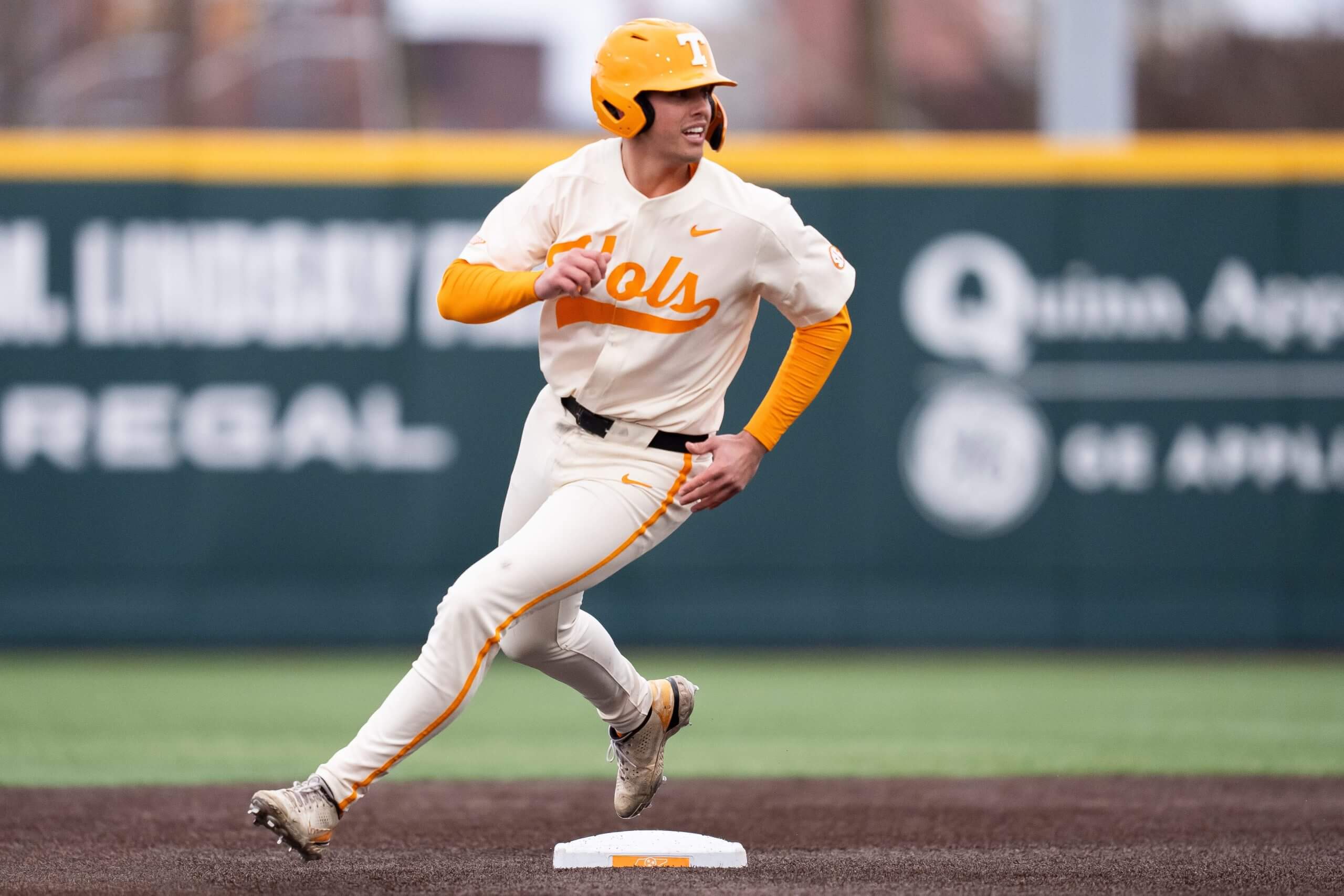
Position Player
4-Year College
SS
3B

Scouting Report
Bats: R, Throws: R
Lombardi was one of the best two-way players in Division I this year, hitting .273/.392/.453 as a center fielder and first baseman while posting a 2.14 ERA with a 43.5 percent strikeout rate over 42 innings as a swingman. His future is on the mound, however. He’s up to 97 with tremendous carry and pairs it with a power curveball with sharp downward break, showing enough feel for a changeup to see a future starter. He walked 12.5 percent of batters faced this year, a little too high, although that may come down if he’s given one consistent role. It’s a big upside play on a mid-rotation or better arm.
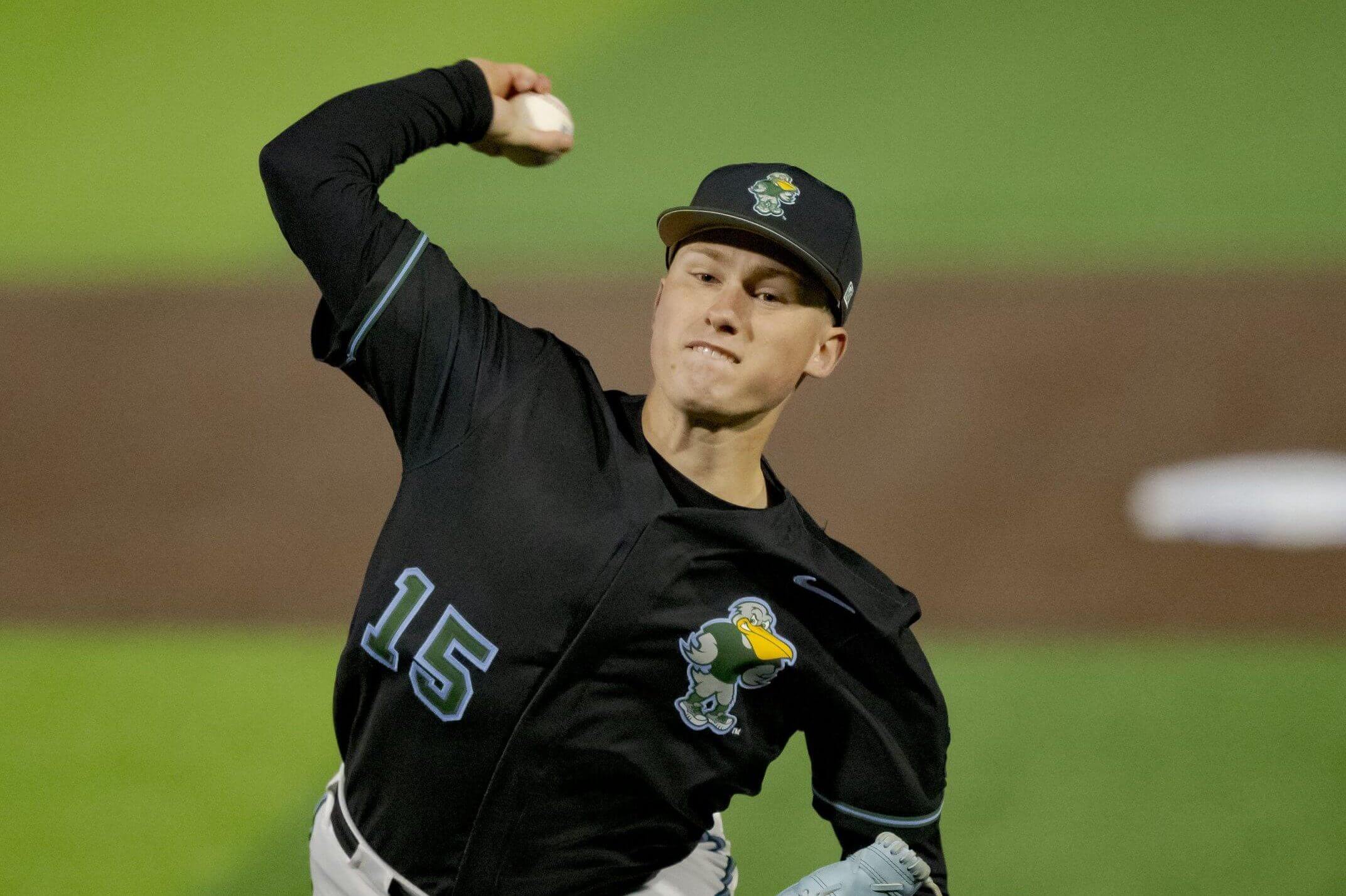
Pitcher
Position Player
4-Year College
RHP
OF

Scouting Report
Bats: R, Throws: R
Hall is an 80 runner and definite shortstop who’s going to be a favorite of teams that go for high-upside athletes over present performance or metrics. He has excellent bat speed and can hit a fastball, with close to average power already at age 17. He can’t hit breaking stuff, though, with whiff rates near 50 percent when he saw them at tracked events last summer/fall, although the sample isn’t huge because he only reclassified into the 2025 draft in December. Analytical models will love his age and his speed, but the swing-and-miss on sliders and curveballs is a real concern and I think reason enough for him to go after the first round, even with the potential upside of a 50-steal shortstop with 12-15 homers.
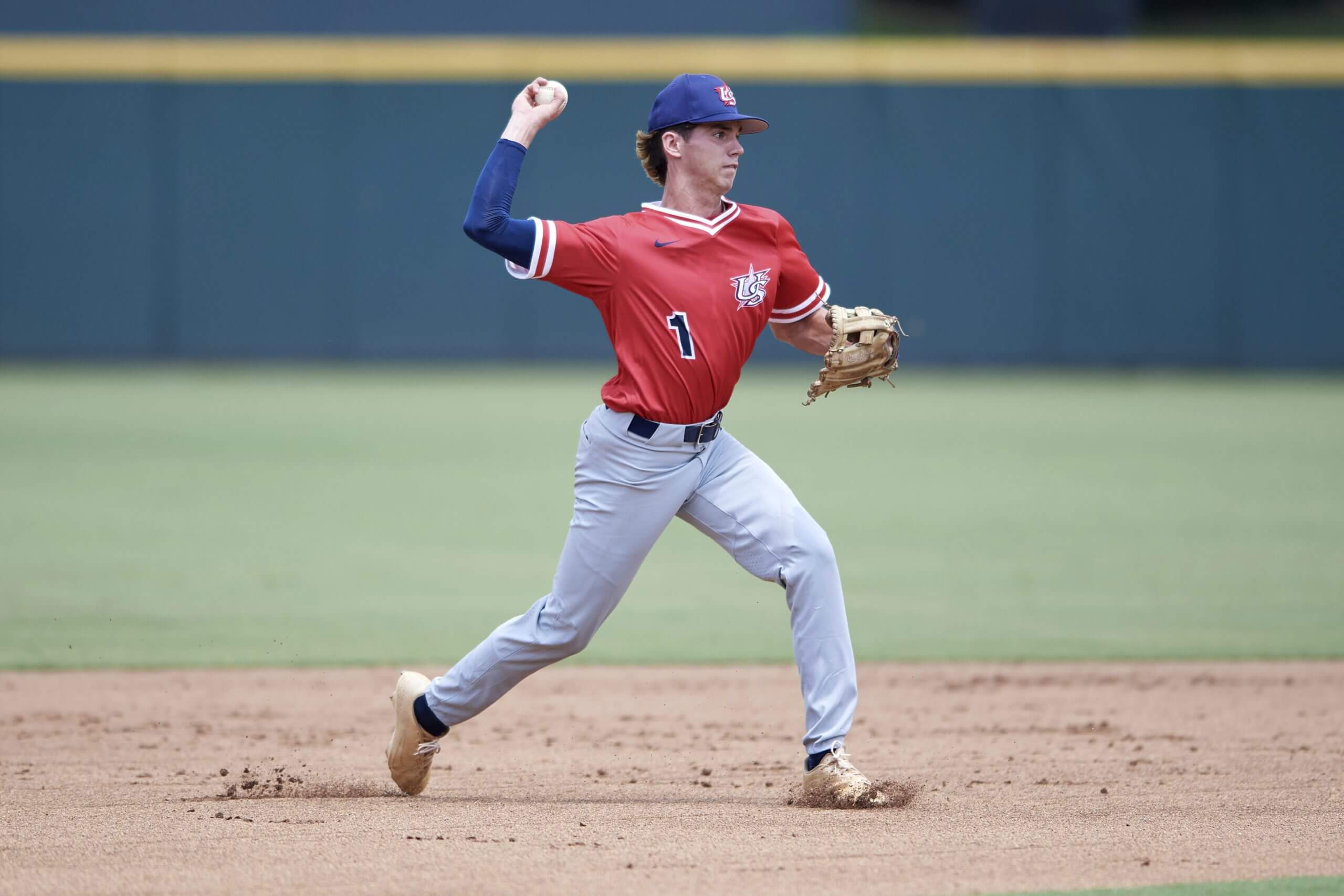
Position Player
High School
SS

Scouting Report
Bats: L, Throws: L
Schoolcraft is 6-8 and imposing on the mound, coming from a low three-quarters slot and getting out over his front side at release to take advantage of his height. He’s been up to 98, but the velocity is inconsistent and he’s had outings where he’s been in the low 90s. The consensus from scouts on his slider is that it’s not there yet, although he can flash plus with it, as the pitch tends to be flat — what we used to call “sweepy” before the term sweeper came into vogue — and doesn’t have a lot of power to it. He can turn over a changeup well and probably gets to a plus pitch with that over time. His arm is frequently late, which can often lead to problems with breaking stuff. It’s a tantalizing foundation for a starter, though, between the size, arm strength, and ability to create spin.
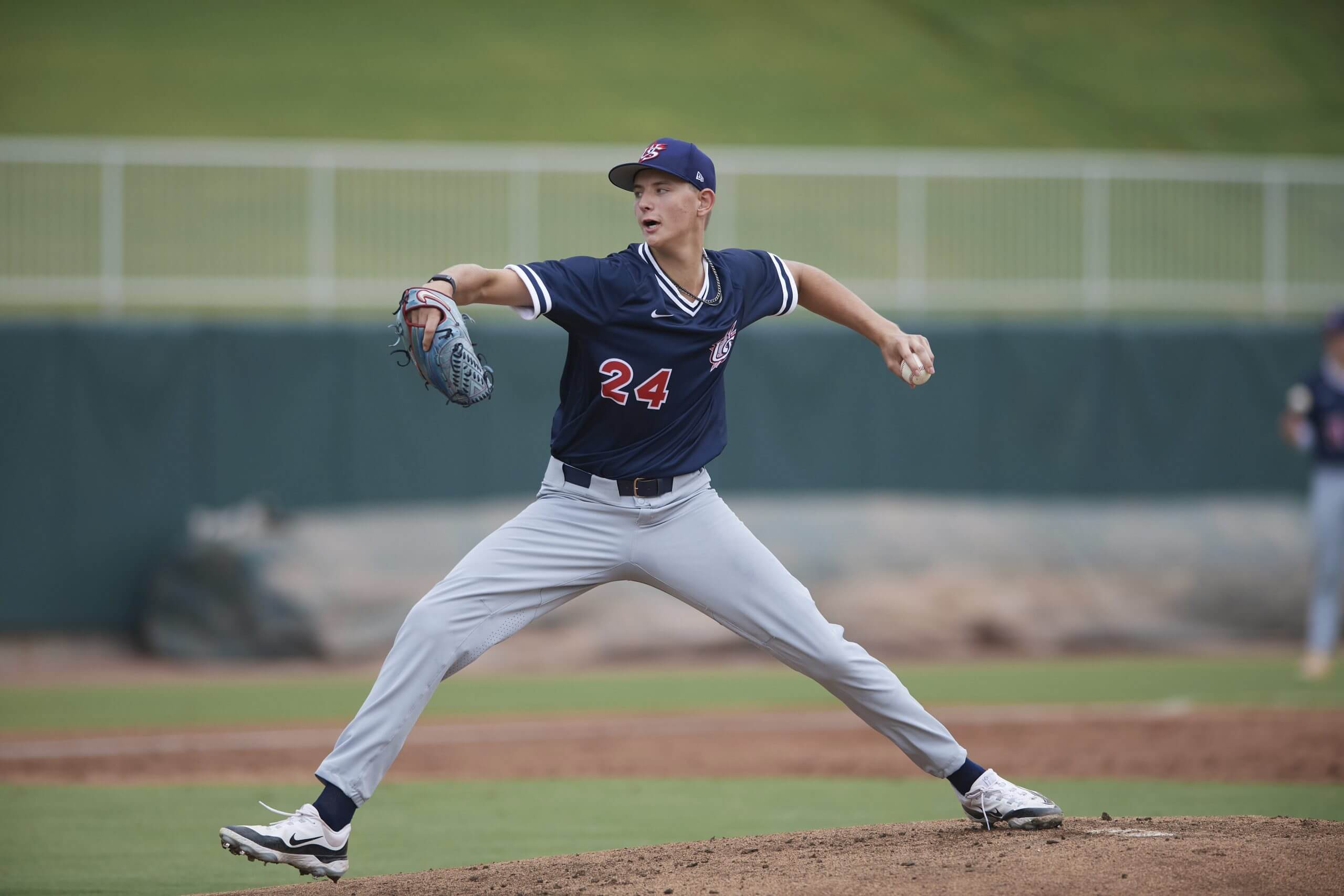

Scouting Report
Bats: R, Throws: R
Eyanson transferred from UC San Diego to LSU for his junior year and ended up third in Division I in strikeouts heading into Omaha, behind only teammate Kade Anderson and Tennessee’s Liam Doyle. He has an easy, athletic delivery, and he works with a plus slider that has a really sharp downward break that hitters have missed more than half the time they’ve swung at it, along with a straight changeup that’s effective but that he doesn’t use that often. He even has a 12/6 curveball, possibly a spike, that was around average most of the year but was really sharp in his Super Regional outing against West Virginia. The fastball’s a little light — he’s been up to 98, sitting 93-94, but it doesn’t have much life and doesn’t miss many bats — so maybe he ends up adding a two-seamer or cutter, or just pitching more with the off-speed stuff. He’s at least a back-end starter and I can see mid-rotation upside with everything he does well.
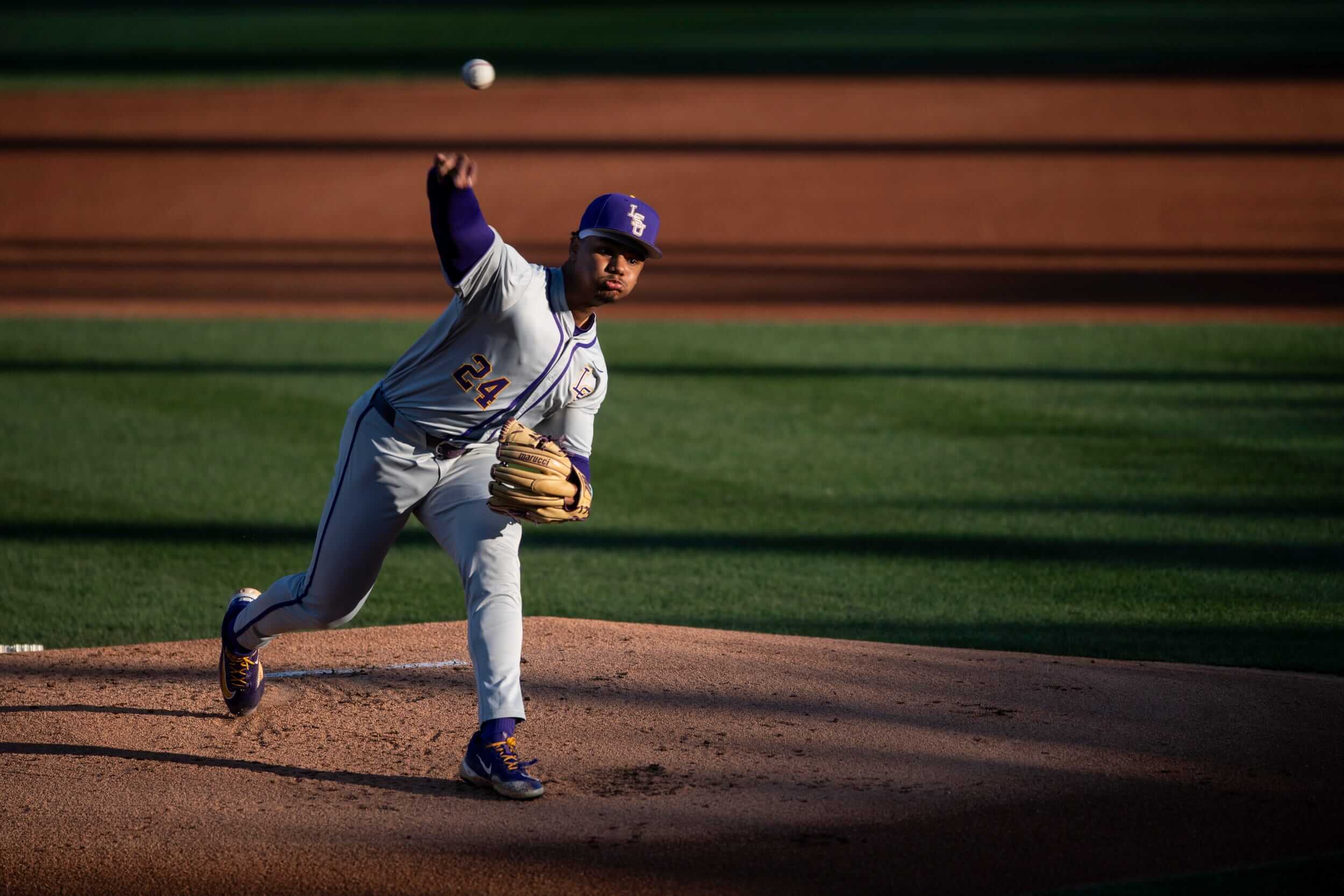

Scouting Report
Bats: L, Throws: R
Fischer came from Mississippi to Tennessee along with Liam Doyle as transfers this year and ended up leading the Vols with 25 homers, just one off the Division I lead heading into the College World Series. His hard-hit rate was among the best in DI, over 60 percent. It’s plus power for sure, but his top-end exit velocities aren’t elite; he gets more out of his power because his swing gets the ball in the air at a high enough angle to put the ball in the seats. He improved his approach substantially in 2025, cutting his chase rate from 28 percent to 19 percent, and his swing rate at pitches well out of the zone from 22 percent to just 10 percent. He’s first base only even though he’s played a few games in left and at third, so the bar is high for his bat. This year definitely turned him from a power-over-hit guy into a more complete player who might hit enough for solid OBPs and 25-plus homers a year.
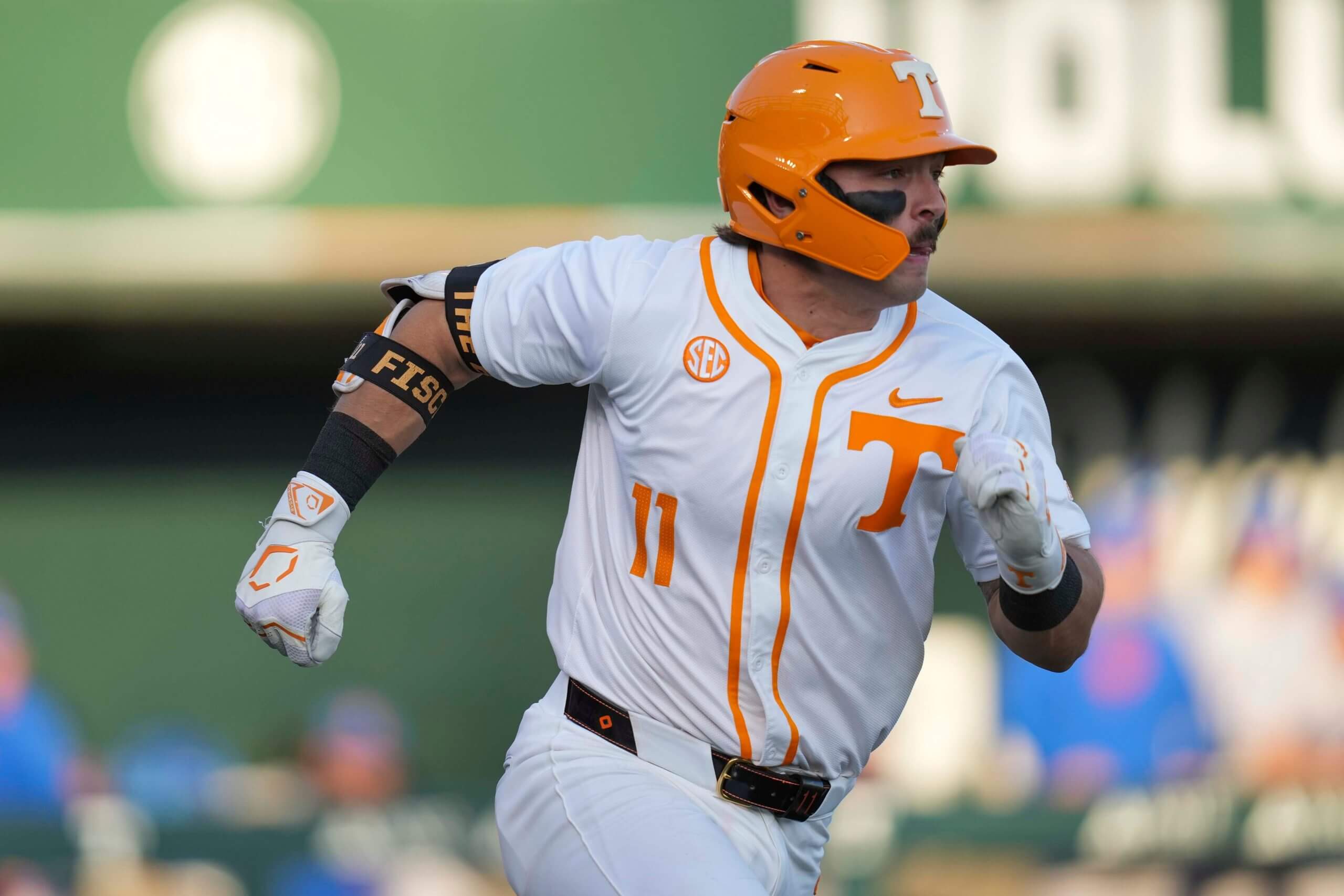
Position Player
4-Year College
1B

Scouting Report
Bats: L, Throws: R
Taylor hit .374/.494/.706 overall this spring and .360/.497/.586 in the Big Ten, although the pitching in that conference was far below what hitters in the SEC or ACC would face, and that has led to questions about how good Taylor’s hit tool really is. He couldn’t have done much more with what he was given, though; his hard-hit rate of 59 percent was among the best in Division I, and he doesn’t whiff or chase excessively, resulting in a strikeout rate of just 11.1 percent and nearly twice as many walks as Ks. His value is all in his bat — he’s not a runner and he’s a 45 defender in left field if you like him, so he really has to hit. He just didn’t see much velocity or quality off-speed stuff this year, because of the lack of power arms in the conference, and that raises some doubts about how much the performance will hold up. I do think it’s a big mark in his favor that he continued to hit in conference play when his toolsy teammate Korbyn Dickerson, who went off against some terrible competition in the first few weeks, couldn’t keep his performance going (.319 OBP in-conference with six walks against 32 strikeouts) in the Big Ten. Taylor’s lack of other tools — and I’d include bat speed, as his looks fine but not elite — has just raised the uncertainty around his performance. It’s going to be an issue going forward for any hitter outside of those two top conferences. If you buy the production and see him doing this against better pitching, it’s a first-round bat.
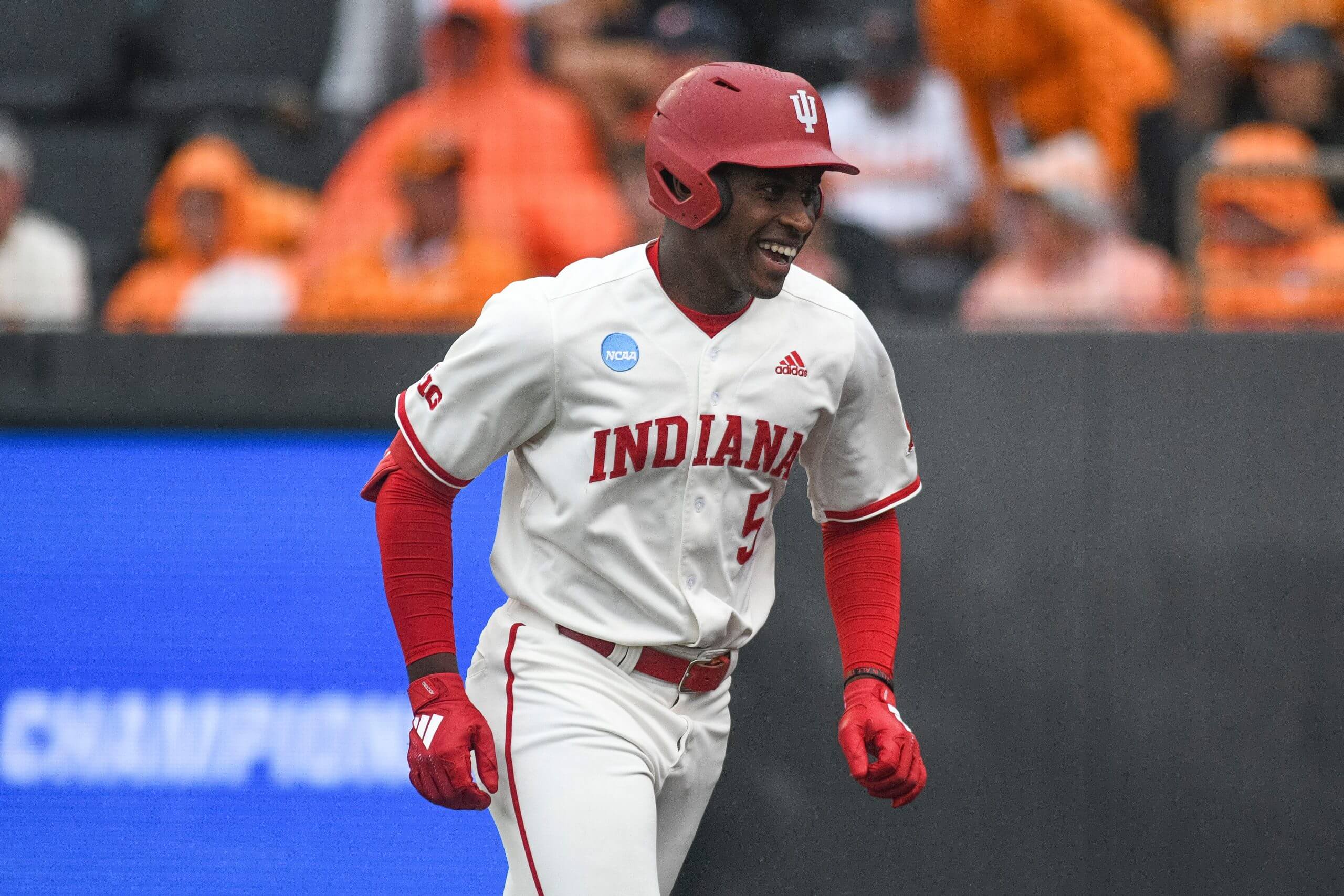
Position Player
4-Year College
OF

Scouting Report
Bats: L, Throws: R
Belyeu was off to a solid start for Texas when he injured his thumb on a diving play in the outfield on March 28, missing about seven weeks. When he returned, he struggled to a 6-for-37 line with 15 strikeouts, although he did homer twice in the Regionals as Texas was eliminated; I’m assuming the thumb issue was still inhibiting his grip and/or he’d lost some hand strength temporarily due to the layoff. When healthy, he has power and excellent bat speed, with quick hands and a swing he repeats easily. He does expand the zone too often, chasing pitches well out of the zone 19 percent of the time prior to the injury (I’m ignoring what came after, since there’s reason to believe he wasn’t 100 percent). He’s an average runner at best and is limited to the outfield corner, putting more pressure on the bat; right now he looks like a lower-OBP guy with 20-plus homer pop who could be more than an everyday guy if he does more with his contact than the typical hitter does.
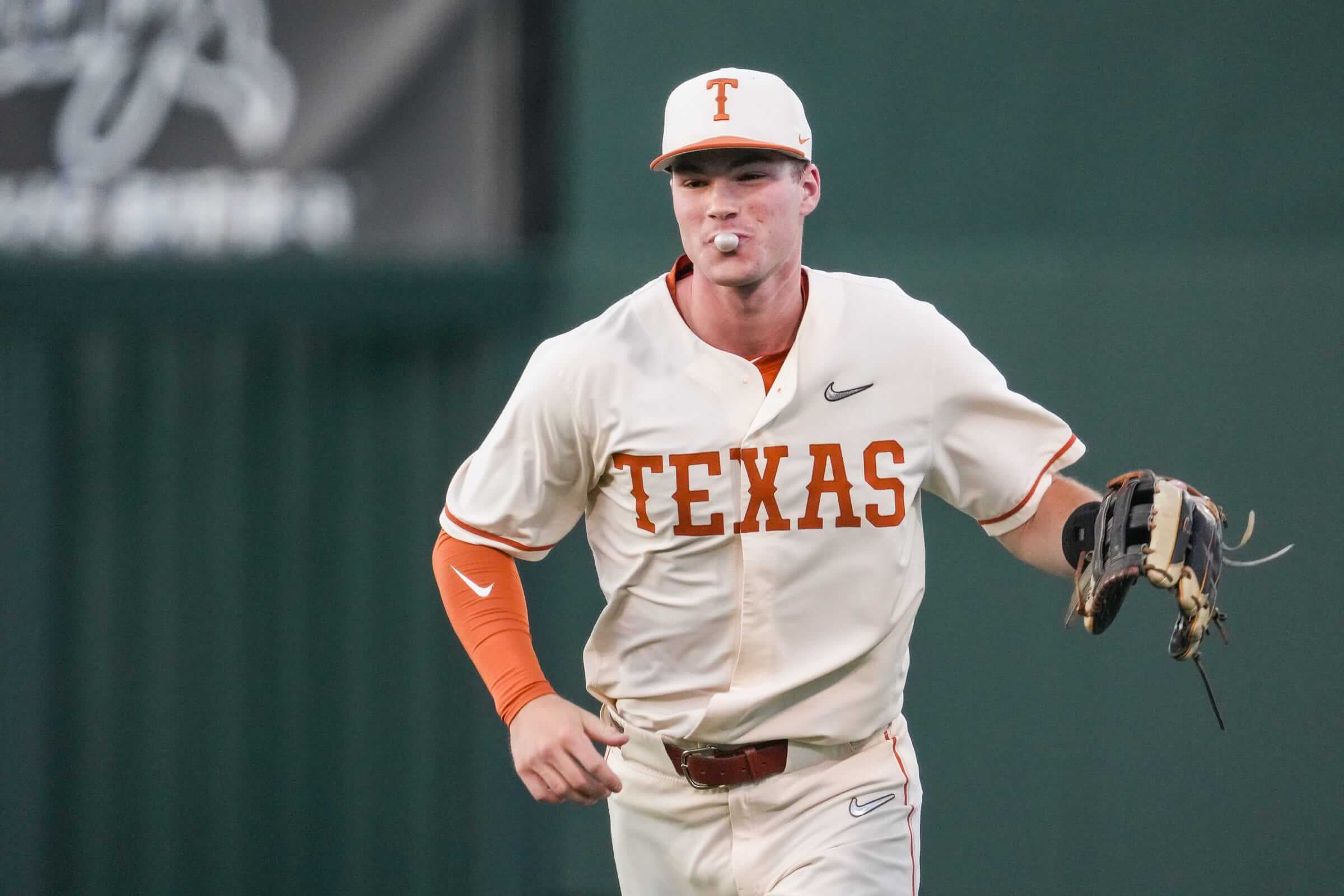
Position Player
4-Year College
OF

Scouting Report
Bats: L, Throws: R
Fauske is a center fielder and catcher who profiles much better in the outfield. He has a great swing that produces above-average to plus power in BP, but in games he shortens up for more contact, preferring to hit softer line drives to the whole field rather than look to pull the ball for extra bases. He does use his lower half well, and seems to have solid hand-eye coordination, so the ingredients are here for him to hit for average and for power with some adjustments to his approach. He’s a slightly above-average runner and may end up pushed to a corner as he fills out, although he should start his pro career in center. He was slowed a little this spring by minor shoulder soreness that kept him from throwing for a week or two (including, alas, the week I was there to see him). He’s committed to LSU.
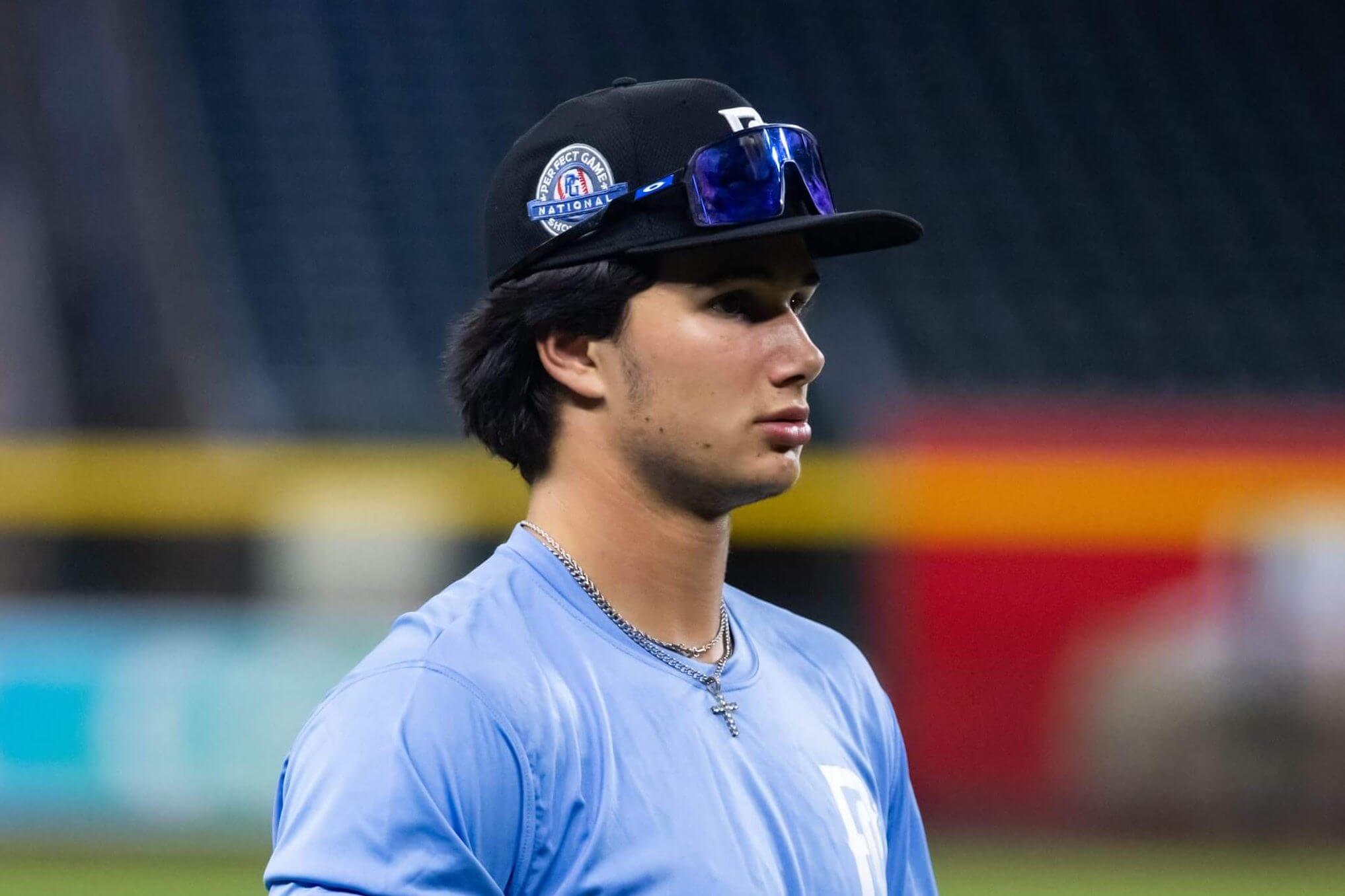
Position Player
High School
C
OF

Scouting Report
Bats: R, Throws: R
Ford is a very athletic outfielder who’s a plus defender at first and has plenty of bat speed to end up hitting for power, but this year he hit just 11 homers, down from 17 last year, and he doesn’t make good use of his legs to drive the ball. His approach is just OK, as he doesn’t miss much in the zone but chases way too many pitches, even well out of the zone, including fastballs anywhere above the midpoint of the zone and breaking stuff down and away. He’s a below-average runner but not a liability and moves well enough to be at least an average defender in an outfield corner. He turns 21 after the draft, so he’ll fit some teams’ draft models to a T.
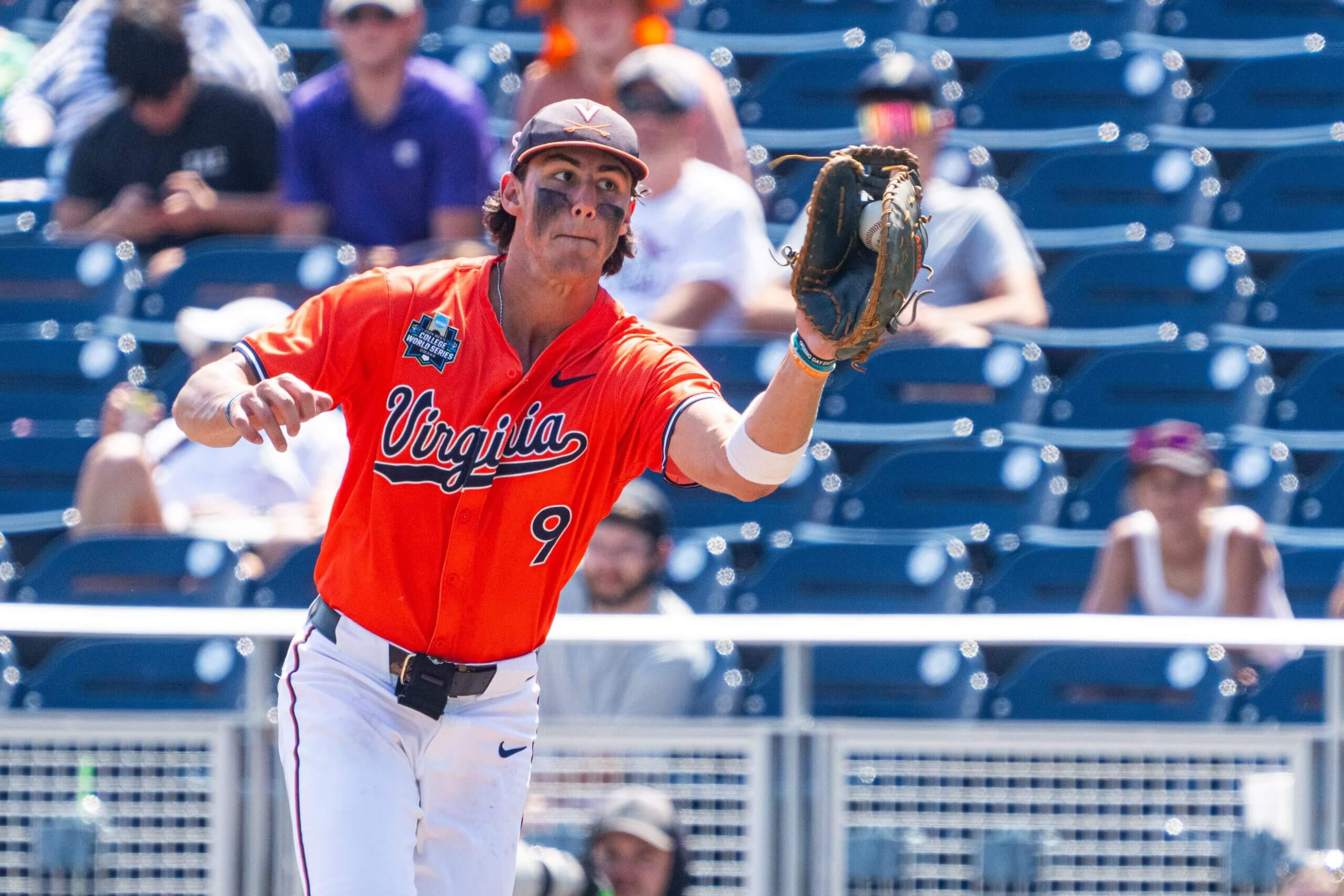
Position Player
4-Year College
1B
OF

Scouting Report
Bats: L, Throws: L
Conrad was surging this spring, hitting .372/.495/.744 in 21 games, when he injured his shoulder and had to undergo season-ending surgery. He could have been a first-rounder had the production continued, although scouts hadn’t seen him face much good pitching, with only seven games in conference at the time of the injury. He transferred to Wake Forest from Marist, and was an All-Star on the Cape last summer, hitting .385/.433/.486 in the premier wood-bat league. He has very quick hands and stays inside the ball well, but his plate discipline hasn’t been great; even against a relatively weak slate of opponents, he chased 27 percent of the pitches he saw out of the zone, 17 percent of those well out of the zone. The uncertainty around the hit tool and the shoulder probably push him to someone’s second pick, with the upside of a top-15 or so talent in the draft if he comes back 100 percent.
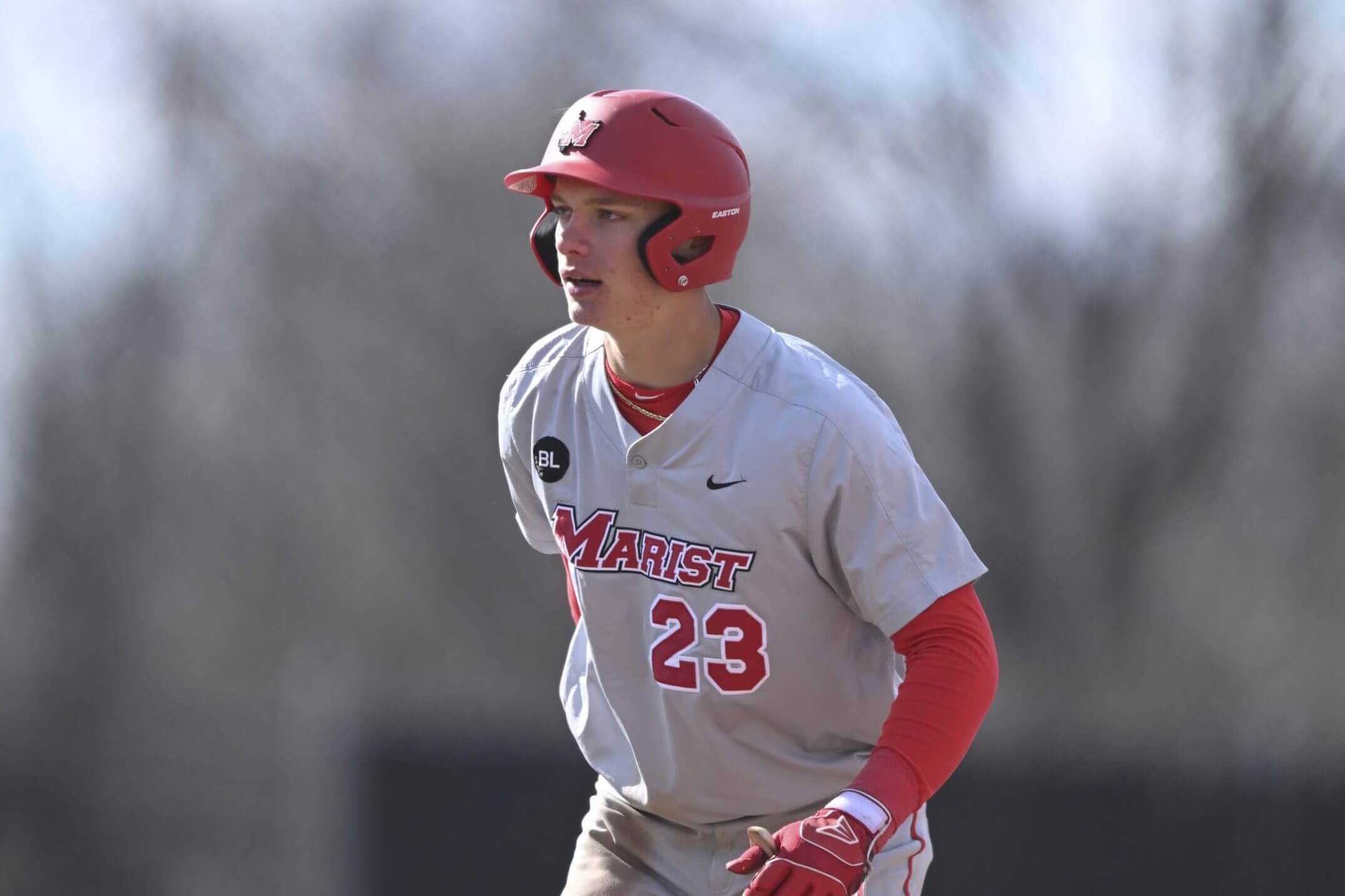
Position Player
4-Year College
OF
1B

Scouting Report
Bats: R, Throws: R
Watson showed and proved at NHSI this year, with a strong performance where he demonstrated unusual command for a high schooler. He’s 91-96 with good ride on the four-seamer, with a two-seamer, hard slider and split-change. The slider is his best pitch, mid-80s with some tilt, and he can move it around the zone effectively. It’s a higher slot and he doesn’t have a ton of deception; otherwise he has a clear starter profile, with plenty of projection left on his 6-5 frame to end up sitting at the top end of his current velocity range. He changed his commitment in June from Virginia to Florida.
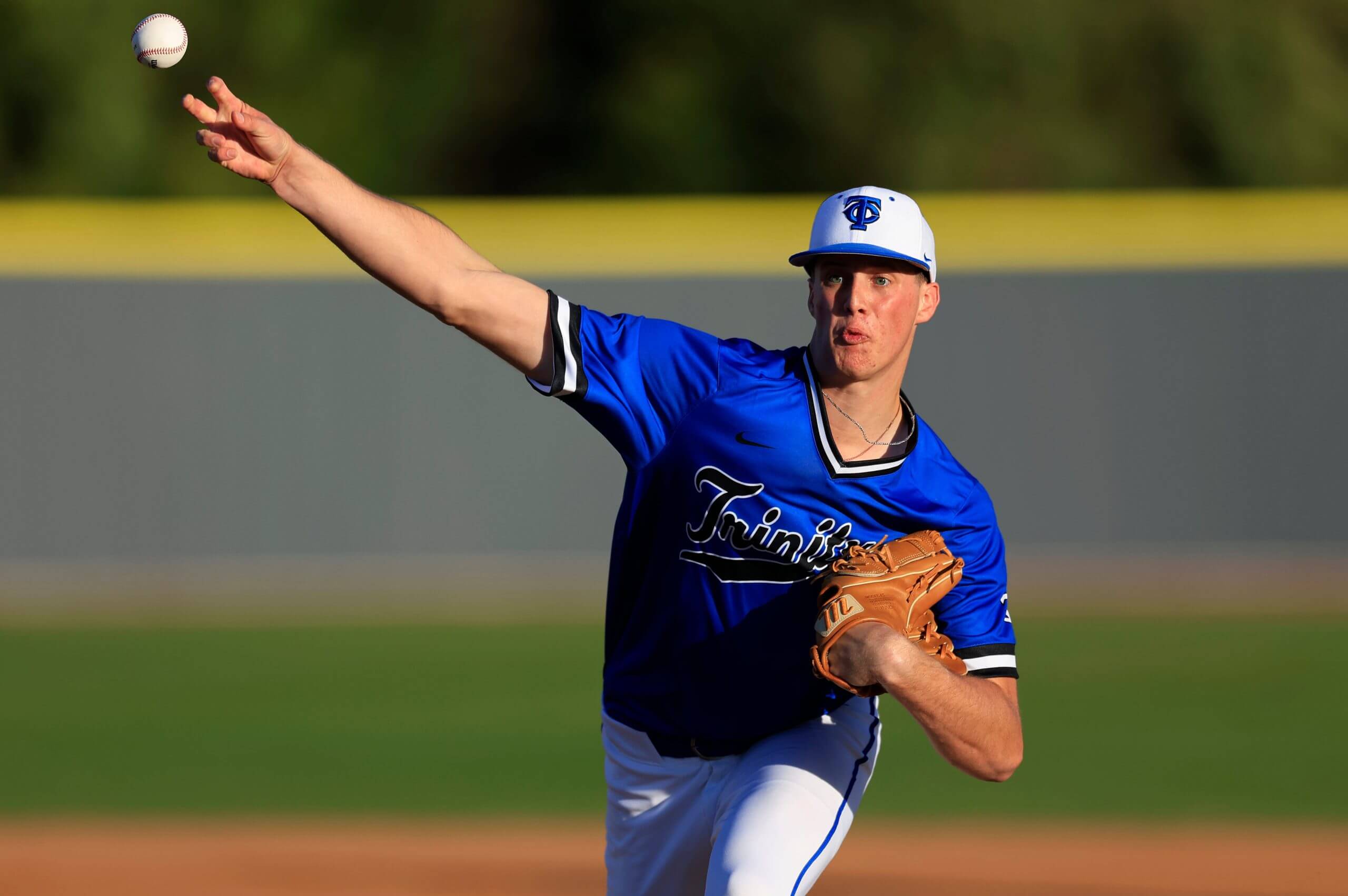

Scouting Report
Bats: R, Throws: R
Middleton is a strike-thrower who’s been up to 97, sitting 93-95, with a basket of three average or better pitches, and his performance was among the best in Division I this year — he was 10th among qualifiers in ERA after the super regionals and tied for sixth in strikeouts. His slider looks like it should be above-average or plus, but he had more success with his straight changeup when it came to missing bats. The slider is up to 88-89, short but sharp in its break, while the changeup has just a little late fade to it but seems to fool hitters looking for the heater. His arm is very quick and he throws everything hard, and even with that he’s shown average control, with a 6 percent walk rate this season and 67 percent of his pitches going for strikes. The fastball plays fine, about what you’d expect from the velocity, but it’s not going to be a carrying pitch for him. He’s a sure starter who has the weapons to be effective against hitters on both sides of the plate.
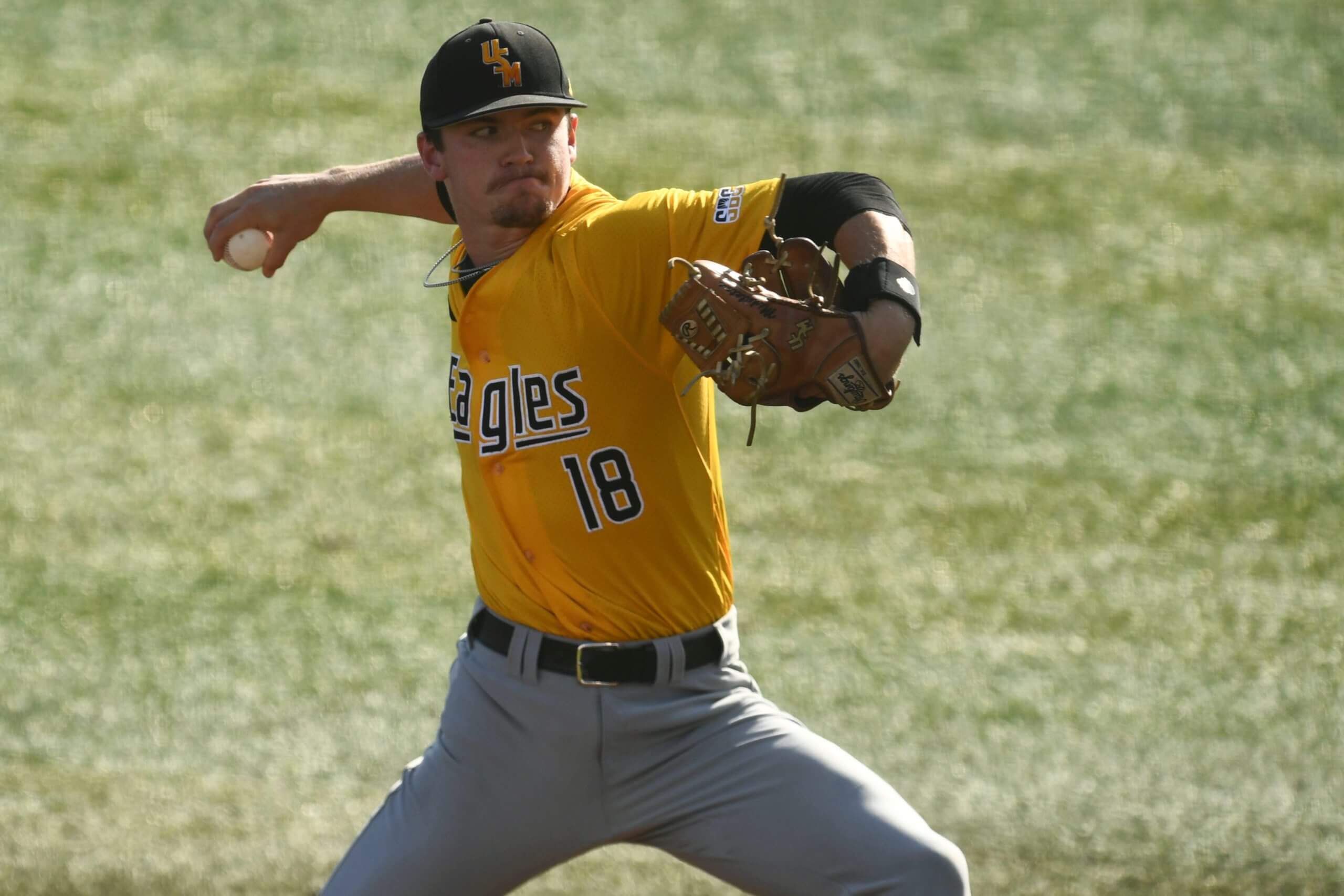

Scouting Report
Bats: R, Throws: R
Fisher is a tremendous athlete and former quarterback who’s been sitting in the low to mid 90s this spring with a hammer curveball and good attributes to both pitches, along with a slider and changeup to round out his arsenal. His fastball gets good ride thanks to a high spin rate, and it plays up a little because he gets so far out over his front side at his release. The curveball is sharp, almost 12/6, although it softens up when it’s in the mid-70s and is best when he gets it to 80 mph or harder. He doesn’t have much mileage on his arm, at least not from pitching, as he was still his high school’s starting quarterback last fall. He did suffer a minor fracture in his throwing elbow while playing football as a junior, but it’s not expected to be an issue for his baseball career. Fisher turned 19 in March and is committed to Indiana.


Scouting Report
Bats: L, Throws: R
Gamble is a 70 runner with above-average bat speed, probably needing to move to center field in pro ball, who’ll need some swing help to tap into more power. He’s more athlete than hitter right now, with a flatter swing that doesn’t loft the ball a ton, and he tends to open his front hip early so he doesn’t always square the ball up like he should. I could easily see a 20/20 upside here — or 20/40 — in the right organization, but as a guy who takes longer to reach the majors than the very top high school position players do. He’s committed to Vanderbilt, where he’d be age-eligible for the draft as a sophomore in 2027.
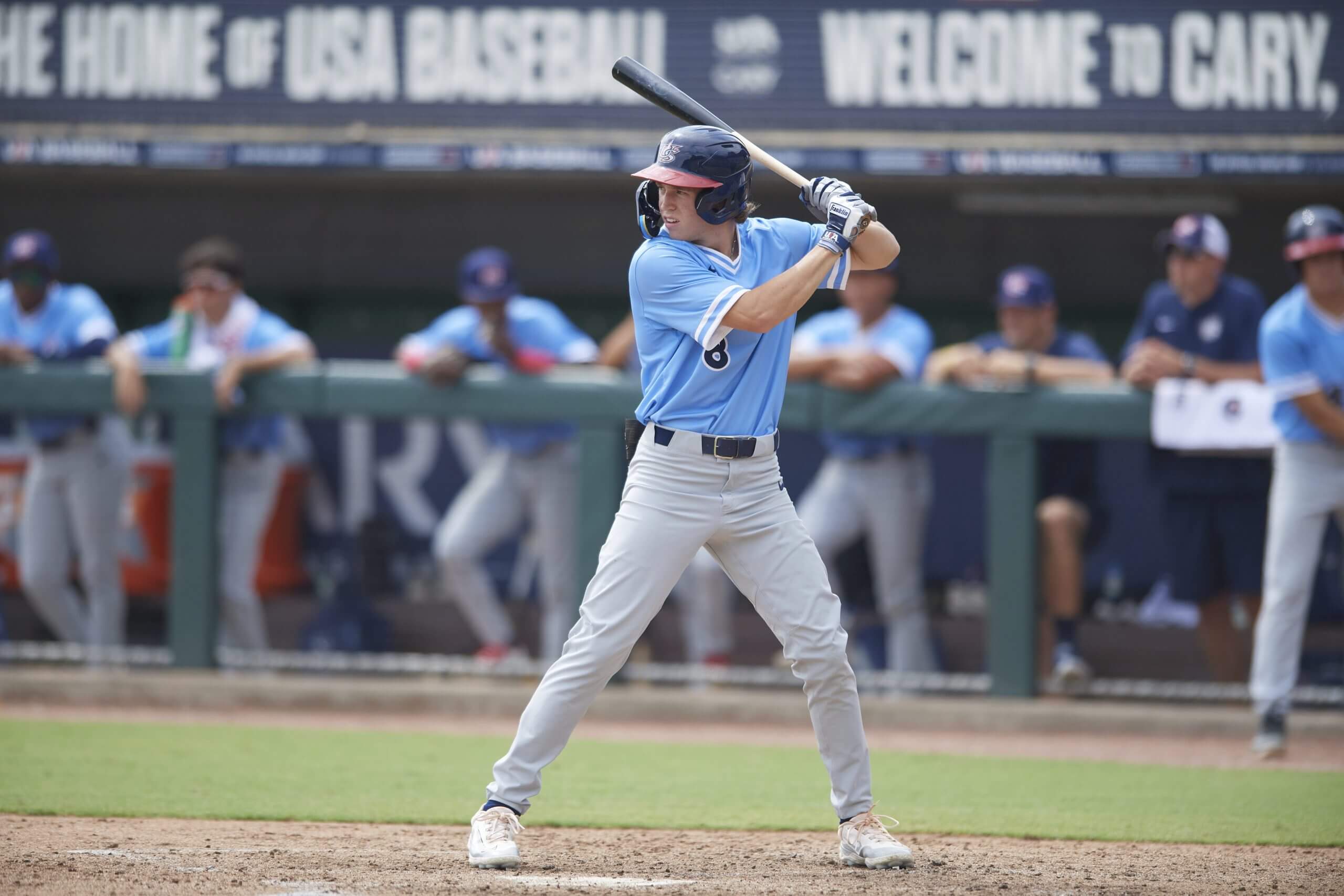
Position Player
High School
SS

Scouting Report
Bats: R, Throws: R
Lodise dialed up the power this year, going from nine homers as a sophomore to 17 this season. With excellent bat speed, he offers the potential of a 20-homer second baseman if he hits enough to get to it. He makes contact in the zone, but has too much of a tendency to chase pitches out of the zone, especially sliders down and away, and he can expand the zone a little too much on heaters. He swings hard, often, and that’s what produces the big power, but it means his misses can be huge as well, and he doesn’t have the pure ball/strike recognition to keep his OBP up. He’s a steady defender at short with an average arm, good on the routine play but possibly lacking the range to play the position in the majors. If someone gets him to tighten up his swing decisions even a little bit, he could become an everyday player.
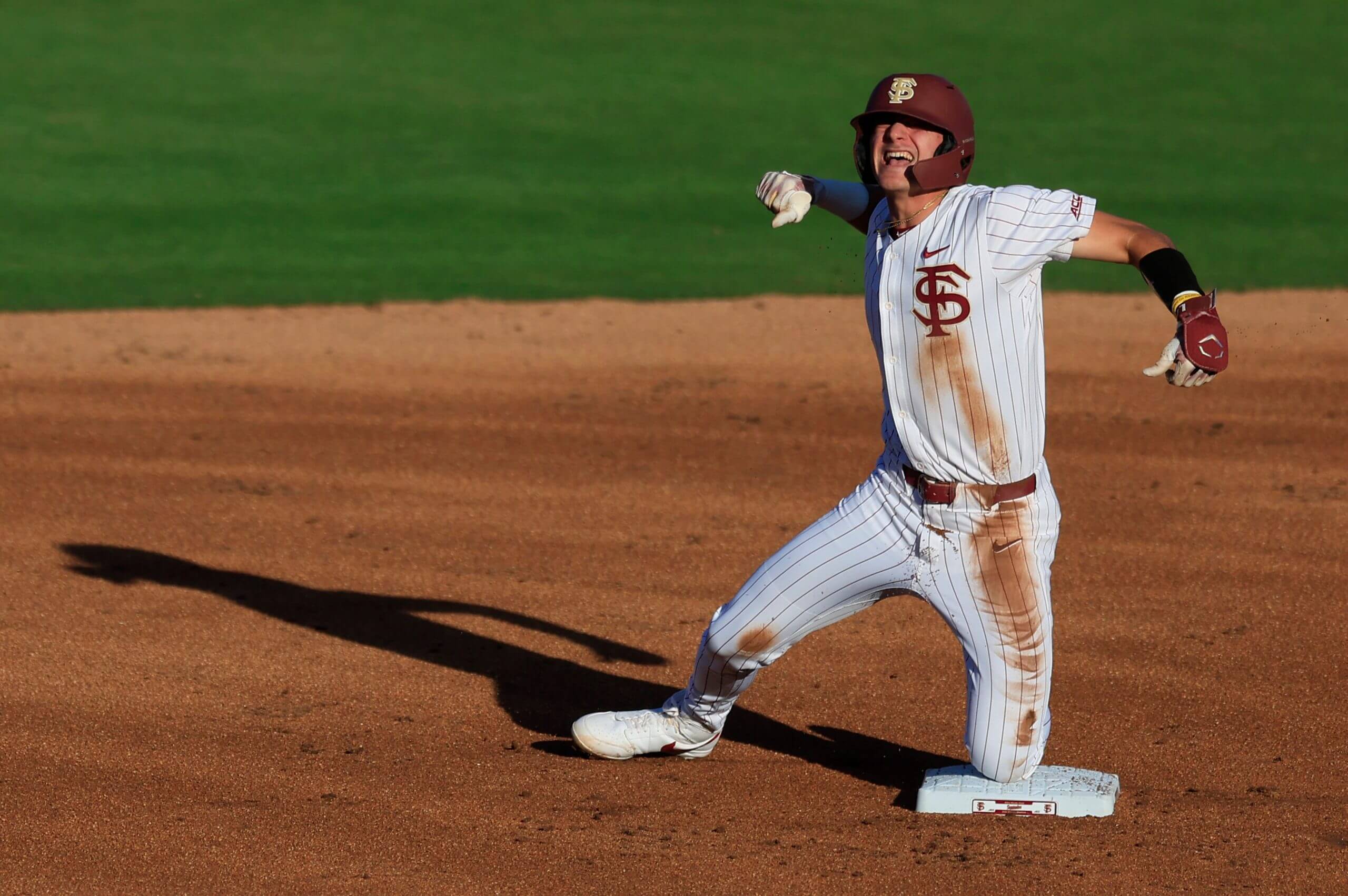
Position Player
4-Year College
SS

Scouting Report
Bats: R, Throws: R
Morris was one of Mississippi’s best potential starters this year, but the Rebels chose to stick him in long relief instead in favor of other pitchers with more seniority, making him one of the most underrated prospects in the draft. He threw 54 2/3 innings this year in 19 relief appearances, never making a start, and would sit 95-97 with a plus slider and cutter that allowed him to get lefties out even without a changeup. It’s not a picture-perfect arm action but he repeats it well enough to project him to get to 45 or 50 control, and with this stuff that’s at least good enough to be a back-end starter.
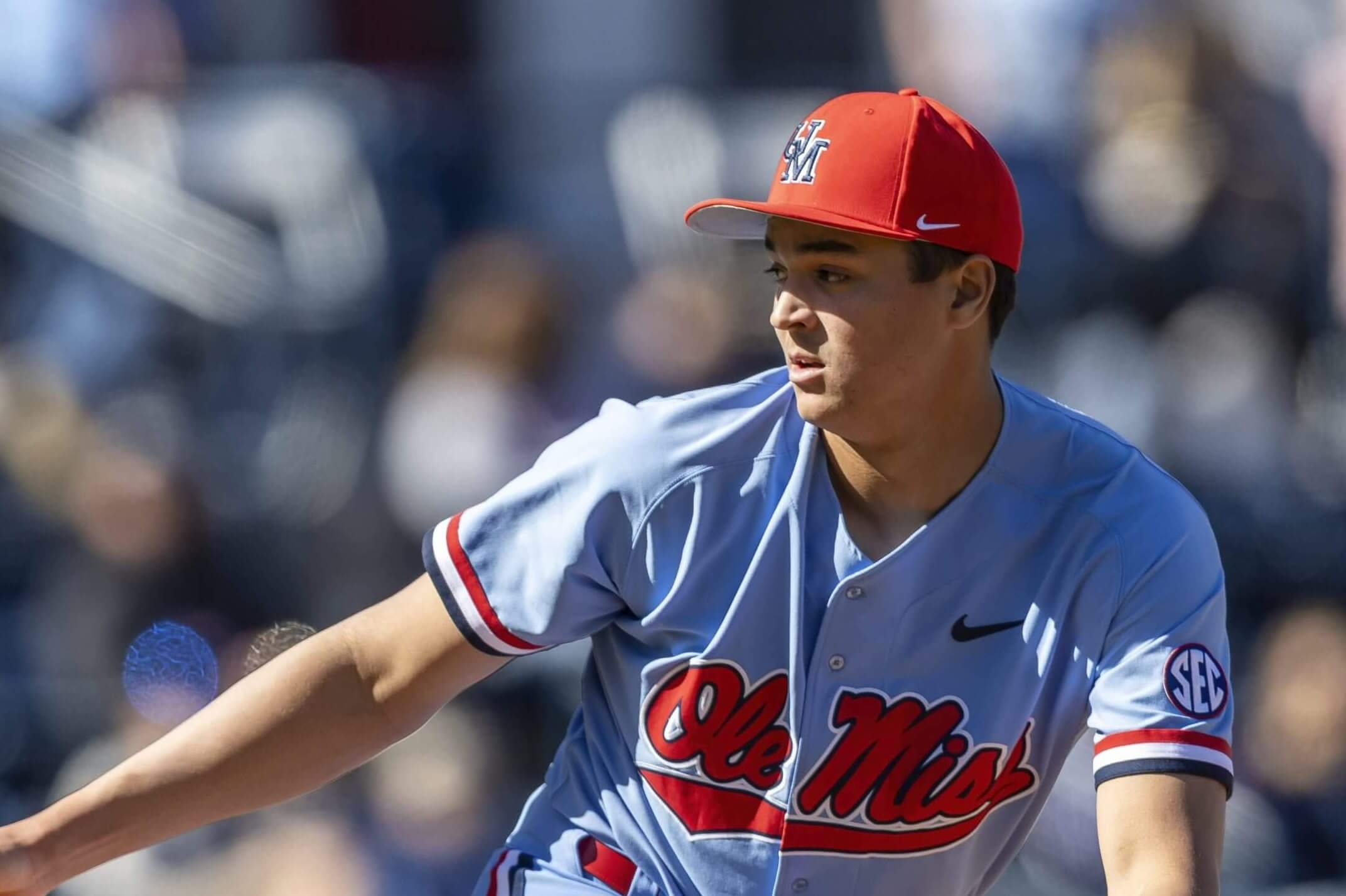

Scouting Report
Bats: L, Throws: R
Flemming is a solid athlete with some projection left to his 6-3 frame and a short, simple swing that produces a ton of contact. He’s a left-handed hitter who uses the whole field well, potentially getting to average power when he fills out. He hits with little-to-no load, however, which likely explains his very low whiff rates (including just 8 percent on fastballs in tracked events in 2024-25) but isn’t conducive to driving the ball. He did have higher whiff rates on breaking pitches, but the sample is really small (31 total pitches seen) and I haven’t heard the same from scouts this spring. He’s not going to stick at shortstop and will have to at least move to third base. He’s committed to Vanderbilt.
Position Player
High School
SS

Scouting Report
Bats: R, Throws: R
Young struggled badly in the summer and fall of 2024, with a 39 percent whiff rate at tracked events (per Synergy Sports data) and huge trouble catching up to even average velocity. He spent the offseason reworking his own swing, though, and had a strong enough spring to put him back on the map for at least teams that still scout players beyond data and video. He’s improved his plate discipline and swing decisions, and he’s much more balanced through contact as he’s getting his front leg down more consistently. He has plus power right now, although he probably has a 40 hit tool even after the adjustments, and you’re betting on him continuing to make improvements in pro ball. He has a 70 arm, so while he’s not going to stick at shortstop, he might be able to handle third and should have a defensive floor in right field — and if he doesn’t hit, I wonder if someone sees if he can pitch. He’s committed to LSU.
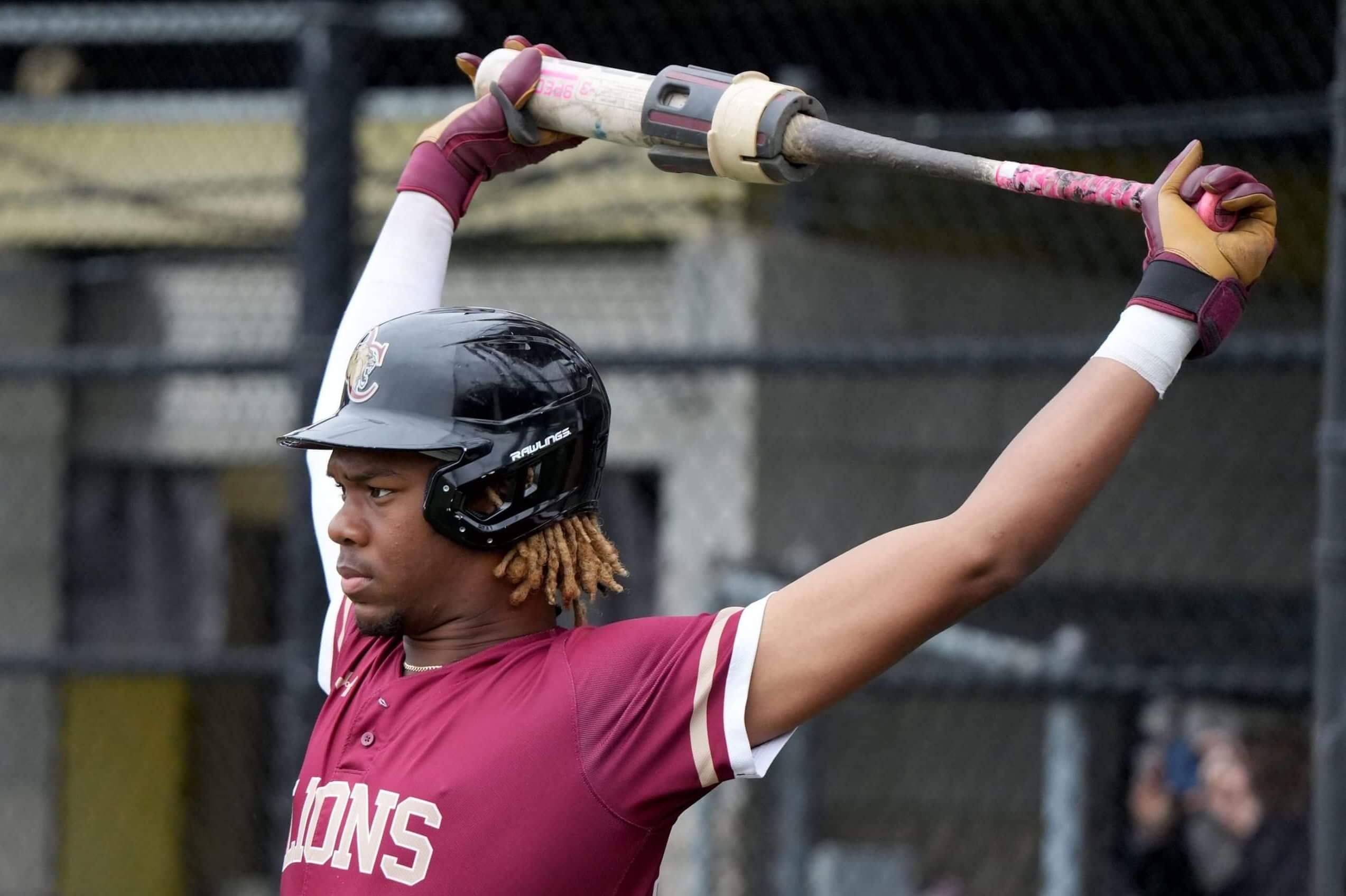
Position Player
High School
SS

Scouting Report
Bats: B, Throws: R
Gray’s spring season didn’t start until May and runs until July 7, so his stock has been rising even as other players are mostly done other than individual workouts and the MLB Draft Combine. He’s a switch hitter with elite bat speed who makes a ton of hard contact and shows plus power now, hitting a ball at 109 mph in the preseason Super 60 showcase. He does tend to fly open, though, even on pitches out over the plate or middle-away, with his front foot rolling completely over through his swing, worse from the left side but still present when he hits right-handed. He’s almost certainly not going to stick at catcher, with right field the most likely long-term position. The hit/power upside is pretty huge, but he’s going to need to make some significant mechanical adjustments as he gets older and fills out so he can get to that ceiling.
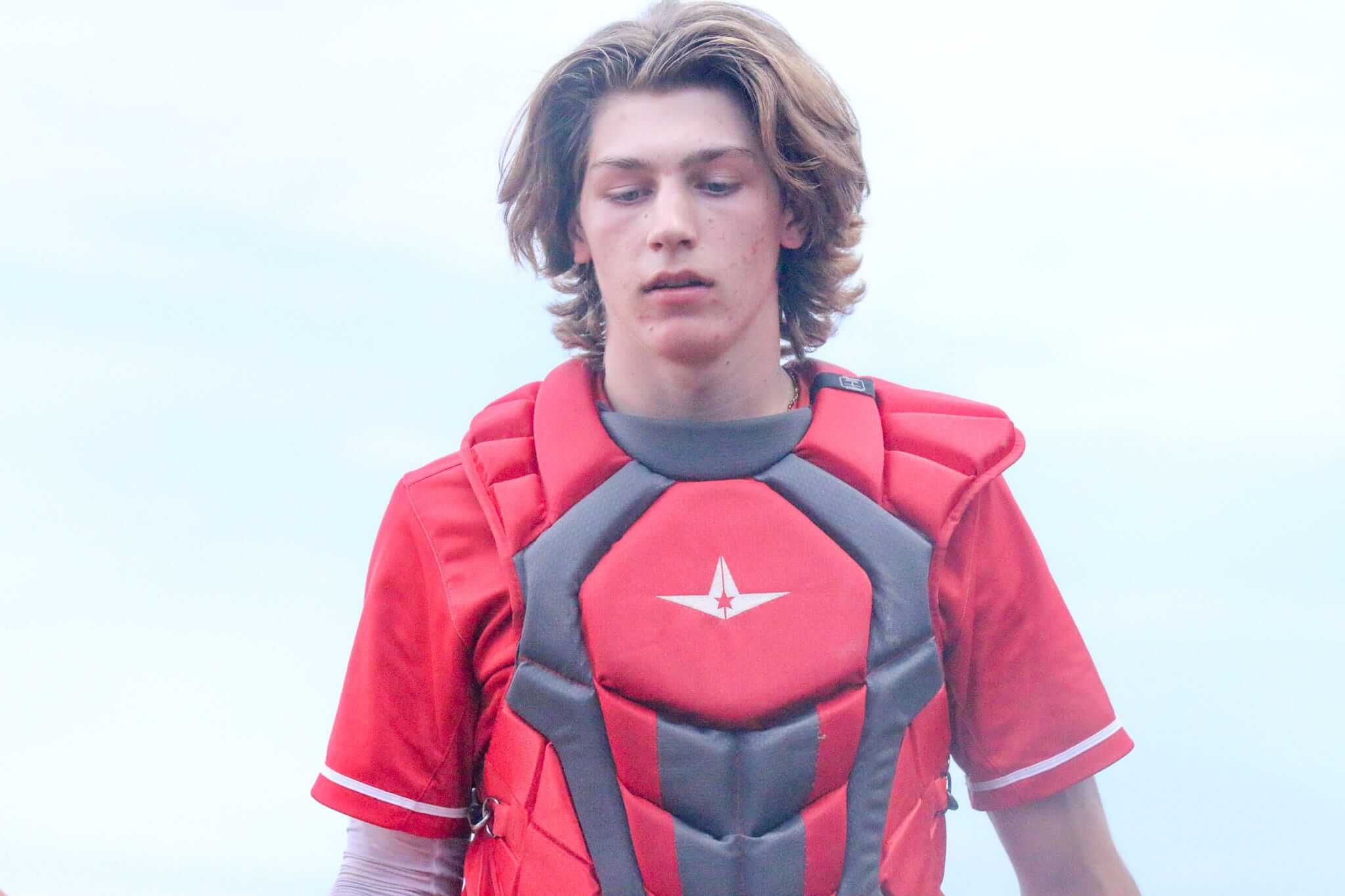
Position Player
High School
C

Scouting Report
Bats: R, Throws: R
Voit was one of the best hitters in the Big Ten this year with his combination of high contact rates and solid-average power, ending the season with more walks (40) than strikeouts (34). Just over half of his balls hit into play were hard-hit (95 mph exit velocity or greater), and he topped out at 111 mph, with solid bat speed and clearly plenty of strength behind it. He spent 2024 in the outfield for the Wolverines but moved full-time to second base this year and will stick there, although he also has the arm for third, and since he’s a plus runner he could probably handle center. He won’t turn 21 until September.
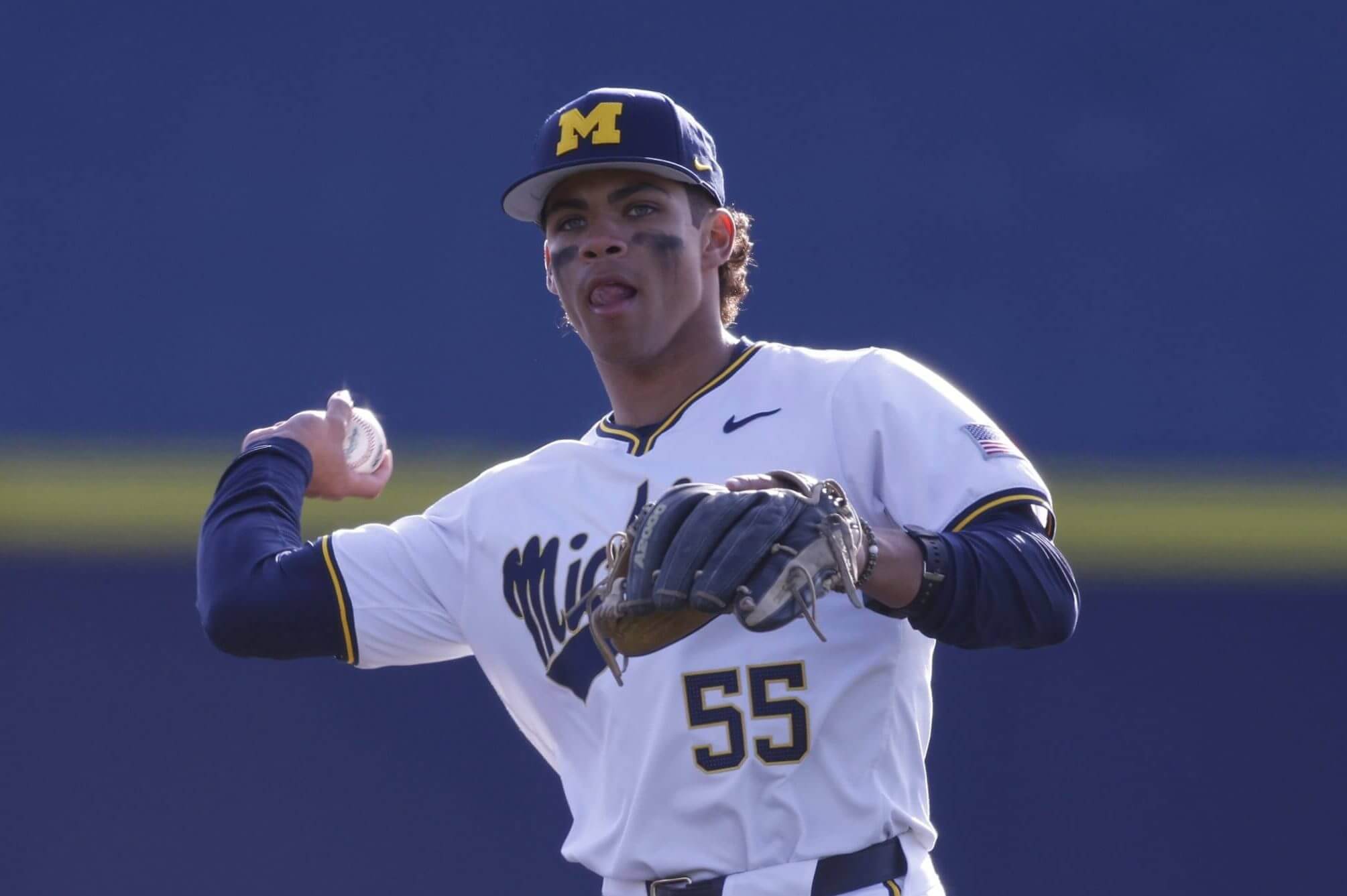
Position Player
4-Year College
2B

Scouting Report
Bats: L, Throws: R
Kilby has one of the simplest and quietest approaches in the draft, college or high school, with a swing that’s short and direct and gets the bat to the ball consistently. He showed excellent contact skills and a low chase rate at tracked events last summer, swinging at just 9 percent of pitches beyond the shadow of the zone, with 40 power now but a chance to get to average as he fills out and perhaps with a little fine-tuning in the box. He’s a fringe-average runner who’s not going to stick at shortstop, ending up at second or third instead. He’s committed to Clemson.
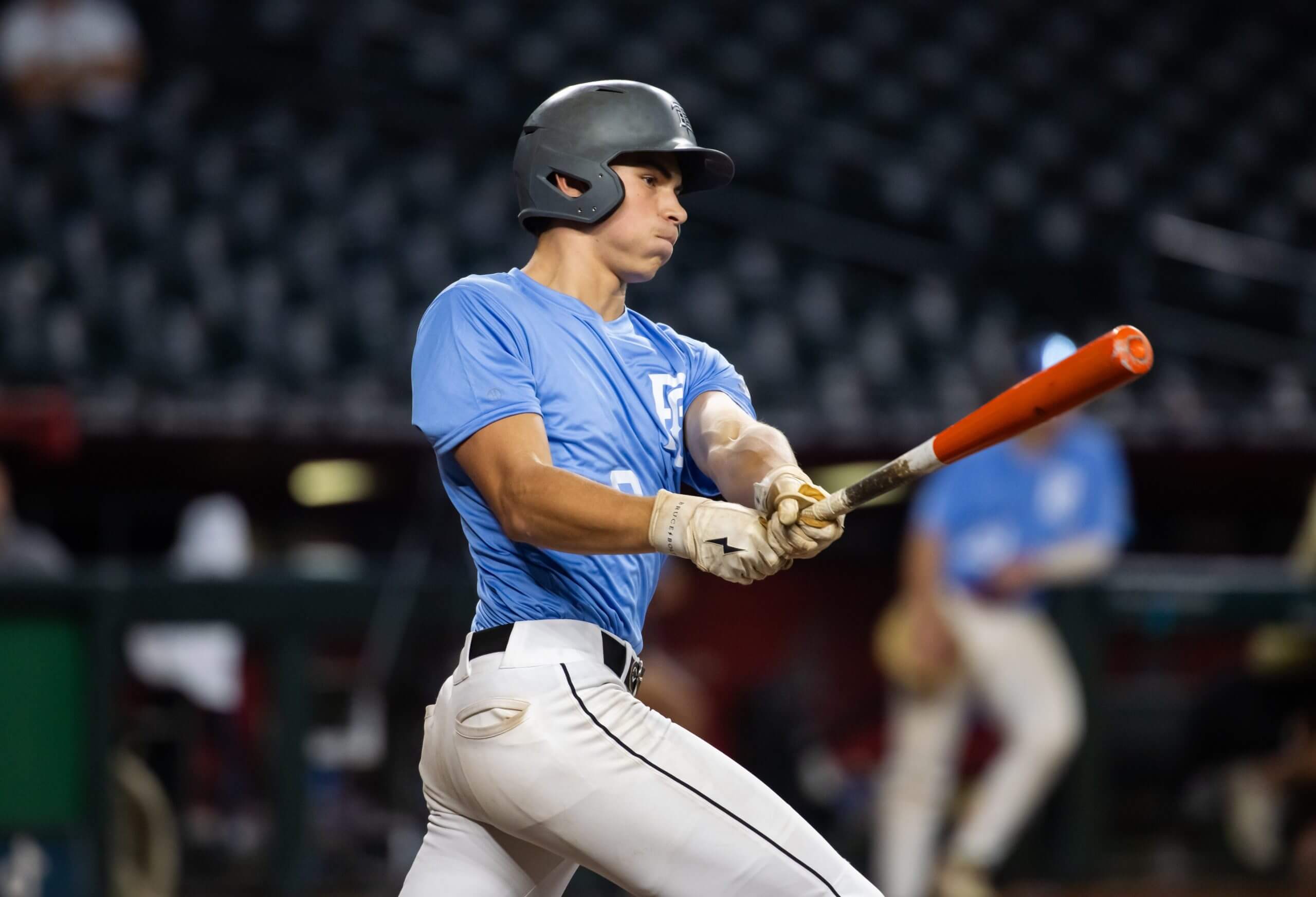
Position Player
High School
SS

Scouting Report
Bats: R, Throws: R
Harvey is a high school catcher who likely made himself some money with a very strong showing at the MLB Draft Combine, including a max exit velocity of 115 mph during batting practice at Chase Field. He’s a very strong, athletic kid who’s a plus runner. He has an arm that is easily plus and he projects to stick behind the plate long-term. Harvey has a fantastic swing with a quiet approach and good loft in his finish to get to some power, and while there seems some disagreement over where his present hit tool is, he hasn’t had issues making contact or picking up pitch types at tracked showcase events. He’ll turn 19 two weeks after the draft, and high school catchers are a high-risk category anyway, so he’s probably looking at the second round or later. He’s committed to Florida State.
Position Player
High School
C

Scouting Report
Bats: R, Throws: R
Godbout was tabbed early in his college career as a future first-rounder because of the hit tool, but he was affected by the teamwide slump in Virginia’s lineup, losing 63 points of average and 148 points of slugging from 2024 to 2025. He still has superb contact skills, with whiff rates on fastballs of 6.3 percent over the past two springs, and he wouldn’t be the first guy to leave Charlottesville and come into more power. His swing can be very inconsistent, even down to how he strides, but the hand-eye is there and he gets some loft into his finish to keep the ball off the ground. He’ll be fine at second base.
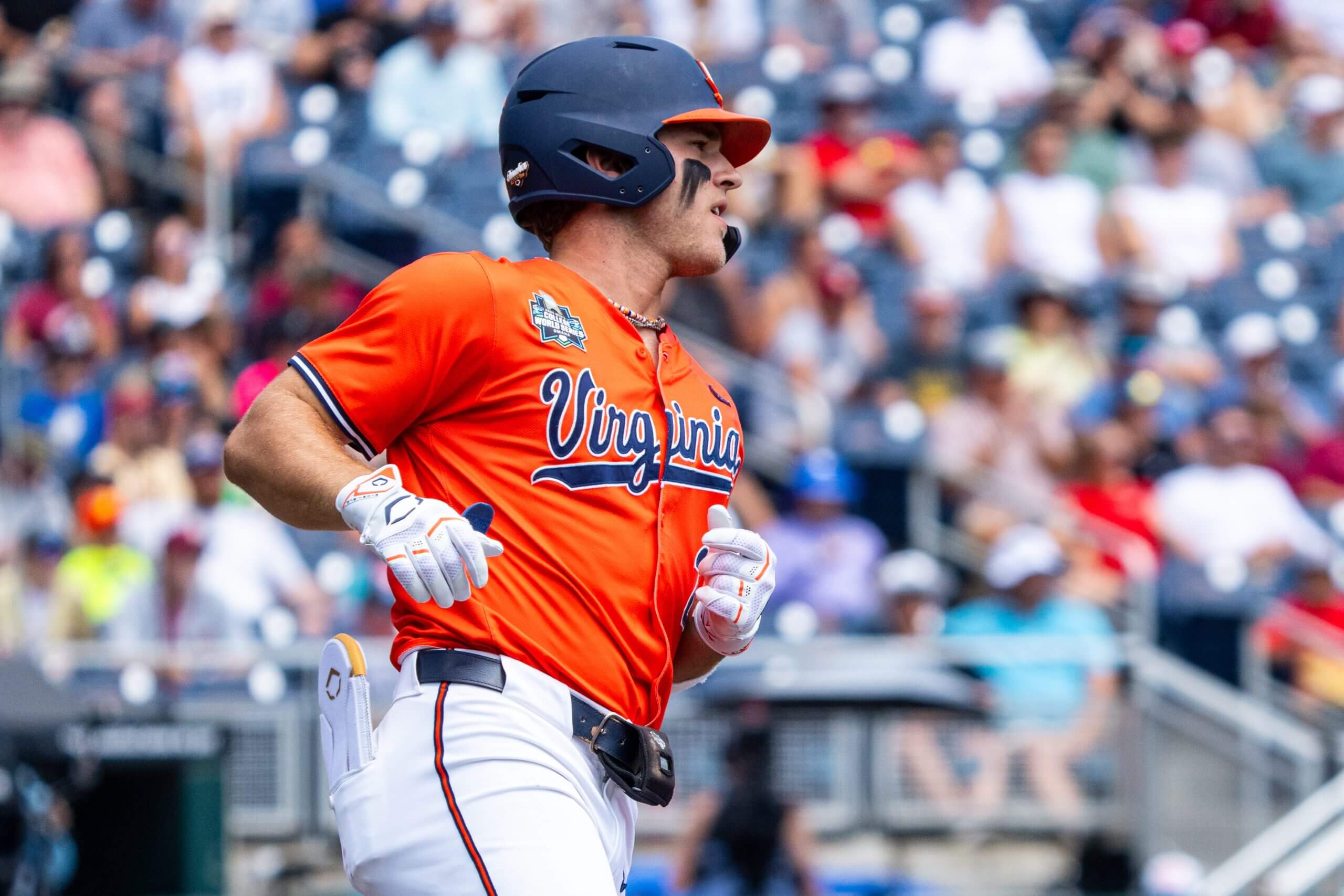
Position Player
4-Year College
2B

Scouting Report
Bats: L, Throws: L
Compton came into the year with some first-round attention after hitting .354/.427/.661 as a redshirt freshman for the Sun Devils, but crashed and burned this year with a .271/.379/.486 line, failing to even get to double digits in homers. He has power and some patience, but is a below-average runner and is limited to left field between that and fringy arm strength. It’s an all-fields approach with a short path to the ball, showing 55 power rather than 60 or more because his swing lacks much leverage. He could be a bounceback bet for a team that believes in the underlying offensive tools and thinks they can get him to pull the ball in the air more frequently. He missed the 2023 season after undergoing Tommy John surgery, so he’ll be 22 in October with two years of eligibility remaining.
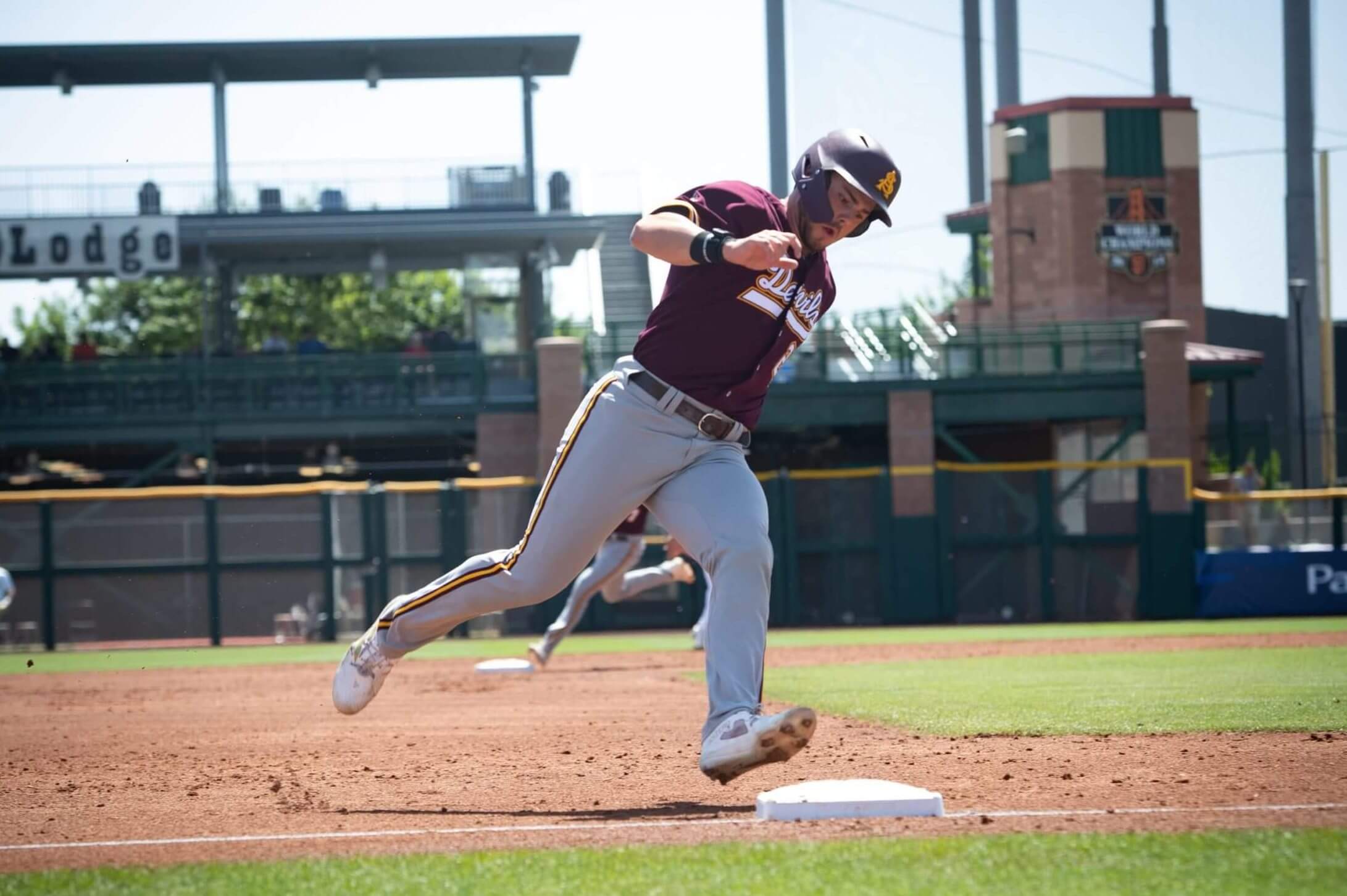
Position Player
4-Year College
OF

Scouting Report
Bats: L, Throws: L
Slawinski is a very athletic, projectable lefty with a chance for three average or better pitches now that his velocity has started to creep up. He works in the low 90s with good carry, with a low release height that adds some deception to the pitch. He shows solid control already, and his slider projects to plus as long as he finishes it out front. He also turns over a potentially average changeup, giving enough of an arsenal to see him as a future starter when he fills out. He’s a multi-sport athlete who played wide receiver and small forward until his senior year. He’s committed to Texas A&M.

Scouting Report
Bats: R, Throws: R
Lodise, the cousin of Florida State shortstop Alex Lodise, transferred from Division II Augusta to Georgia Tech and held most of his performance even with the huge jump in competition. He took some time to adjust to ACC play but ended up with a credible line, with 10 of his 16 homers coming in conference play. He’s been much better against fastballs, whiffing 27 percent of the time on other pitches, but still doing enough damage to see him potentially getting to an average hit tool. He’ll go out as a shortstop but ends up at second base because his arm isn’t strong enough for the left side. The hope here is that there’s enough between the hit tool and the power for him to profile as a regular, more so if he’s a 55 defender after he slides to the other side of the bag.
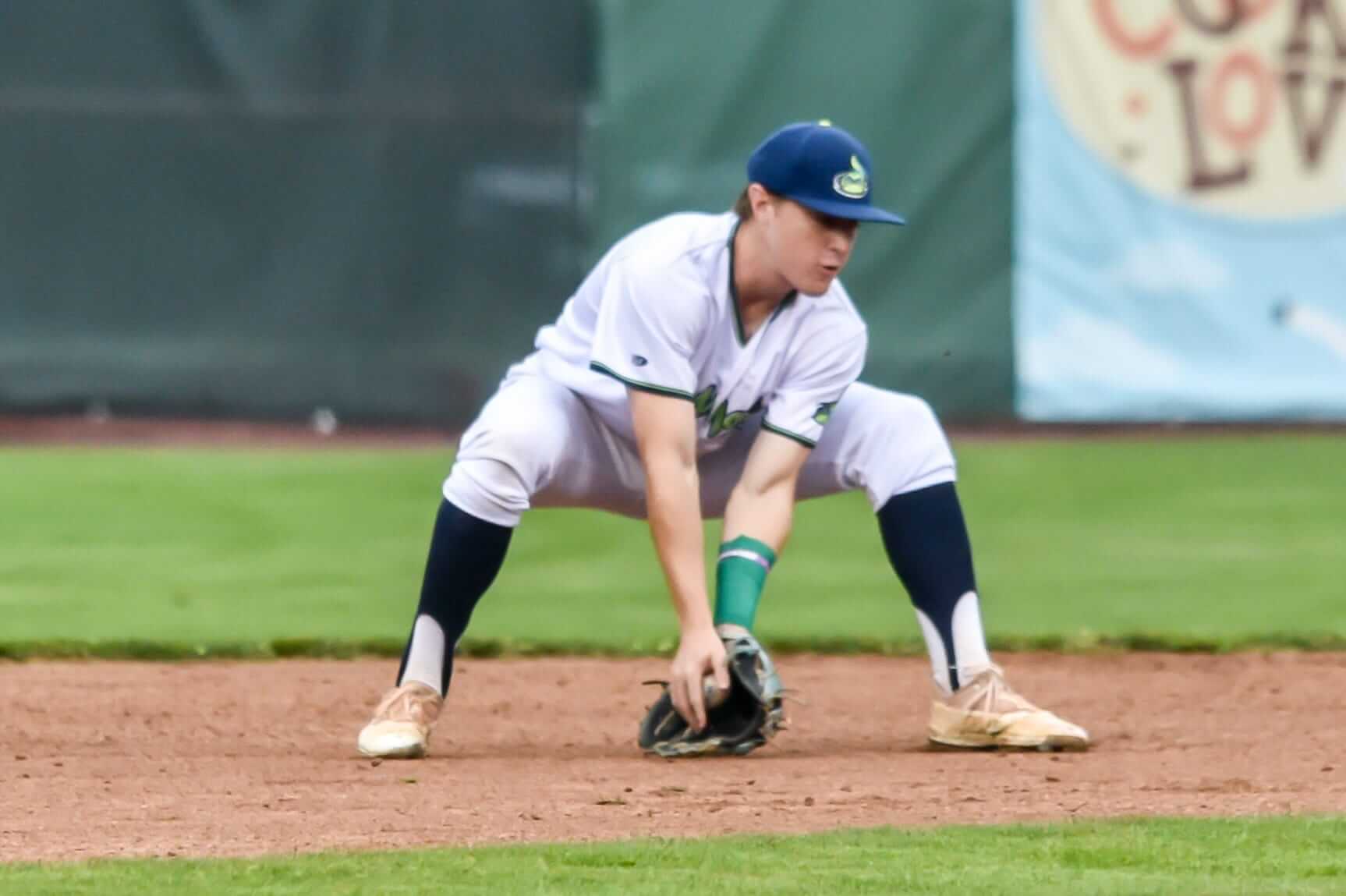
Position Player
4-Year College
SS

Scouting Report
Bats: L, Throws: L
Fernsler is 6-4 but he throws from an extremely low release point that’s going to get him compared to Chris Sale and Jamie Arnold, averaging about 89-90 but missing a ton of bats because of the low slot and the ride on the pitch. He has a sweepy slider and a soft changeup, generating whiffs on all three in large part because hitters see the ball late out of his hand. He added a curveball this year to give him another slower option alongside the changeup. He’s committed to TCU and by all accounts is very likely to end up there.
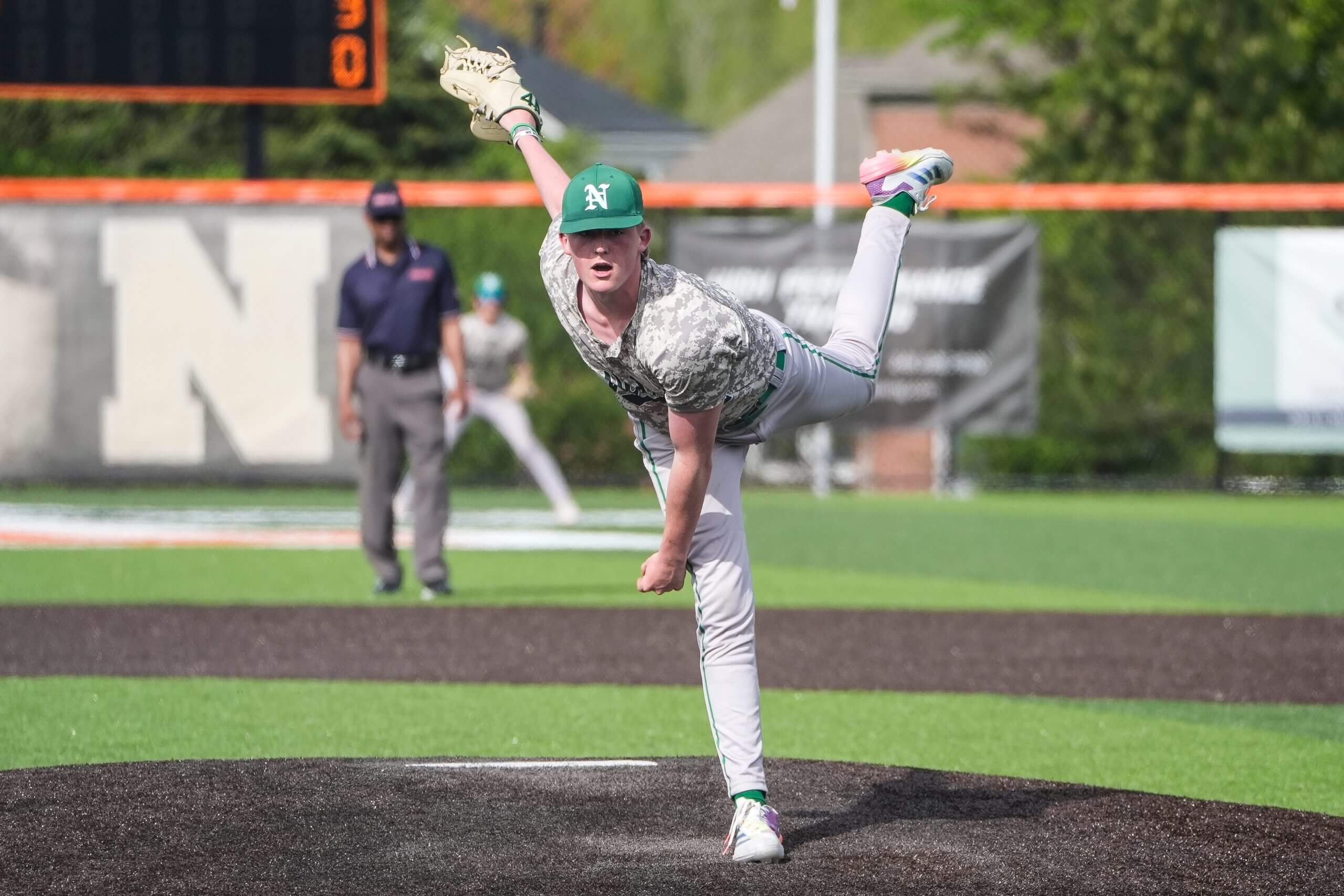

Scouting Report
Bats: L, Throws: L
Beidelschies lost his rotation spot at Arkansas with the return of Gage Wood after a season of disappointing results for the transfer from Ohio State. He’s up to 97 and the slider looks like it should be at least a 55 if not plus, but hitters disagree, tagging him for 14 homers in 61 2/3 innings this year with a ton of hard contact. There’s a big pitch selection problem here — for example, he threw the slider to right-handed batters more than twice as often as he threw his changeup. He gave up five homers on the slider in 2025, all to right-handers, so maybe don’t throw that pitch to righties? The slider’s break puts it directly into the path of a righty’s bat, while his fringy changeup doesn’t have the same problem. No lefties homered off the slider this year, so there’s at least one easy step to take to improve his results. He’s big, left-handed, has arm strength and can spin the ball enough for an above-average slider. It’s hard to see a starter here given the hard-contact issues, but I really want to see what happens if he starts using his best pitches in the right situations.
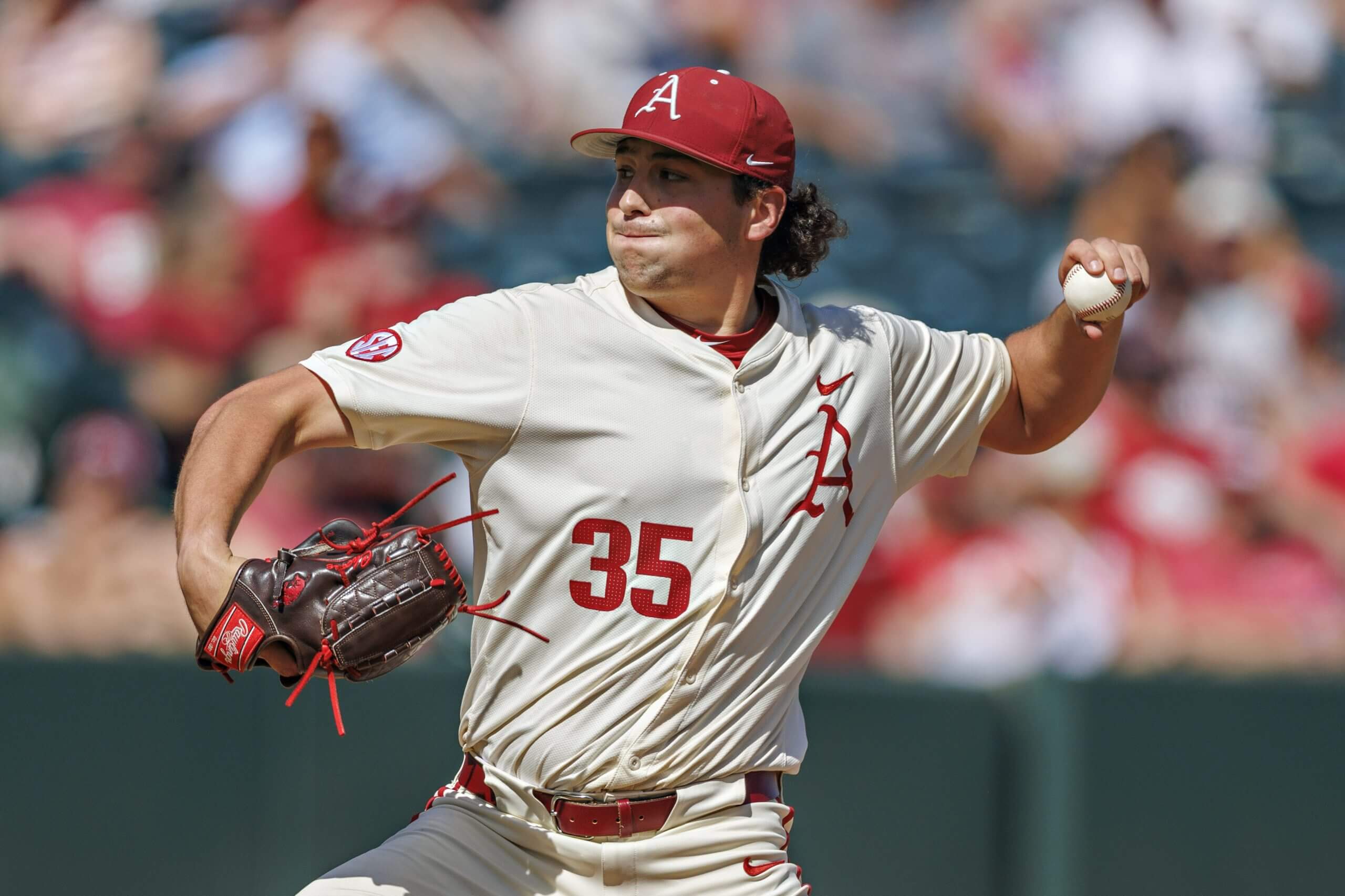

Scouting Report
Bats: R, Throws: R
Cervantes is the second-best high school pitcher in California this year, and if you get him on the right day you see a potential first-rounder. He’s been up to 97 with a plus changeup, working with a very easy delivery that gives him a chance to get to 55 or even 60 command. The breaking stuff is a work in progress, as right now he throws a slurve in the upper 70s that doesn’t break downward so much as die an ignominious death as it reaches the plate, perhaps not the ideal weapon to have as the competition increases. He can generate high spin rates but what he calls two different pitches just run together and he will at a minimum need someone to help him refine that into at least one, consistent pitch he can command. He has a little bit of a mature body even though he won’t turn 18 until August, and he’s had outings where he’s been more 91-93, so there’s a wide range of opinions on what his ceiling is. The fact that he already throws a lot of strikes and has a simple operation on the mound is enough of an argument to see a potential mid-rotation guy five or six years down the road.
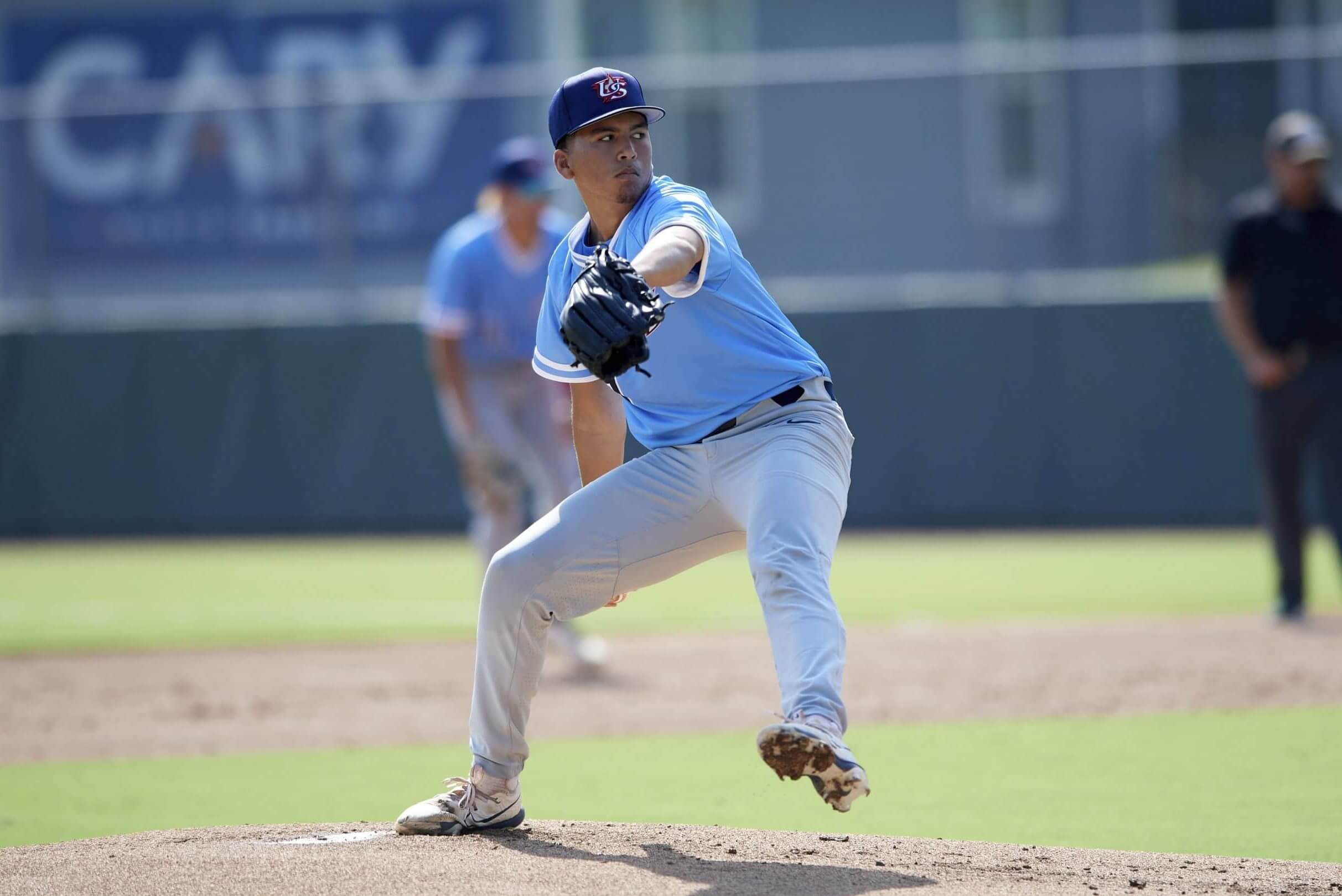

Scouting Report
Bats: R, Throws: R
Jaksa is a catcher — no, he’s not, he’s 6-5 or 6-6 — and technically he catches now, but he is not going to stay back there and belongs in center field. He’s a very good athlete, not a plus runner but someone who moves well enough to probably be a solid defender in right, boosted by his plus-plus arm. He has big power potential if he gets to enough contact; he doesn’t chase excessively but he has such long levers that he has holes around the zone. For a bigger guy, he keeps his hands inside the ball surprisingly well, with more trouble on fastballs up over the plate or breaking stuff down and away. He’s committed to Oregon.
Position Player
High School
C

Scouting Report
Bats: L, Throws: R
Hodge is an athletic catcher with a 65 arm, and he has good bat speed with some feel to hit despite getting too much over his front side. It’s a very handsy approach as a result, without getting much help from his lower half, and the bat speed is solid but not great. There’s some additional potential power here if he stays back on the ball more, which might also help his contact rate; he doesn’t expand the zone much but has had issues with contact when pitchers change speeds on him, with an overall whiff rate of 38 percent in tracked events from 2024-25. He’s committed to LSU.
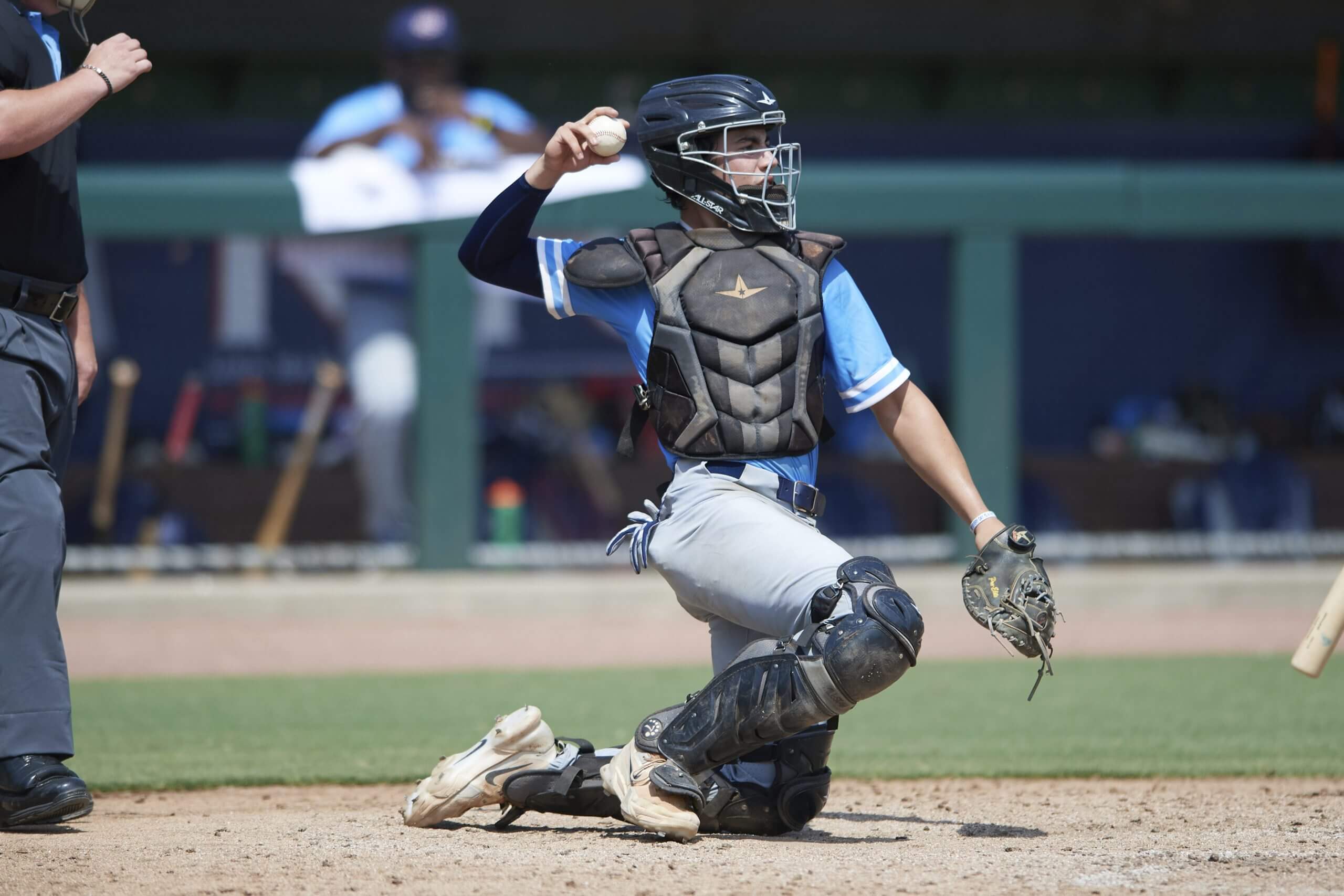
Position Player
High School
C

Scouting Report
Bats: R, Throws: R
Schaefer is an excellent athlete who plays right in the shadow of the University of Arkansas, where he’s committed. He got substantially stronger this past winter to project to at least 55 power, if not plus. He has bat speed and good bat control, but struggled with breaking ball recognition last summer and fall, before the strength gains, and hasn’t faced a lot of good velocity between the showcases or his spring season. He did show reasonable strike zone judgment, at least, chasing pitches well out of the zone just 13 percent of the time. He’ll go out at shortstop but is a decent bet to move to second or third, in part because he’s a 45 runner.
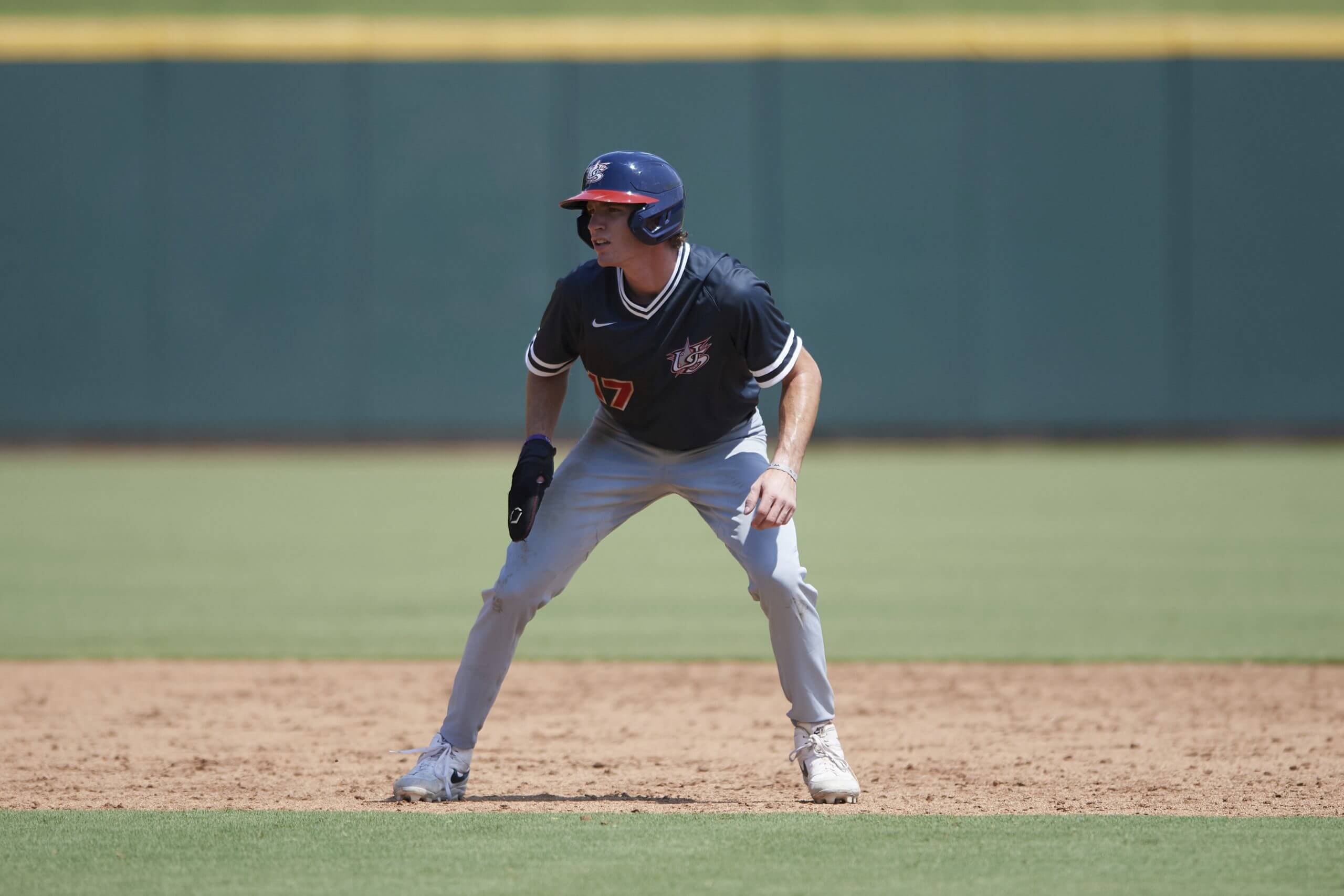
Position Player
High School
SS

Scouting Report
Bats: L, Throws: L
Blair is long and lanky, almost awkward-looking in the box, but when he syncs it up it’s a great swing that’s going to produce some big power. He’s shown a lot of swing and miss at showcases, unsurprising for his size, and he might take a longer time to develop because his body is going to change so much over the next few years. He had an ankle injury this spring from basketball and started late, but prior to that had shown enough speed to go out as a center fielder. One concern is that his mechanics at the plate started to break down a little midseason, and his upper and lower halves weren’t connected, showing that he might be a higher-maintenance hitter. He’s committed to Oklahoma to play basketball as well as baseball.
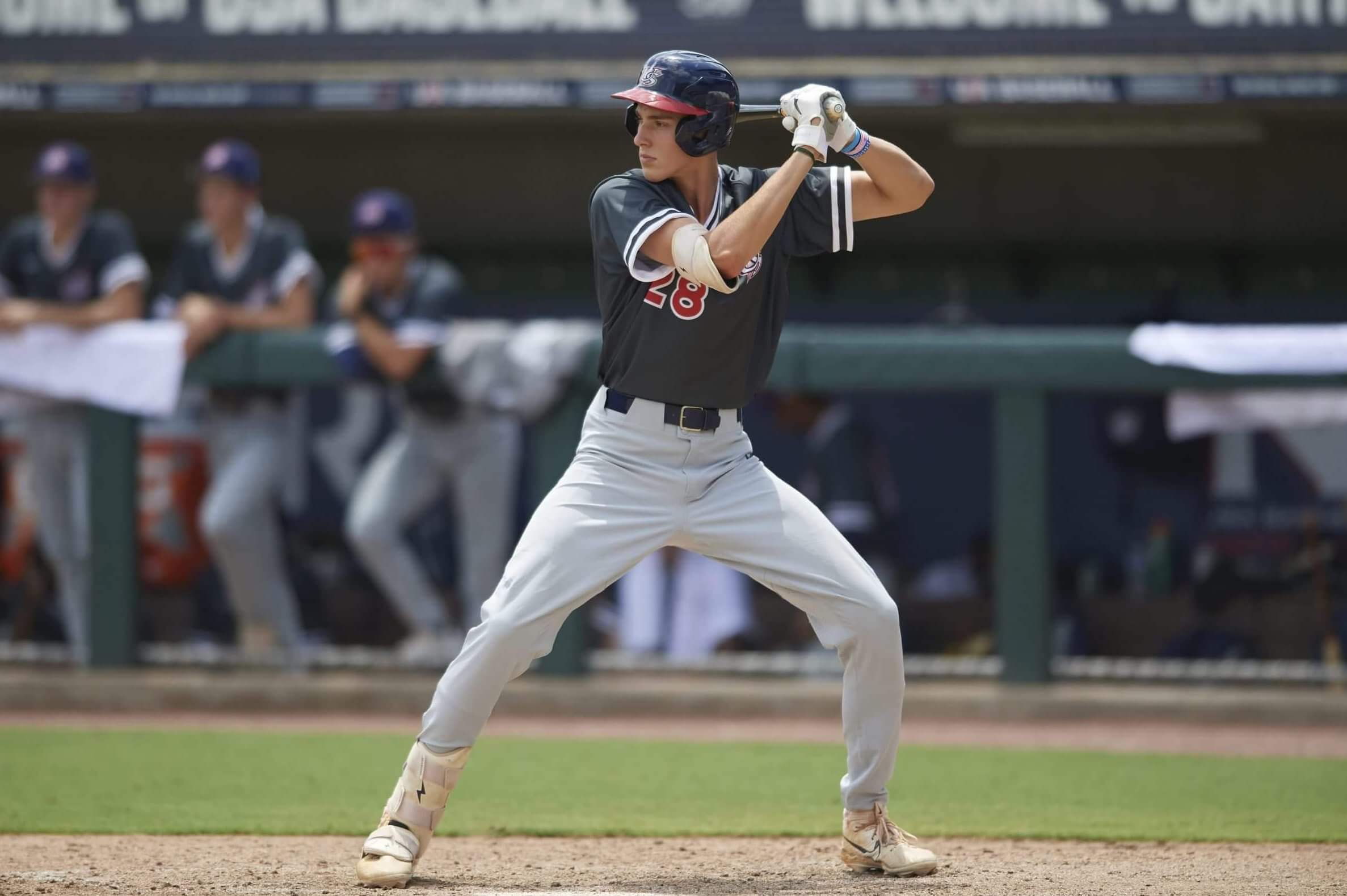
Position Player
High School
OF

Scouting Report
Bats: R, Throws: R
Petry is a power-over-hit first baseman/outfielder who hit 20-plus homers in each of his first two years at South Carolina, but with high strikeout totals, including 73 as a sophomore (25.2 percent). He’s seen his strikeout rate and power output drop this year, and he’s been especially bad against SEC pitching, with just a .388 slugging percentage in conference play. He does make exceptionally hard contact when he does get the bat to the ball, however, with a 90th percentile EV of 110 mph and a hard-hit rate that ranks in the top 3 percent of all D1 hitters, so there’s some foundation here for an impact bat even if he’s striking out around 25 percent of the time. He’s not a great defender anywhere and is big enough that he’s probably destined for first base. Petry sprained the AC joint in his left shoulder while crashing into the right-field wall and missed the last month-plus of the season except for one game, missing the Gamecocks’ lone game in the SEC tournament.
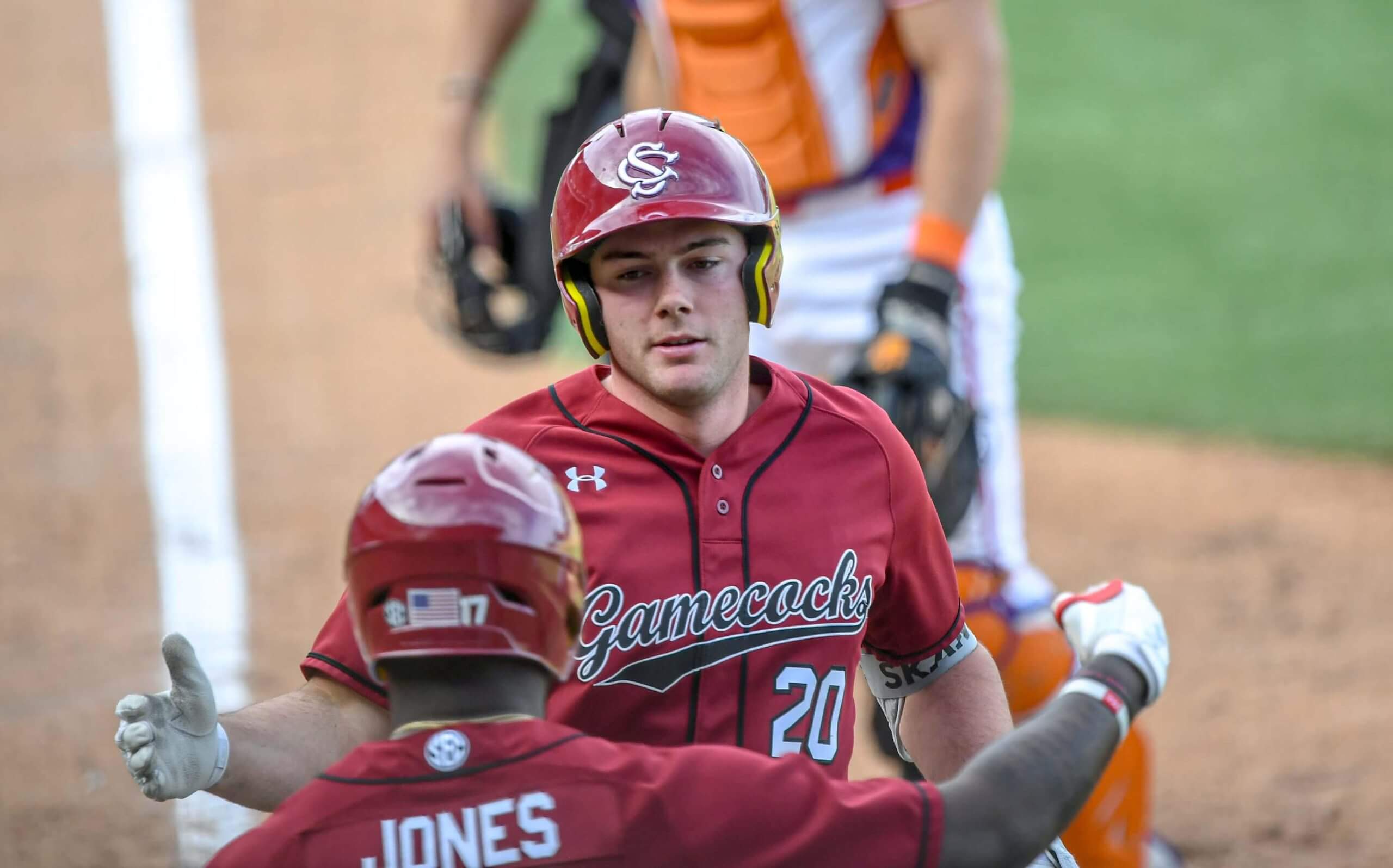
Position Player
4-Year College
OF
1B

Scouting Report
Bats: L, Throws: R
Parker’s twin brother, JoJo, is a first-rounder, but I wouldn’t sleep on Jacob, who is bigger and stronger, with much more present power, but a little more swing-and-miss to his game. He’s a center fielder and a strong athlete but I’d bet he ends up in right field in the long term. His BP is very impressive, with at least 60 raw power now, and he is about as sculpted as Michelangelo’s David. He does whiff more often than his brother does, but so does almost everybody in the draft class; Jacob only whiffed 16 percent of the time in tracked events last year, in over 200 pitches seen, so it’s not like he’s a hacker. He stays back better on the ball than JoJo does, which is part of why he gets to more power; if you smushed the two together, you’d get the No. 1 pick, hands down. Jacob may be overshadowed by his brother but he’s a legitimate offensive prospect in his own right who could be a solid OBP guy with 20-25 homers a year.
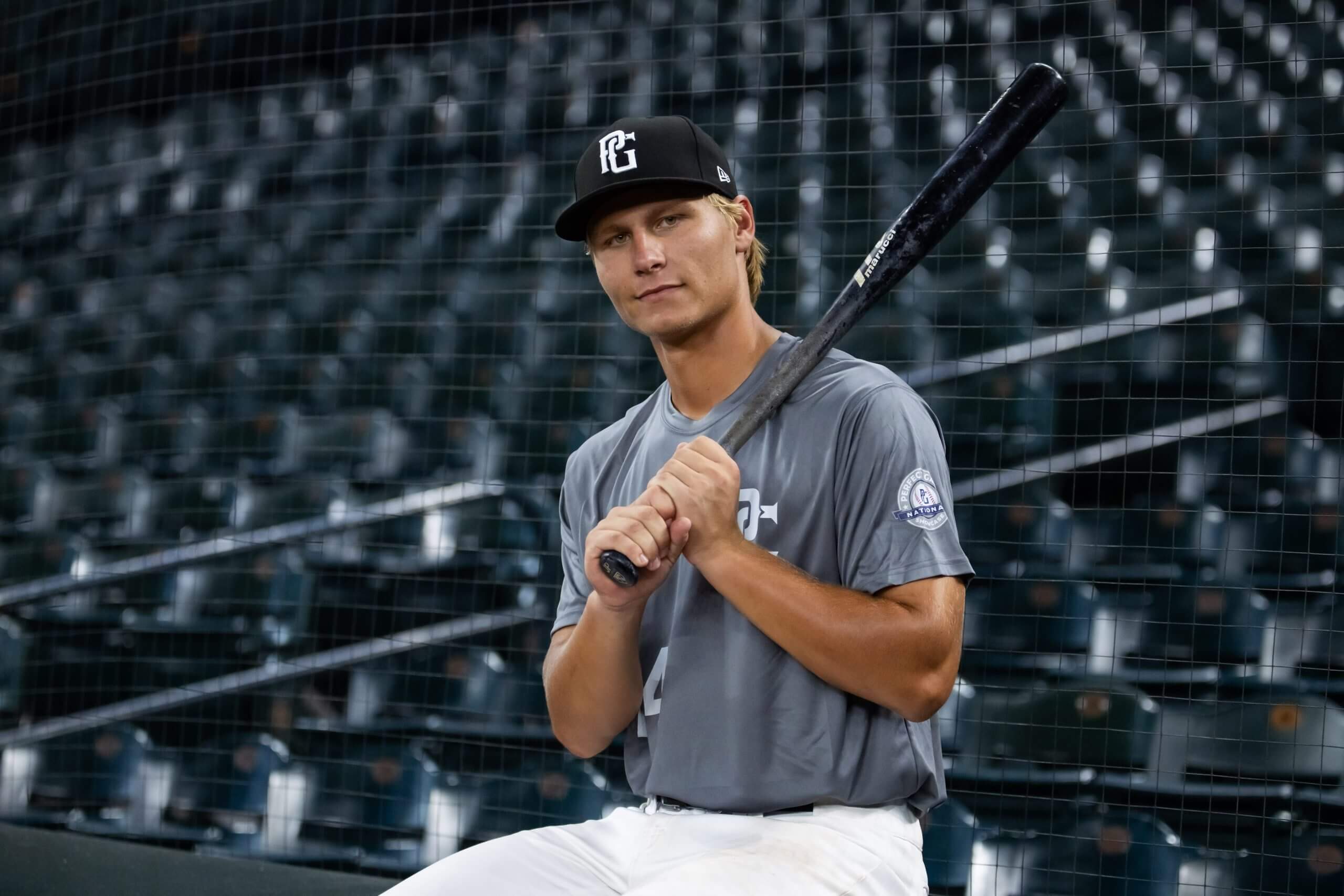
Position Player
High School
OF

Scouting Report
Bats: L, Throws: R
Dumesnil hit 19 homers as a sophomore for California Baptist and looked like he might end up in the first round as a high-contact hitter with power, but he went backward this year, with his strikeout rate soaring from 12.9 percent to 19.8 percent. He didn’t face any top-shelf pitching this year, either, only seeing a handful of pitches over 93 mph, one of the hazards of going to or staying at a mid-major school in the portal-NIL era. He’s a solid athlete who’s a 55 runner and could end up sticking in center field, and what might save him in the end is that he was so good on the Cape, hitting .311/.377/.489 in that wood-bat league, chasing too often (41 percent) but also showing some power to all fields. It’s probably more third-round than first at this point, with quality fourth outfielder the most likely outcome.

Position Player
4-Year College
OF

Scouting Report
Bats: R, Throws: R
Russell had Tommy John surgery on June 11, 2024, and pitched in a game this year for the Volunteers on Feb. 25, which is less than nine months from knife to mound. He hit 97 that day, sitting 94-95, and he’s largely held that, more 92-95, with an above-average slider. Tennessee used him very cautiously, sitting him for the entire month of March and limiting him to 25 1/3 innings on the season, even though they could have used him in their rotation. He wasn’t great at the end of the season, however, giving up 10 runs in 10 1/3 innings in four appearances from the SEC tournament through the Super Regionals, mostly through poor fastball command, although he still struck out 16 in that stretch. He’s barely pitched in college, but he has stuff and a good enough delivery to try him as a starter, with a clear floor in relief where he’d probably have two plus pitches.
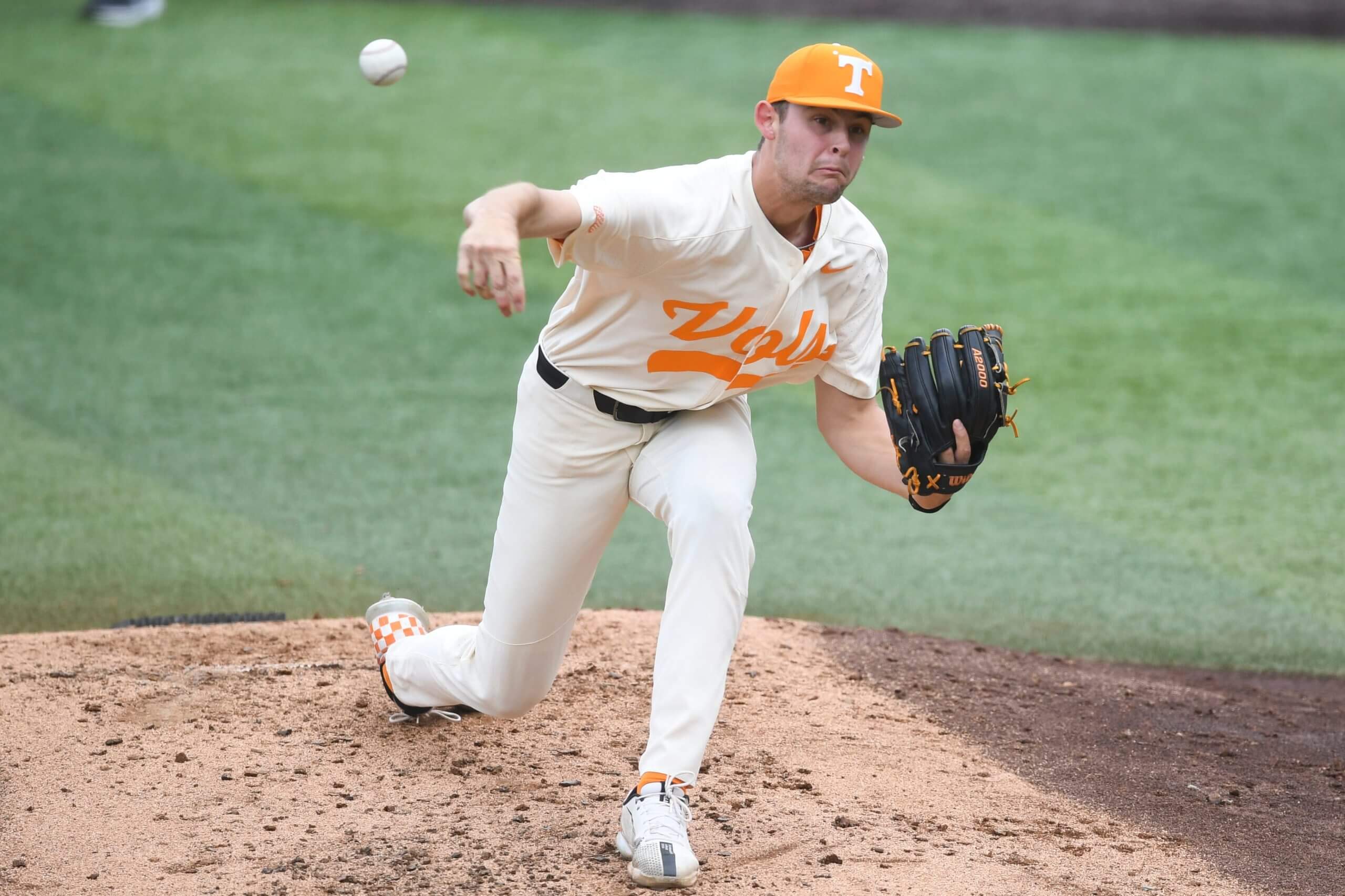

Scouting Report
Bats: L, Throws: R
Yost is an extreme contact-hitting shortstop who doesn’t whiff or chase, hitting for very little power in the process. His swing is short and he doesn’t stride or even lift his lead foot at all, just flinching it quickly before swinging, with a whiff rate on the circuit last year of just 7 percent (in a smaller sample of pitches than most players of his caliber had). He’s a true shortstop and a plus runner who could probably also go to center if need be. He does have room to get stronger and should impact the ball more when he does, although the current swing isn’t going to produce many homers. He’s committed to Florida.
Position Player
High School
SS

Scouting Report
Bats: R, Throws: R
Phelps had a tremendous freshman year for the Dawgs in 2024 but fell off across the board this year, with his strikeout rate doubling and his power dropping dramatically as he’s faced better competition with more playing time. It’s power over hit, with a little too much of a tendency to chase pitches out of the zone; his chase rate on the year was 32 percent, and a very high 29 percent on pitches well out of the zone. He’s only walked 30 times total in 398 PA for the Bulldogs over two years, with no evidence of an adjustment to his approach between the two seasons. Phelps is age-eligible for the draft as a sophomore as he turned 21 in late June. He’s a corner outfielder, so he’ll have to hit and get on base more to profile as a regular.
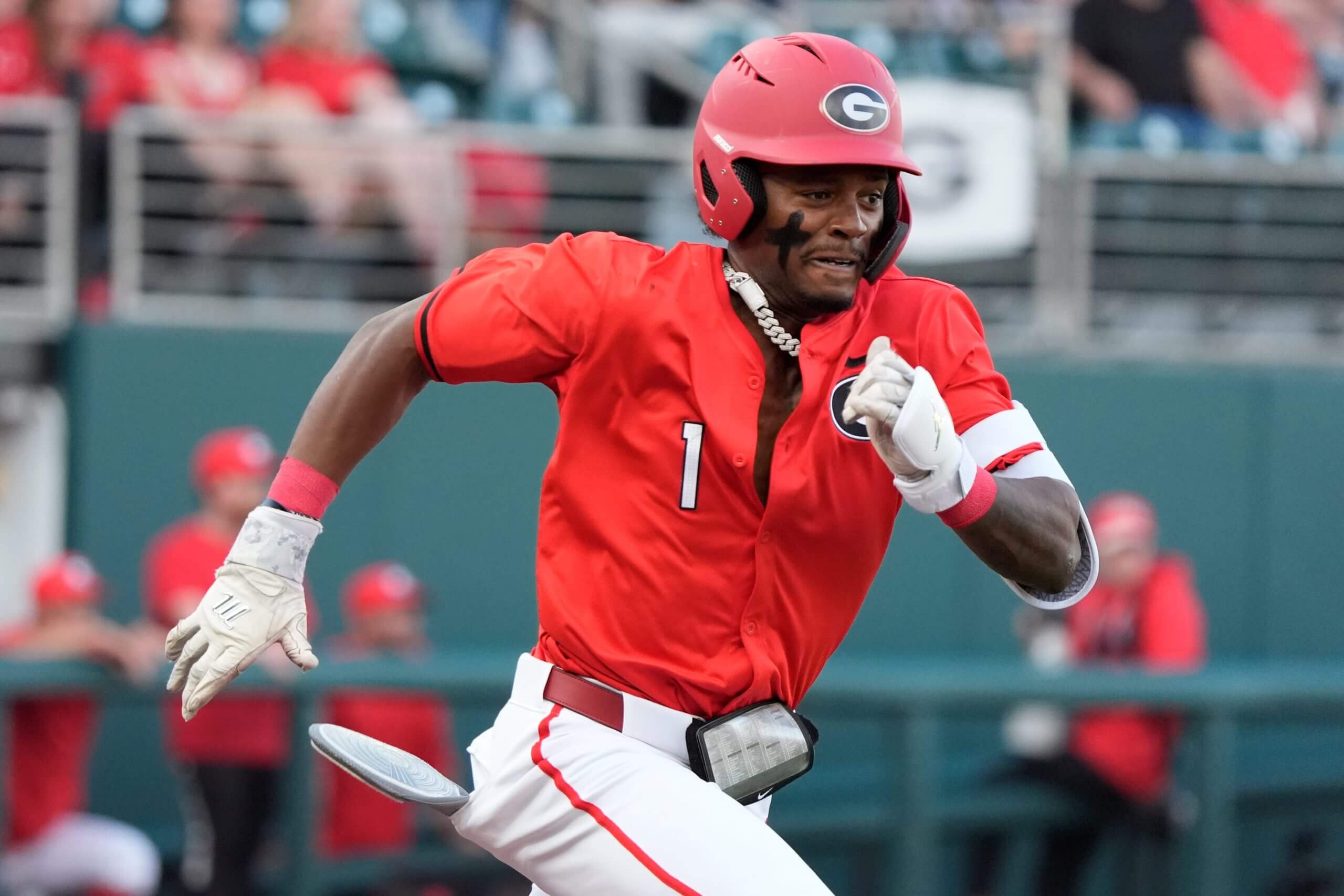
Position Player
4-Year College
OF

Scouting Report
Bats: R, Throws: R
Southisene’s older brother Ty was the Cubs’ fourth-round pick last year out of the same high school (which is also Mason Neville’s alma mater). Tate is a little ahead of Ty across the board — better hit tool now, better shortstop — with the same raves about his makeup from scouts. He probably goes out as a shortstop but moves to second or third in the high minors, or even center field, as he’s a plus runner. He’s had some issues with off-speed stuff at showcases, and didn’t make as much hard contact as some of his peers, so he might be more of a fringe power guy than an average one. He’s committed to Southern California, where another brother, Tee, is currently playing.
Position Player
High School
SS

Scouting Report
Bats: R, Throws: R
Becker, whose older brother Ethan is at Virginia and is likely to be a top-10 pick in 2026, came into this spring as a potential late first-rounder, but he started swinging for the fences more and some scouts have come back questioning whether he’s ready to hit pro pitching. His swing got much longer this spring as he’s trying to pull the ball in the air, leading to a more grooved path that pro pitchers will probably exploit pretty easily. He’s a good athlete who has a real chance to stick at short, with above-average speed and great hands. He has some power, but last summer was more of a hitter with occasional pop, and if he gets back to that — maybe in pro ball, maybe in college next year — he’ll have a chance to be a regular. As of mid-June, he’d decommitted from Virginia and hadn’t announced a new destination.
Position Player
High School
SS

Scouting Report
Bats: L, Throws: L
Bauer has been up to 102 mph multiple times this spring, getting himself a ton of attention, but the rest of the package doesn’t live up to the pure velocity; he was 94-98 when I saw him with a 45 slider and 40 command. There’s plenty of effort here and he doesn’t have a great feel for the secondaries. He can generate huge spin rates on his breaking stuff, but because he doesn’t throw enough strikes with the fastball, he hasn’t developed enough feel for throwing and locating his slider, and casts it to try to get it in the zone rather than throwing it with conviction. He cuts himself off in his landing, and really, no one is throwing 102 without some effort anyway. There’s a ton to dream on here between the pure arm strength and spin rates up to 3,000 rpms, especially from the left side, but you have to trust your pitching development process.


Scouting Report
Bats: R, Throws: R
Moody is a projection right-hander who’s 90-93 now, touching 96 in shorter outings. He has a hammer slider along with a cutter and changeup, as well as a slow curveball he should probably ditch. The slider is very sharp and he can throw it near the zone or down and away as a chase pitch for right-handed batters. He’s athletic and moves well but for some reason doesn’t take a very long stride even though he’s 6-7, so that might be an easy way to gain some deception and possibly more velocity. He’s committed to Arkansas and if he goes there I bet he’ll hit 99 at some point.
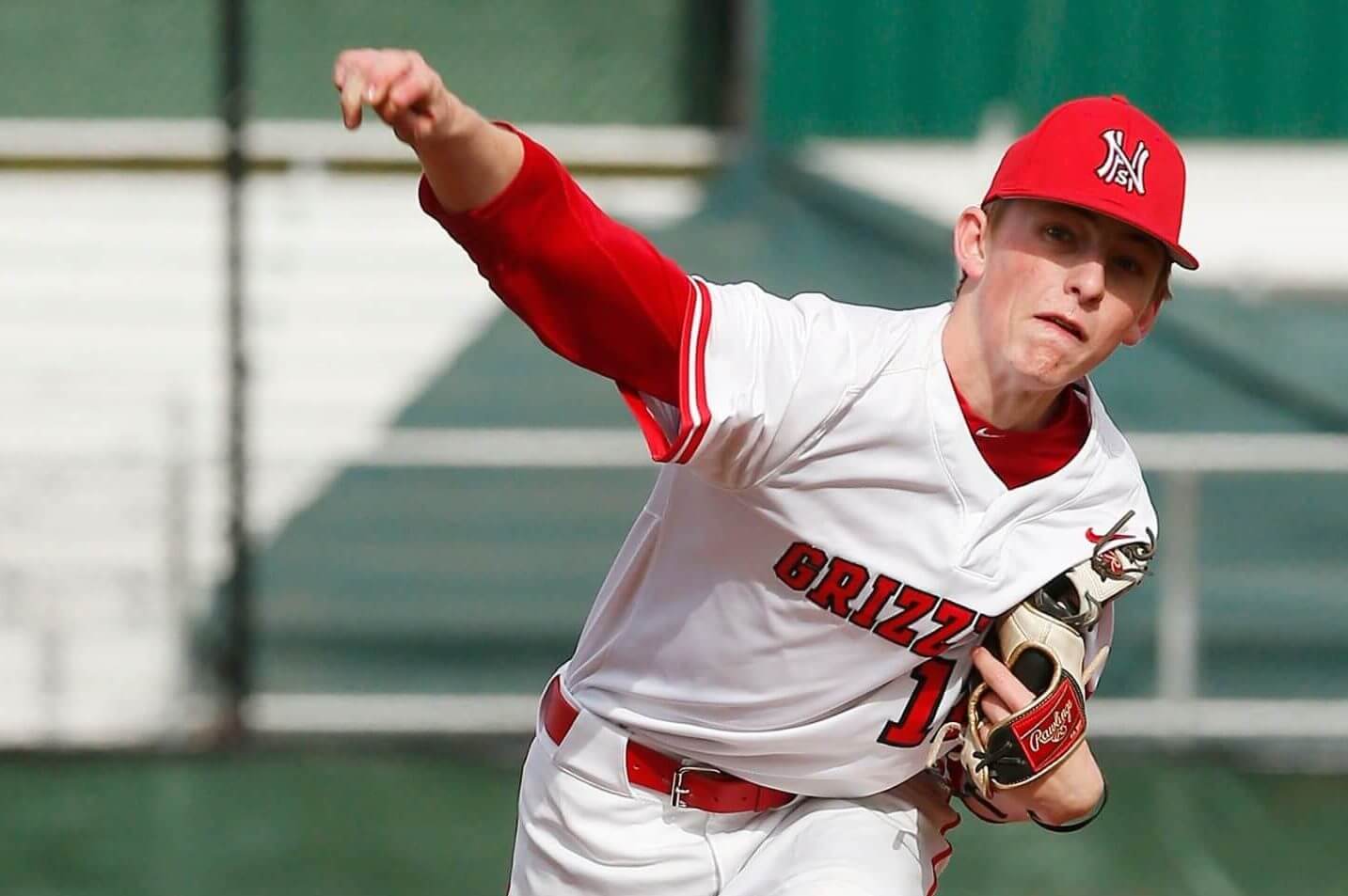

Scouting Report
Bats: L, Throws: L
McKenzie sits 90-92 with a 55 breaking ball — I’ve heard it called a curveball, while Synergy tags it as a slider — and he has feel for a changeup that’s too close to the fastball in velocity right now, offering some physical projection for more velocity, although the long arm swing may be hard to repeat for real command. The breaking pitch, whatever you call it, might end up plus or better, as he can spin it and seems to have better command of that pitch than the fastball. He’s a good later pick for a team looking at projection arms rather than guys with big fastballs right now. He’s committed to LSU.

Scouting Report
Bats: R, Throws: R
Dickinson started out hot, but it turned out he was feasting a bit on non-conference opponents; in SEC play this year, he hit .302/.441/.457 with just four of his 12 homers. He’s also padded the overall stat line (.312/.463/.534) with 23 HBPs, so his on-base skills are probably not as strong as his OBP this spring might imply. A transfer from Utah Valley State this spring, Dickinson is a high-contact hitter with excellent bat speed who hammers fastballs; on tracked pitches 94-plus mph this year he hit .458/594/.791 and whiffed just 11 percent of the time. His pitch recognition is just fair, and it’s just average power right now, without a ton of leverage from his lower half. He played all over the field for Harwich last summer in the Cape Cod League, then stuck at second base exclusively for the Tigers this spring, which is his most likely long-term position — if it’s not there it might be left field. As long as he stays on the dirt he could be a solid regular.
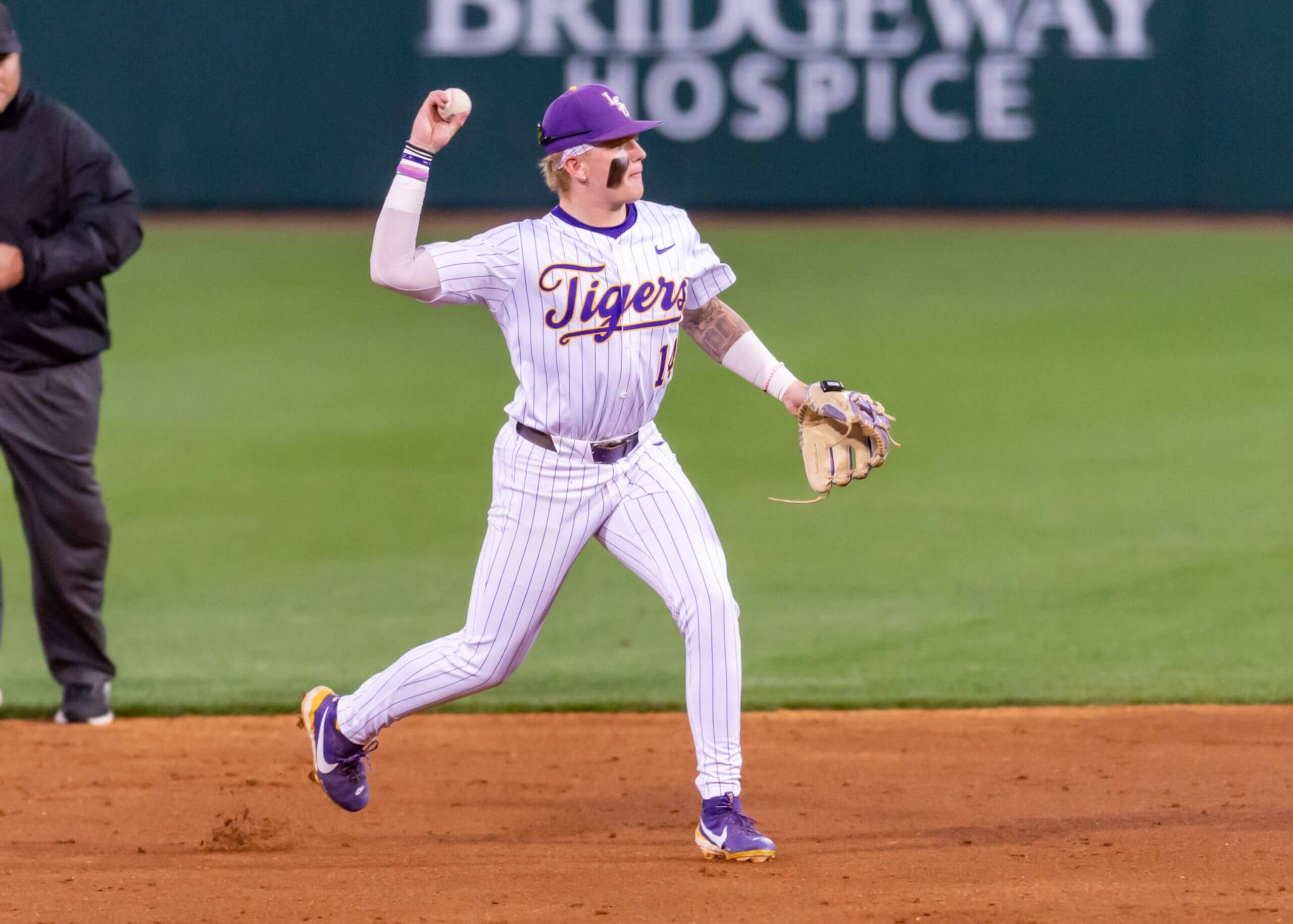
Position Player
4-Year College
2B

Scouting Report
Bats: L, Throws: R
Summerhill missed about a month this spring with a fractured hand, then had a minor leg injury in his second game back that cost him a couple of additional games. He hasn’t been quite the same since his return, with a .277/.462/.425 line from the start of May through the Regionals, down from .409/.495/.527 when he broke his hand. He does have an elite hit tool with excellent zone control, rarely whiffing on strikes and staying in the zone more than the average hitter. He has shown enough hard contact in the past and early this season to project another half-grade of power with some swing help, but the hand injury clearly sapped some of that strength and his overall hard-hit data is down from his sophomore year. He’d be a top-10 pick if he could play center, but the Wildcats moved him to right this spring and he wasn’t great in center on the Cape last summer.
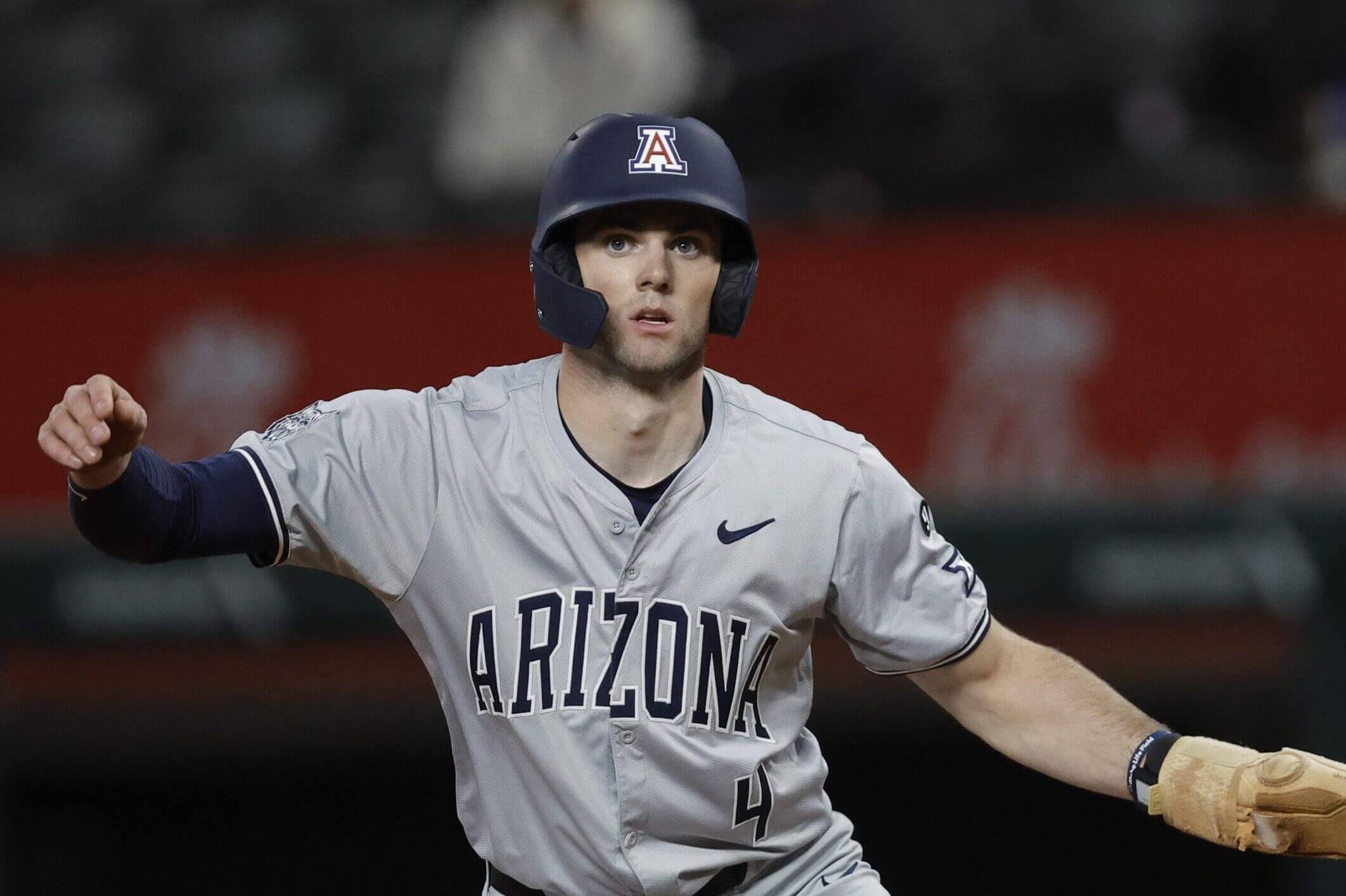
Position Player
4-Year College
OF

Scouting Report
Bats: L, Throws: L
Appenzeller is a two-sport athlete who rolled out of basketball right into baseball this spring, so he’s been behind most other pitchers in velocity or readiness to pitch. He’s been up to 94 before, more 88-92 this spring, and can spin a slider well enough to see a future plus pitch there. He also starred as a point guard in hoops and is apparently a pretty good golfer too, which is evidence of his athleticism but also makes it unsurprising that he’s a little more raw on the mound. He takes a long stride towards the plate, making good use of that 6-6 frame, but there’s very little rhythm to the delivery right now and his arm isn’t always on time. He’s committed to Tennessee and I’d be 0 percent surprised if he went there and ended up a first-rounder in 2028 given that school’s recent track record developing pitchers.
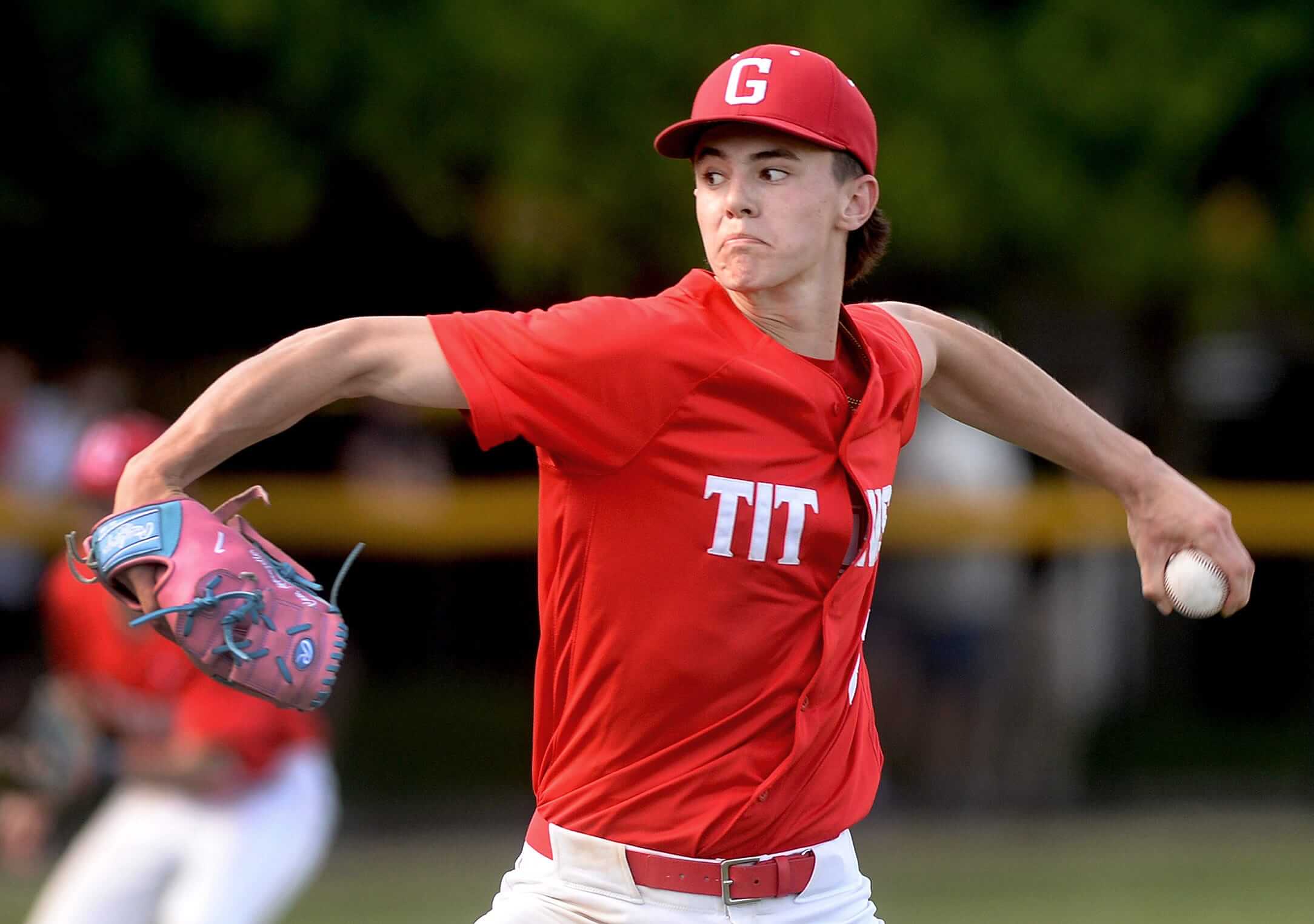

Scouting Report
Bats: R, Throws: R
Grindlinger is a polished high school catcher with a clean swing that looks like it’ll get him to at least 55 power, maybe peaking around 20-22 homers a year if he’s playing every day. He can expand the zone slightly with two strikes but doesn’t chase pitches beyond the shadow of the zone very much (just 15 percent in tracked events since the start of 2024). He has a plus arm and a good catcher’s build, with some blocking skills already, enough to see him staying at the position and perhaps ending up an above-average defender. He can get a little too pull-heavy and pitchers will probably attack him soft away if he doesn’t tighten up some of his swing decisions, probably when he gets to Double A or above. He looks like at least a quality backup with a chance to be an everyday catcher.
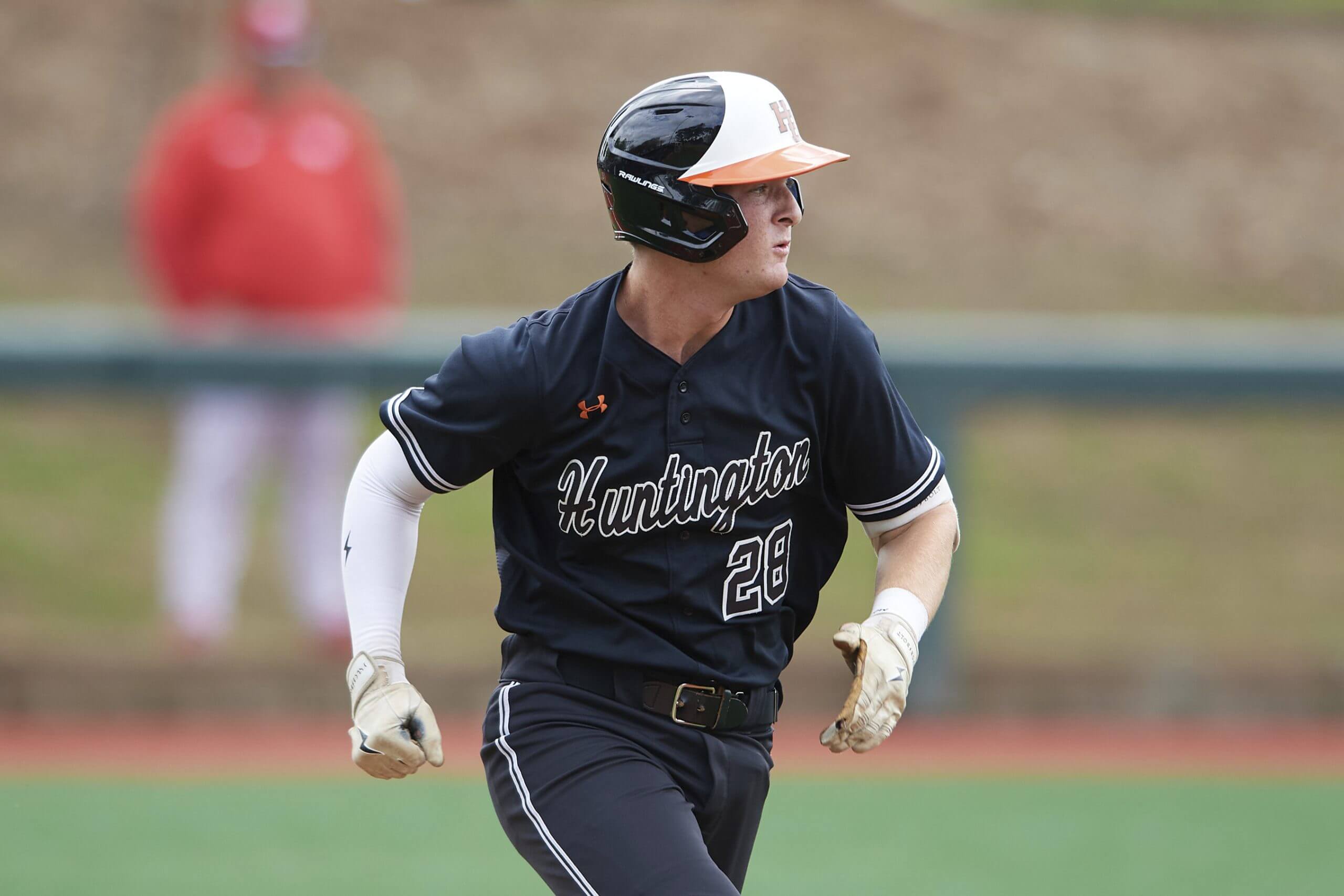
Position Player
High School
C

Scouting Report
Bats: L, Throws: R
Kent has 55 power and good enough contact skills to see a future utility infielder. He’s best suited to second base but could back up at shortstop. He had some buzz coming into the year, but wasn’t able to pull his average up over .300, and saw his strikeout rate rise in conference play to 19 percent (versus just 8 percent outside of it). He takes a huge hack for someone without plus power, rolling over too many pitches to second base, and would benefit from shortening up on more pitches middle-away and using the opposite field more — which he’s done enough already to show the skill is in there. There’s some small chance he could develop into an everyday guy if he really refines the approach, going all-out on the stuff middle-in he can drive but using the whole field on more pitches, while the odds are higher he ends up an extra infielder.
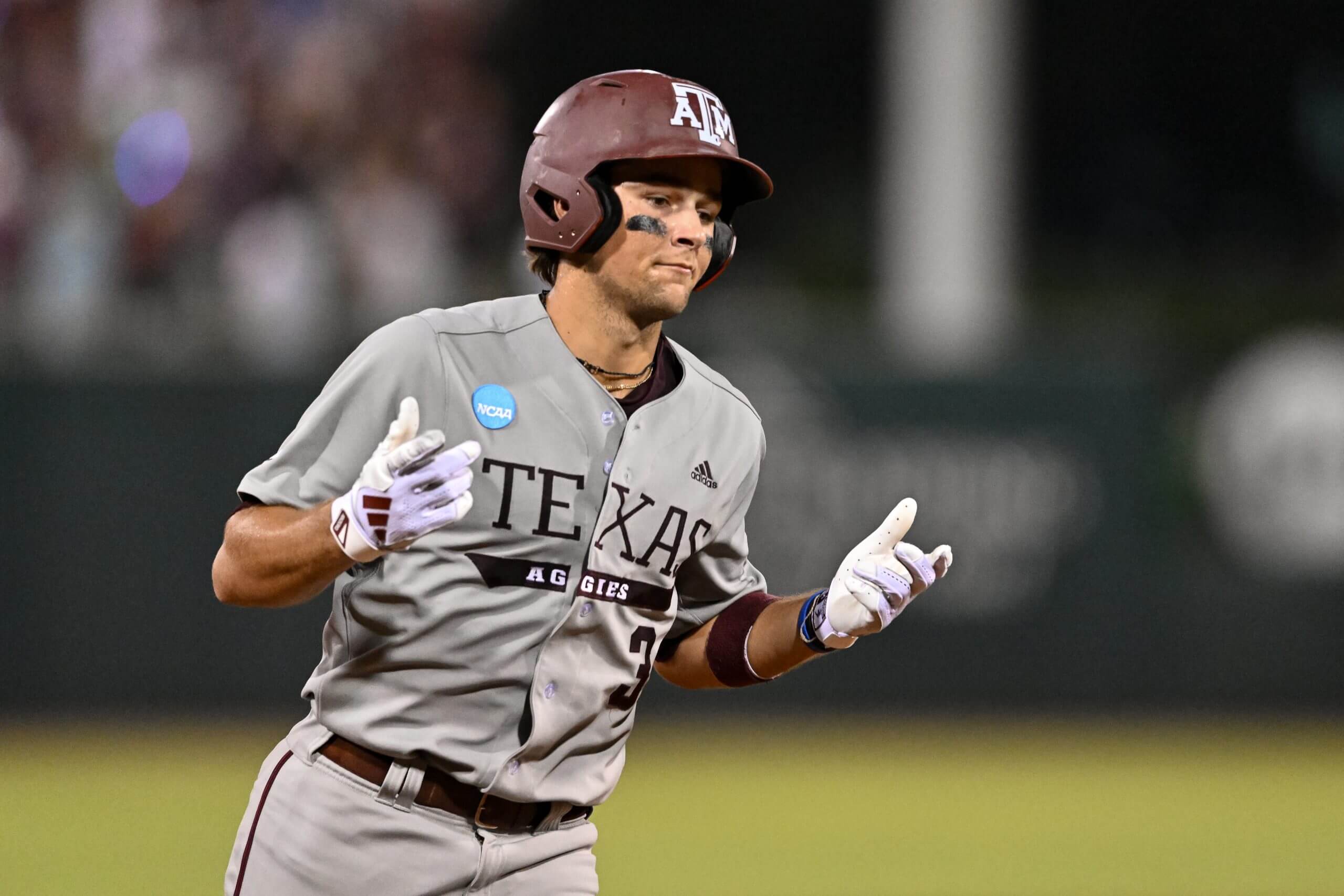
Position Player
4-Year College
2B
SS

Scouting Report
Bats: L, Throws: R
Ebel is a natural shortstop who’s playing third base for his high school team because their shortstop is first-rounder Billy Carlson, although in the long run Ebel’s going to end up at the hot corner anyway, or maybe at second, with his strong arm making third the more likely spot. I didn’t see good bat speed from him at NHSI, but he hasn’t had trouble with velocity, even up to 98, at showcases and other tracked events. It’s a solid swing for contact and some low line drives, probably not power as currently constituted. He has a chance to be a regular in the Bill Mueller mold, where his value is in his average/contact skills and solid defense at third. Talk of his high school (Corona) having three first-rounders was overblown, but he’s a solid enough prospect to go on Day 1. He’s committed to LSU and won’t turn 18 until late July. He’s the son of Dodgers coach Dino Ebel.
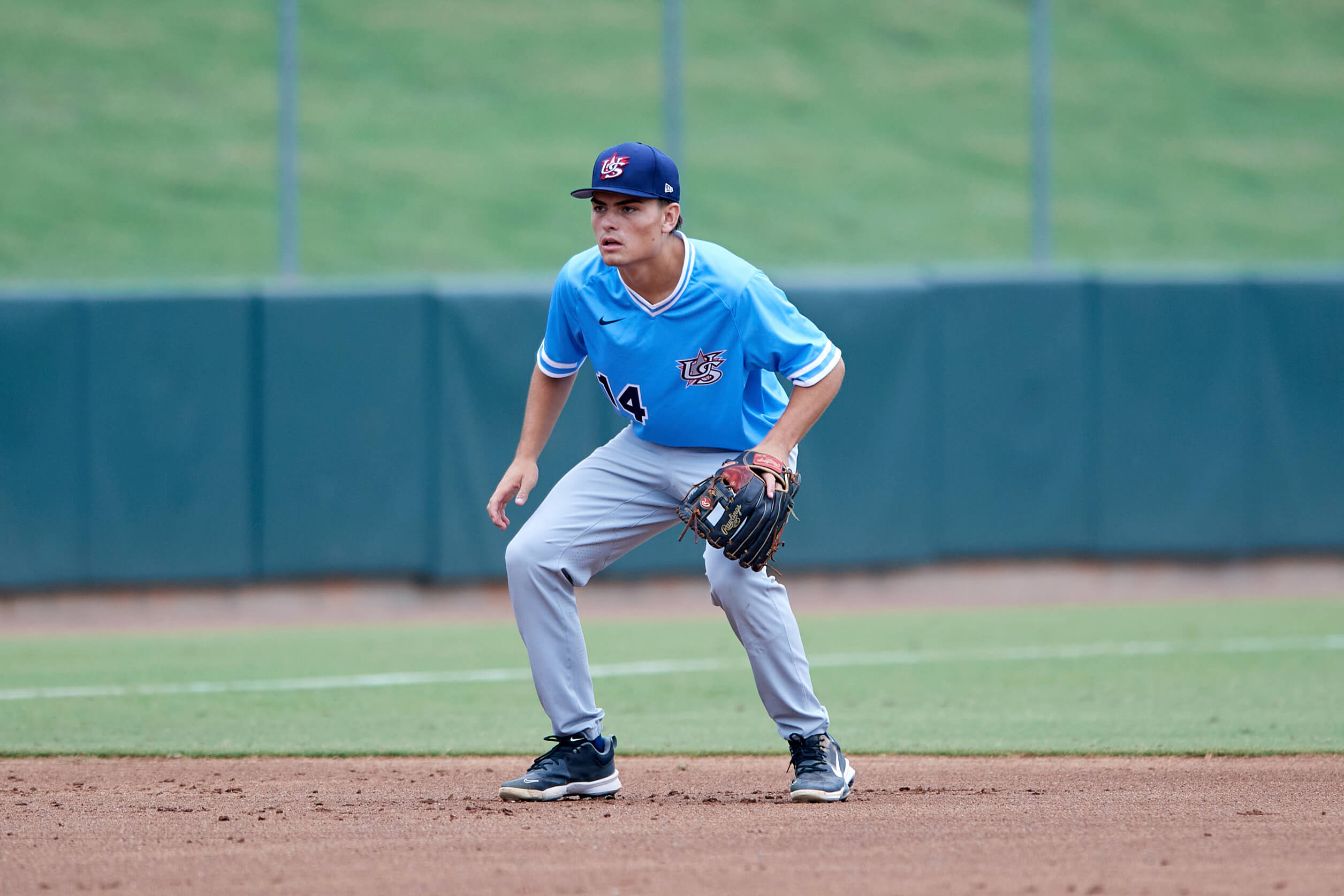
Position Player
High School
3B

Scouting Report
Bats: L, Throws: R
Schubart has plus power, but the hit tool is a real question, as he continues to strike out too often and saw his average drop to exactly .300 this year from .370 as a sophomore. He doesn’t hit breaking stuff, with a 40 percent whiff rate on sliders (per data from Synergy), and whiffed a third of the time on fastballs 94 and up. He’s mostly played right field and is average there, with some experience at first and in left. So why is he here? He hits the ball as hard as anyone in Division I, topping out over 116 mph this year with a hard-hit rate in the top 3 percent of all qualified hitters, so even small improvements in his approach that improve his contact rate at all should yield large benefits. He was high school classmates with Ike Irish and Rangers prospect Brock Porter.
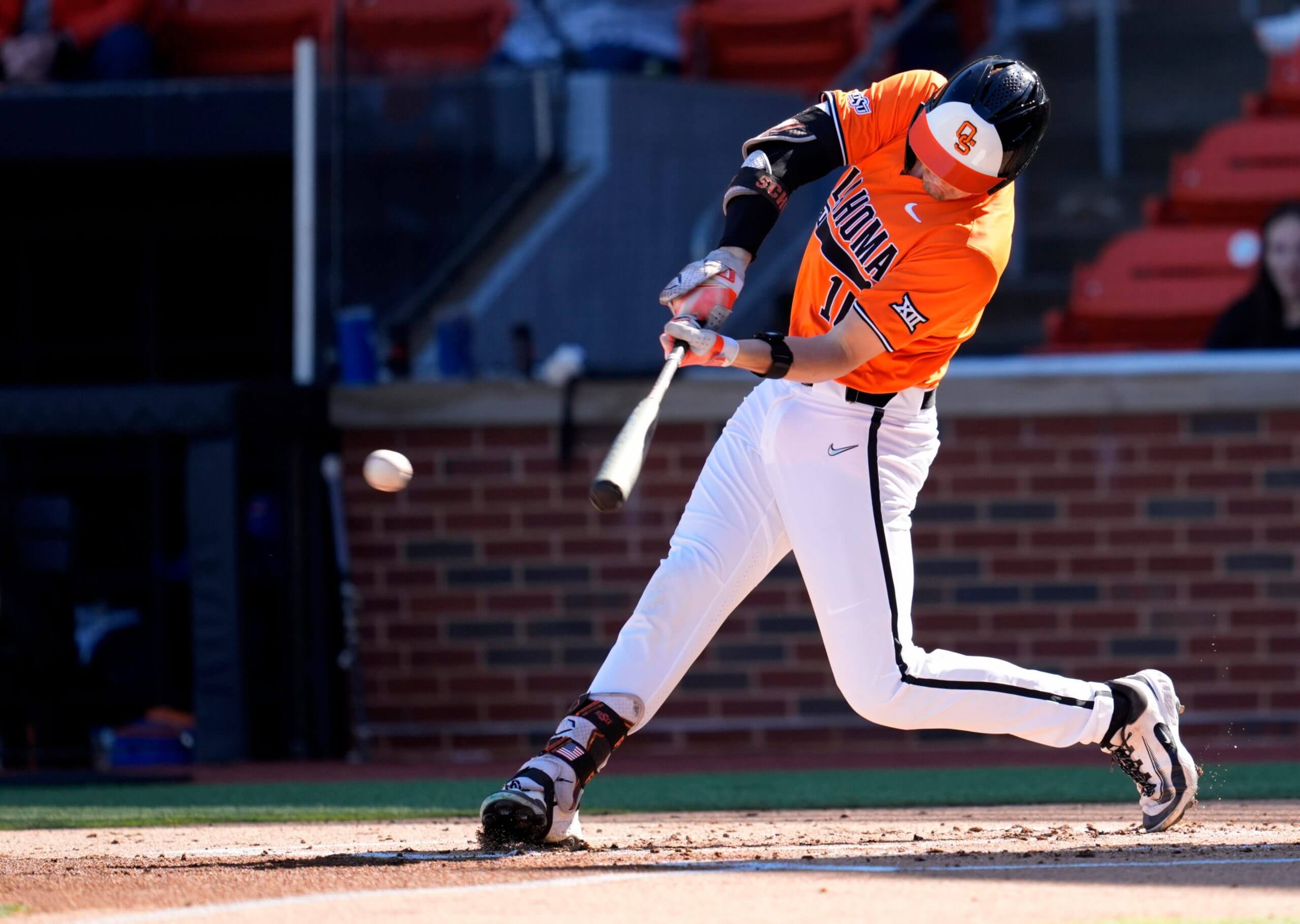
Position Player
4-Year College
OF

Scouting Report
Bats: R, Throws: R
Carmichael is a capable backstop with some power and enough contact skills to at least see a future backup catcher, probably a low-OBP type who might get to 15-plus homers if he plays every day. He hit .329/.398/.613 this spring for the Sooners with a 15.7 percent strikeout rate, but he did a lot of damage against weaker pitching — he did nothing with fastballs 94 mph or harder, and his whiff rate on breaking stuff was over 30 percent on the year — so in pro ball I think it’s more of a 40 or 45 hit tool despite the strong triple-slash line here. He’s handled the Witherspoon twins, who both show premium stuff, well enough to see him doing the same in the upper levels of pro ball.
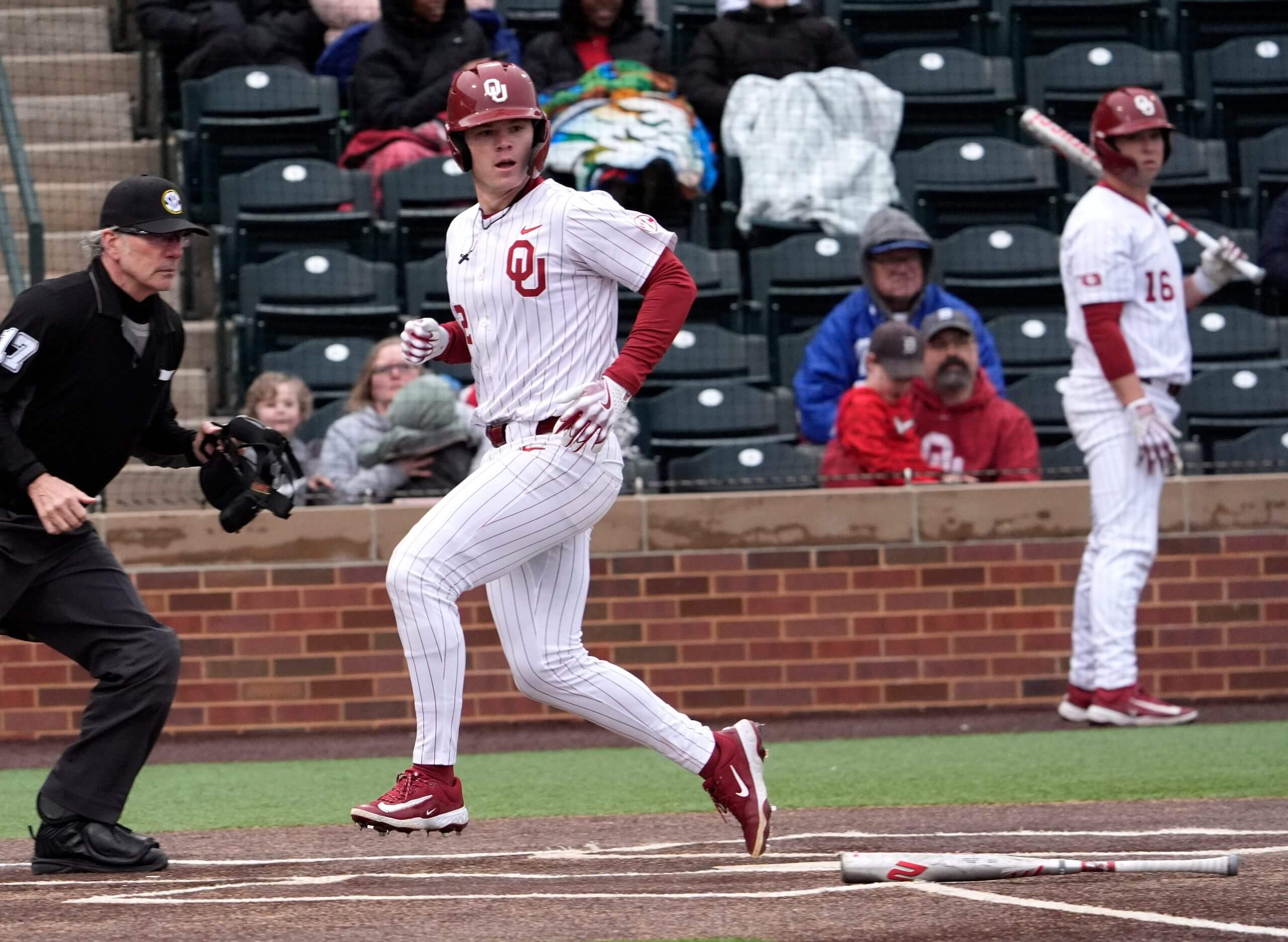
Position Player
4-Year College
C

Scouting Report
Bats: R, Throws: R
Brumbaugh is the third-best high school shortstop in Oklahoma this year, as it turns out, because of those two guys (Ethan Holliday and Eli Willits) who are going in the top 10. He can hit some and has a good swing to produce line-drive contact off fastballs, collapsing his back side somewhat on breaking stuff which can make him more uphill or just cause him to whiff. He has a plus arm, up to 95 off the mound, with the hands and range for shortstop right now, although he could end up at third base as he matures. He’s committed to Arkansas.
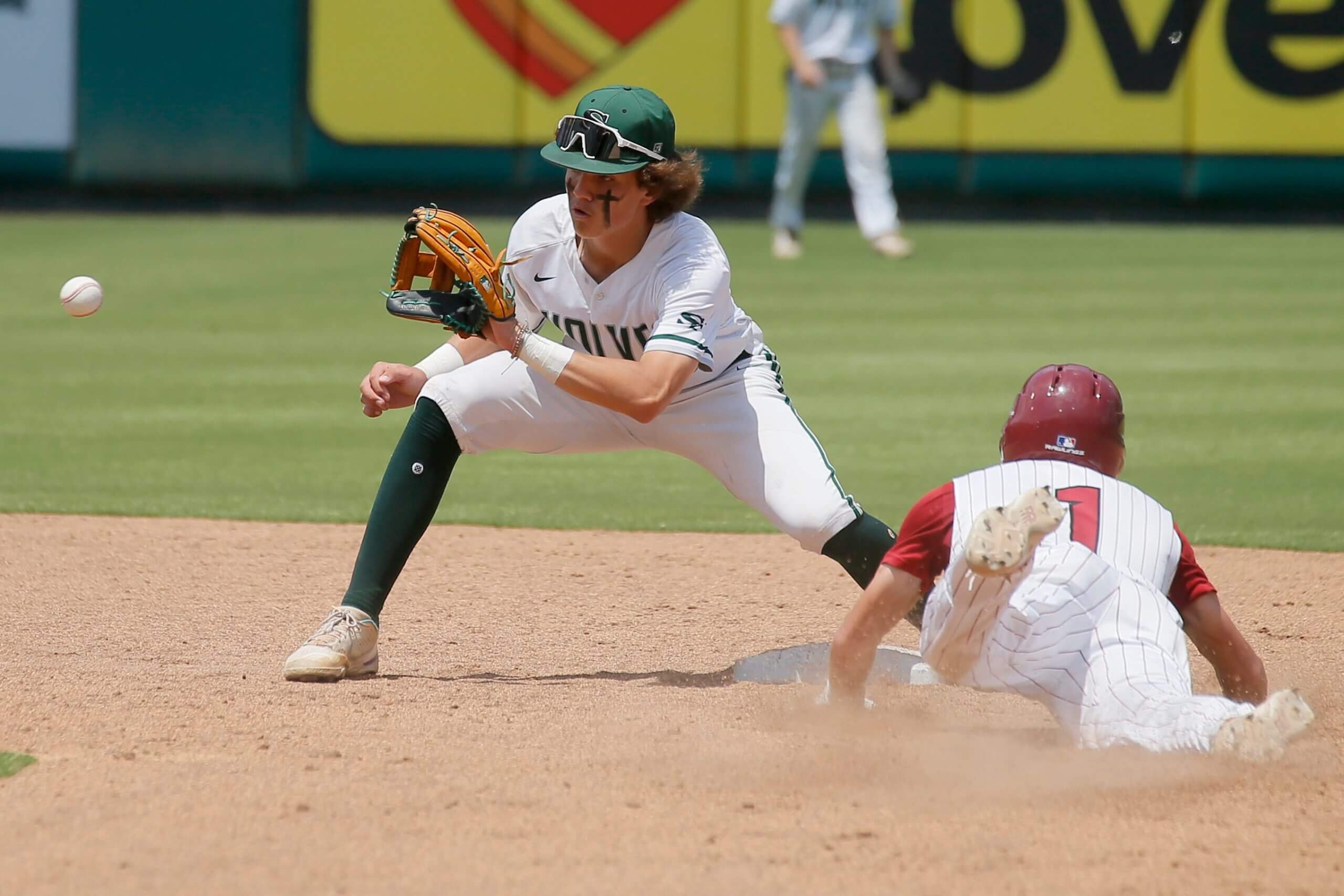
Position Player
High School
SS
RHP

Scouting Report
Bats: R, Throws: R
Ellwanger has been up to 100 mph with enough of a slider to see a two-pitch reliever there. He started for Dallas Baptist this year but walked 13.5 percent of hitters, allowing a .382 OBP in the process. He has a spike curveball with a very pronounced break but doesn’t command it at all, getting some in-zone whiffs on it (good) but not a lot of chase (because it’s easy for hitters to spot). His slider is the more interesting pitch even though it doesn’t break as much — it’s 89-92, closer to a cutter in velocity and movement than to a slider, and at least generates more chases, with hitters swinging at it 38 percent of the time it’s out of the zone versus 26 percent on the curve. He has a changeup, using it less than 5 percent of the time, and it’s pretty firm anyway, up to 92 with just a little two-seam-like action. It’s just not a starter’s package as is, more than anything else because of the lack of command.
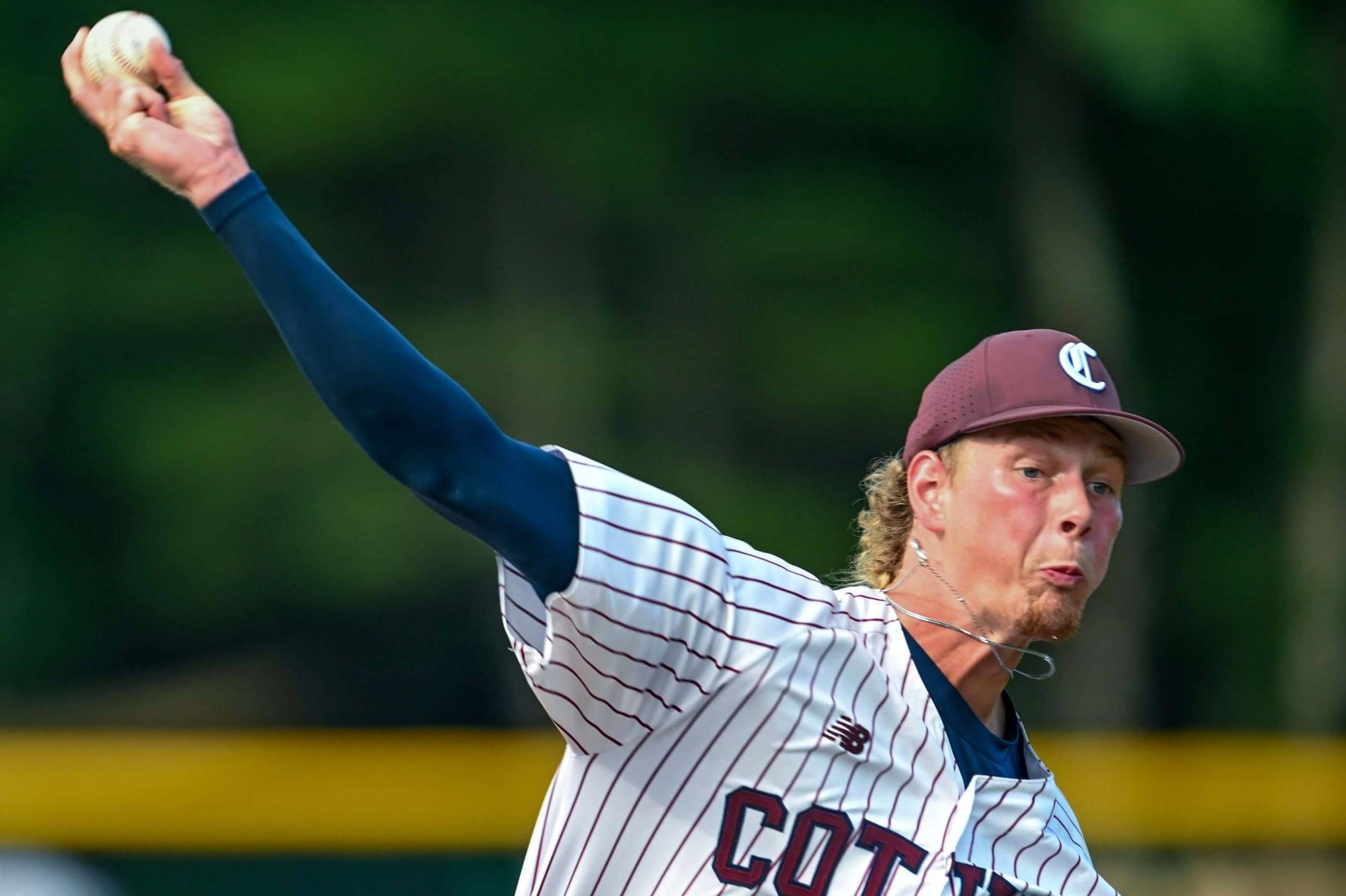

Scouting Report
Bats: R, Throws: R
Patrick has a solid swing and plenty of tools, with power and a plus arm, and shows well in workouts, but in games he’s had trouble with contact and doesn’t show the same run tool he flexes in the 60-yard dash. His swing is loose and easy with great bat speed, although he does load his hands fairly deep, and he widens his stance with two strikes to try to avoid swinging and missing. He’ll be 19 at the draft and is committed to LSU, so he may be unsignable and would be draft-eligible again in 2027.
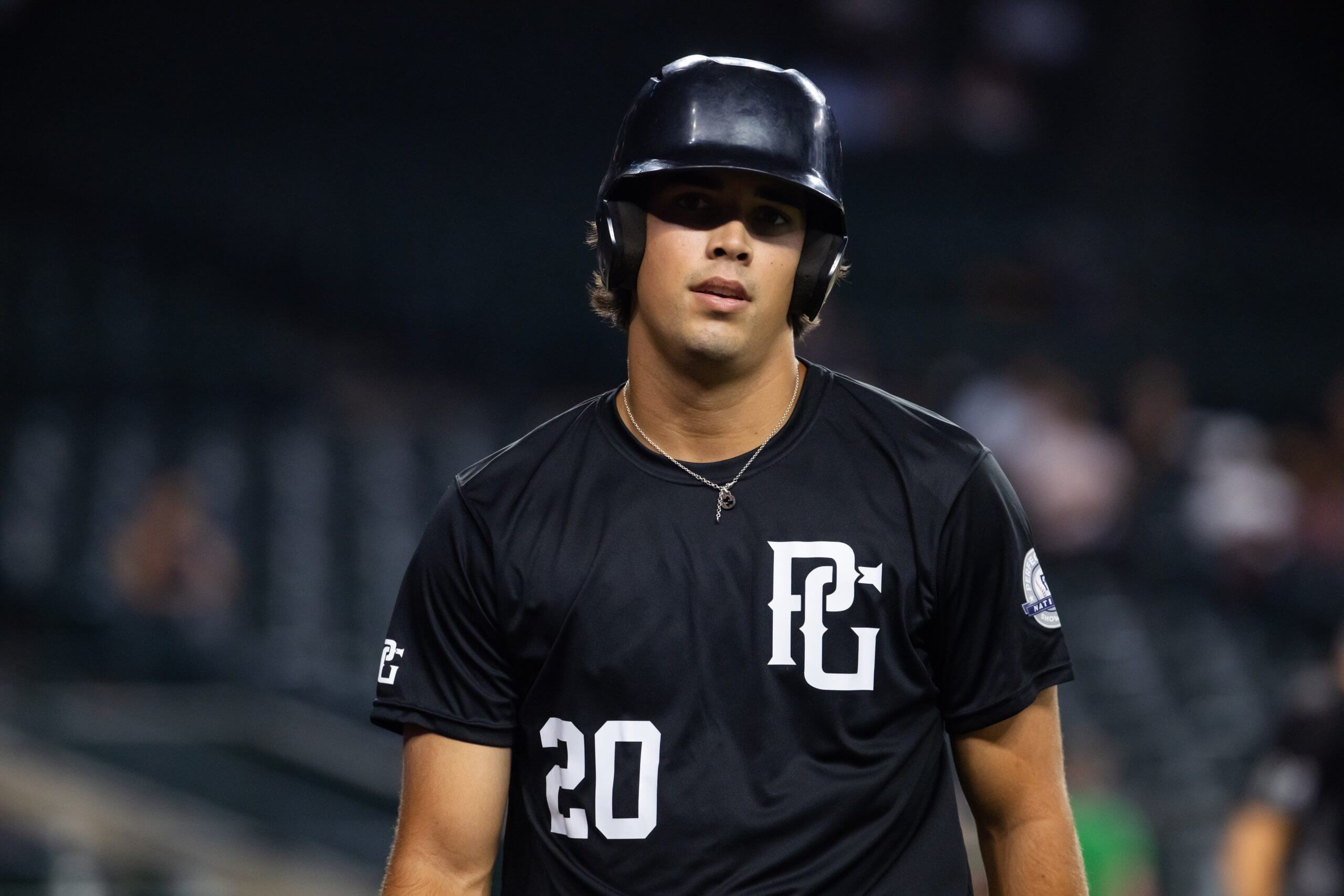
Position Player
High School
OF

Scouting Report
Bats: L, Throws: R
Bargo picked up more playing time when Gavin Kilen got hurt and ended the season tied for third on the Vols with 14 homers. Bargo can play third or second and makes really hard contact, without the pure hit tool or plate discipline right now to project as a clear regular. His Barrel rate is in the top 5 percent of qualifiers in Division I, and his hard-hit rate is in the top quartile, with the Barrel rate higher because he hits a lot of line drives in the optimal range of launch angles. He uses the whole field well, too, with half his homers going the other way. He swings and misses too much to project as a regular, including a 30 percent whiff rate on all fastballs this year, rising to 39 percent on pitches 92 mph or faster. Players with his profile are still sought after — the Orioles like this type, and the Dodgers do to some extent — because any improvement in the contact rate will yield a higher return than it would for players without the hard-contact skills. It’s 20-homer upside if Bargo ever hits enough to get to it.
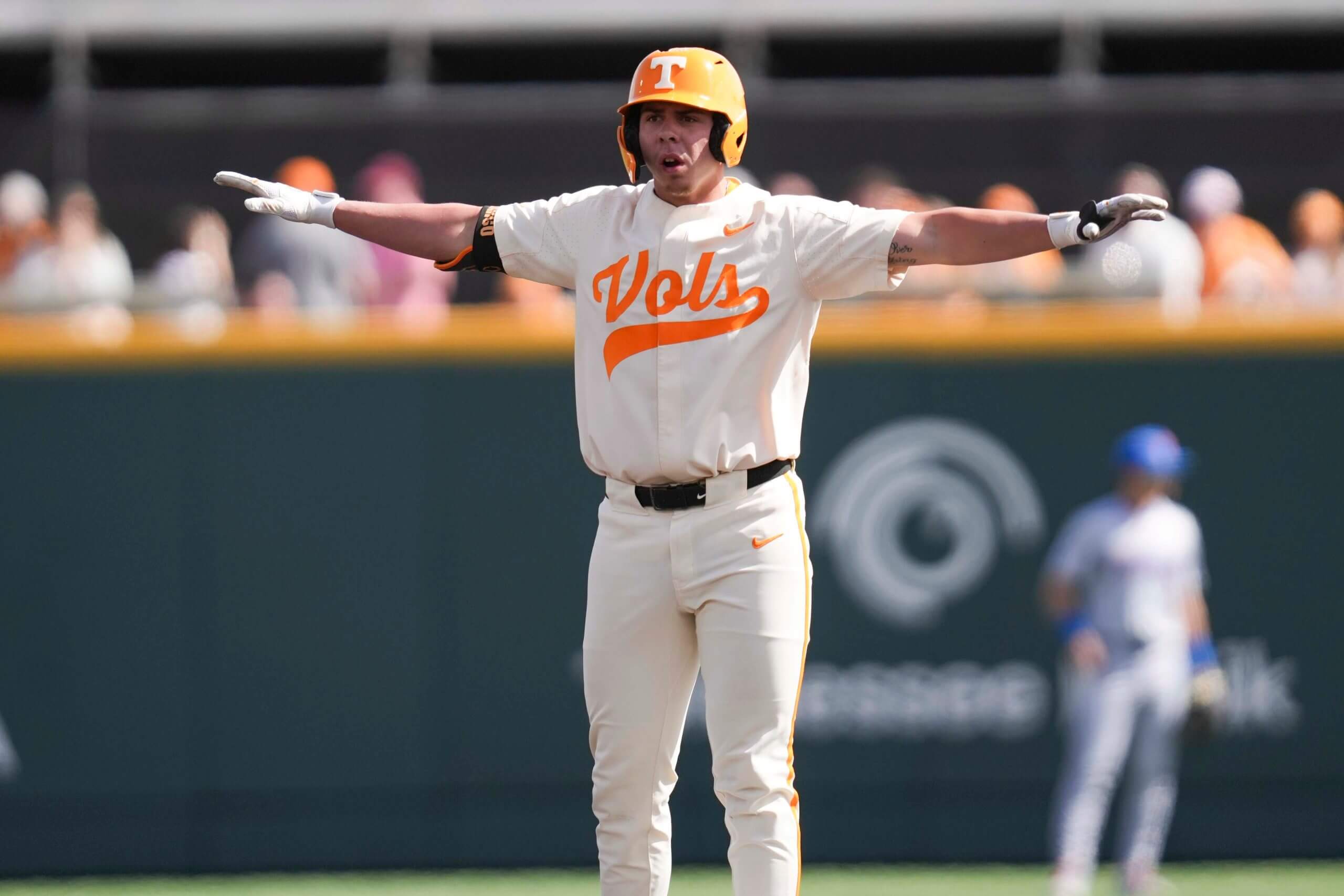
Position Player
4-Year College
2B
3B

Scouting Report
Bats: L, Throws: L
Kepley is a very undersized center fielder who’s a 70 runner and 60 defender, walking almost twice as often as he’s struck out, with almost no in-game power at all. He only swung and missed at pitches in the zone 7.5 percent of the time this year, and just 10 percent out of all the times he swung the bat. He hit three homers all year, getting a lot of extra slugging percentage from his speed on doubles and triples, but he’s probably got closer to 40 power than 30 — his exit velocities are all a little below the D1 median, but not terribly so. He’s probably a fourth outfielder unless he can add strength, and hitting under .300 in his draft year probably doesn’t help his cause.
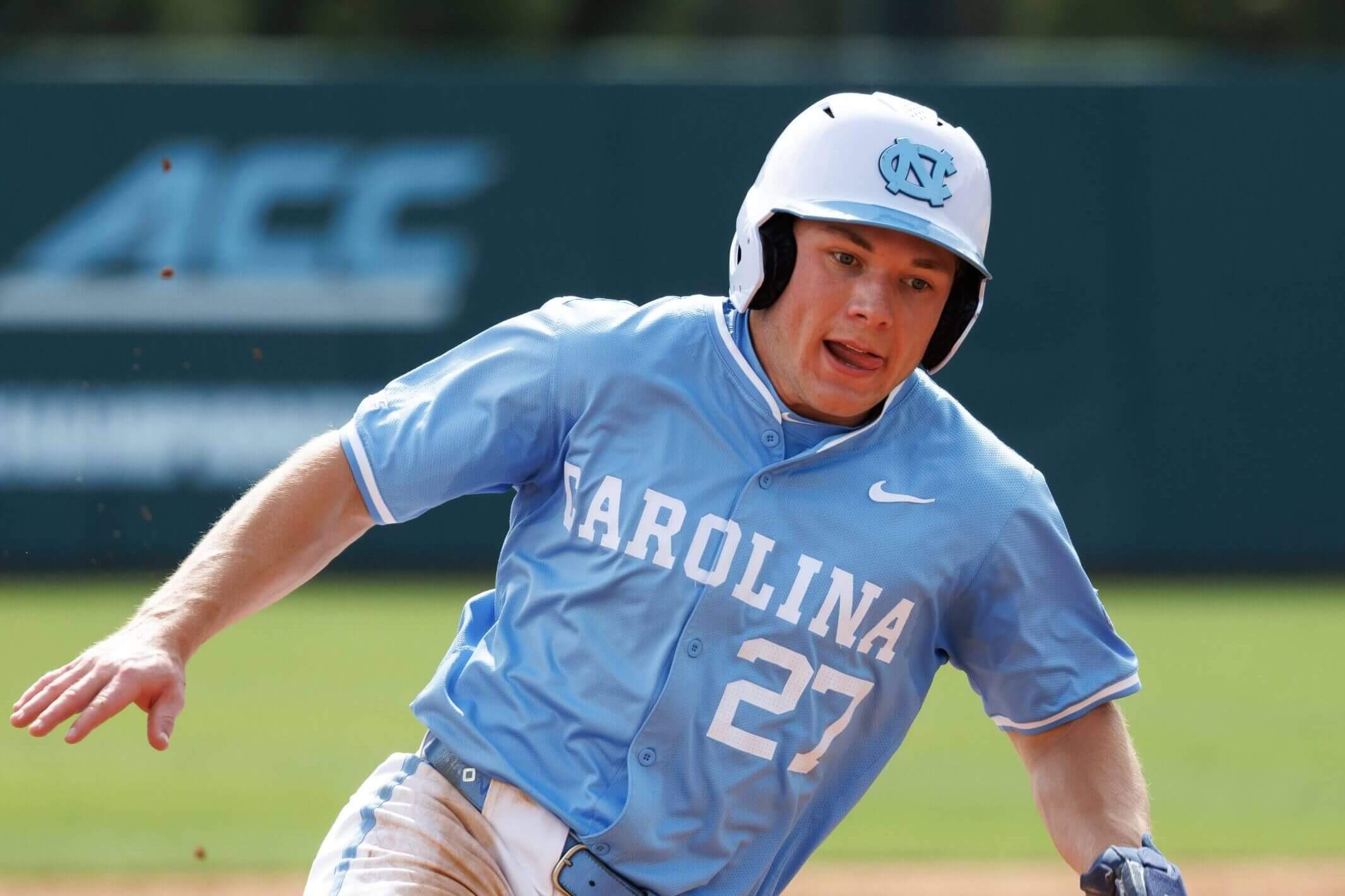
Position Player
4-Year College
OF

Scouting Report
Bats: R, Throws: R
Turley has plus power and can hit a fastball, but he’s feasted on the weaker pitching of Oregon State’s independent schedule — against better pitching he struggles to hit anything with a wiggle. His whiff rate on non-fastballs was 41 percent on the year, and that came in a schedule where he played only eight games in total against SEC or ACC opponents. He hits the ball extremely hard when he does make contact, however, with a 90th percentile exit velocity of 108.4 mph and a hard-hit rate of 61 percent, the latter number ranking in the top 1 percent of all qualifying D1 hitters. It’s just all or nothing — he makes very loud contact or he makes no contact at all. More of the former, less of the latter, and you have a first-rounder. He’s a capable defender in either outfield corner, with 25-homer upside if he ever picks up off-speed stuff and controls the zone better.
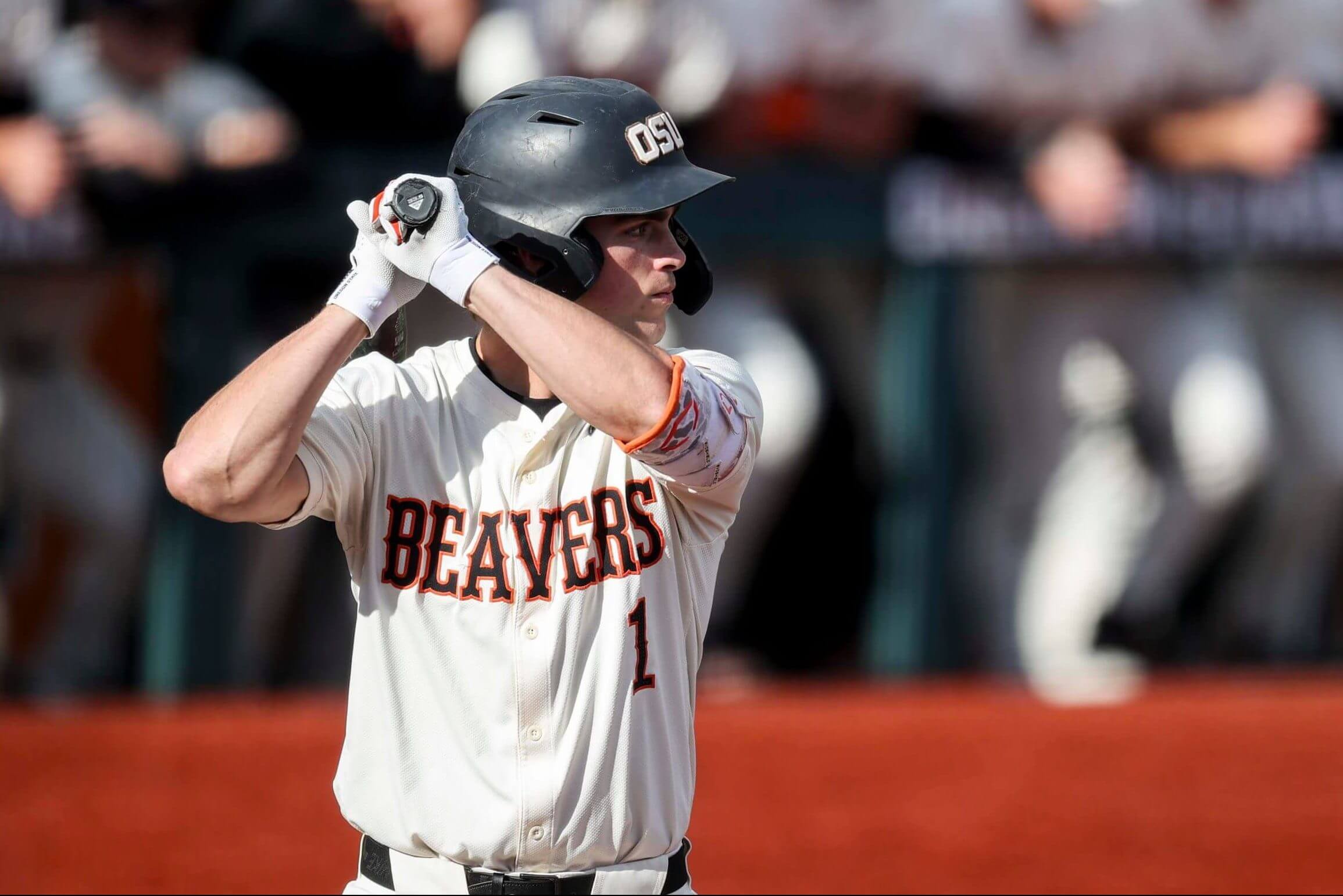
Position Player
4-Year College
OF

Scouting Report
Bats: R, Throws: R
Mershon has great feel for contact, with a very wide setup that keeps him balanced but probably inhibits his ability to drive the ball, as he’s clearly strong enough for average or better power. He barely whiffed on anything, especially fastballs, at showcases last year (11 percent overall, 7 percent on heaters), and showed the ability to use the whole field. I think there’s untapped potential in the bat. He’s a catcher and center fielder, more likely to end up at the latter spot, with a 50/55 arm and plus speed out of the box that would be wasted behind the dish. He’s already 19 and is committed to Mississippi State.
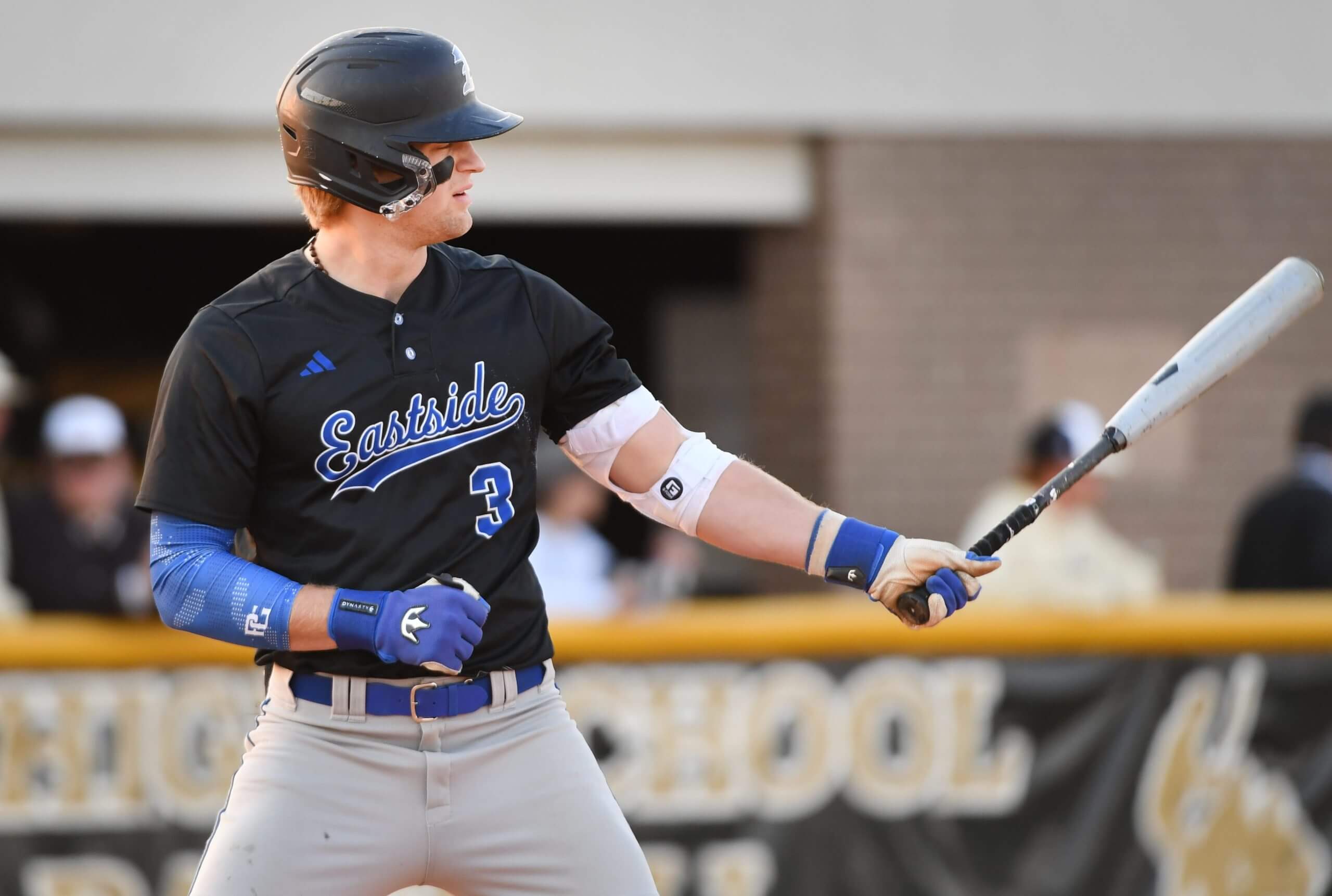
Position Player
High School
C
OF

Scouting Report
Bats: R, Throws: L
Dzierwa is a changeup lefty with good control, working with a somewhat stiff delivery and no windup and going after right-handed hitters with a low-90s heater and a plus changeup. The pitch has a lot of tumble to it and hitters don’t seem to pick it up well, whiffing on it in and out of the zone. Against lefties, he mostly throws the fastball and prefers his mid-70s curveball, which has some two-plane break to it but just doesn’t miss a lot of bats. He struck out 28 percent of batters he faced this year while walking just 5.9 percent, with the changeup getting the highest whiff rate of all his pitches at 39 percent. With his above-average to plus control he might be a back-end starter, although he’d be more valuable if he had a better breaking pitch for better results against lefties.
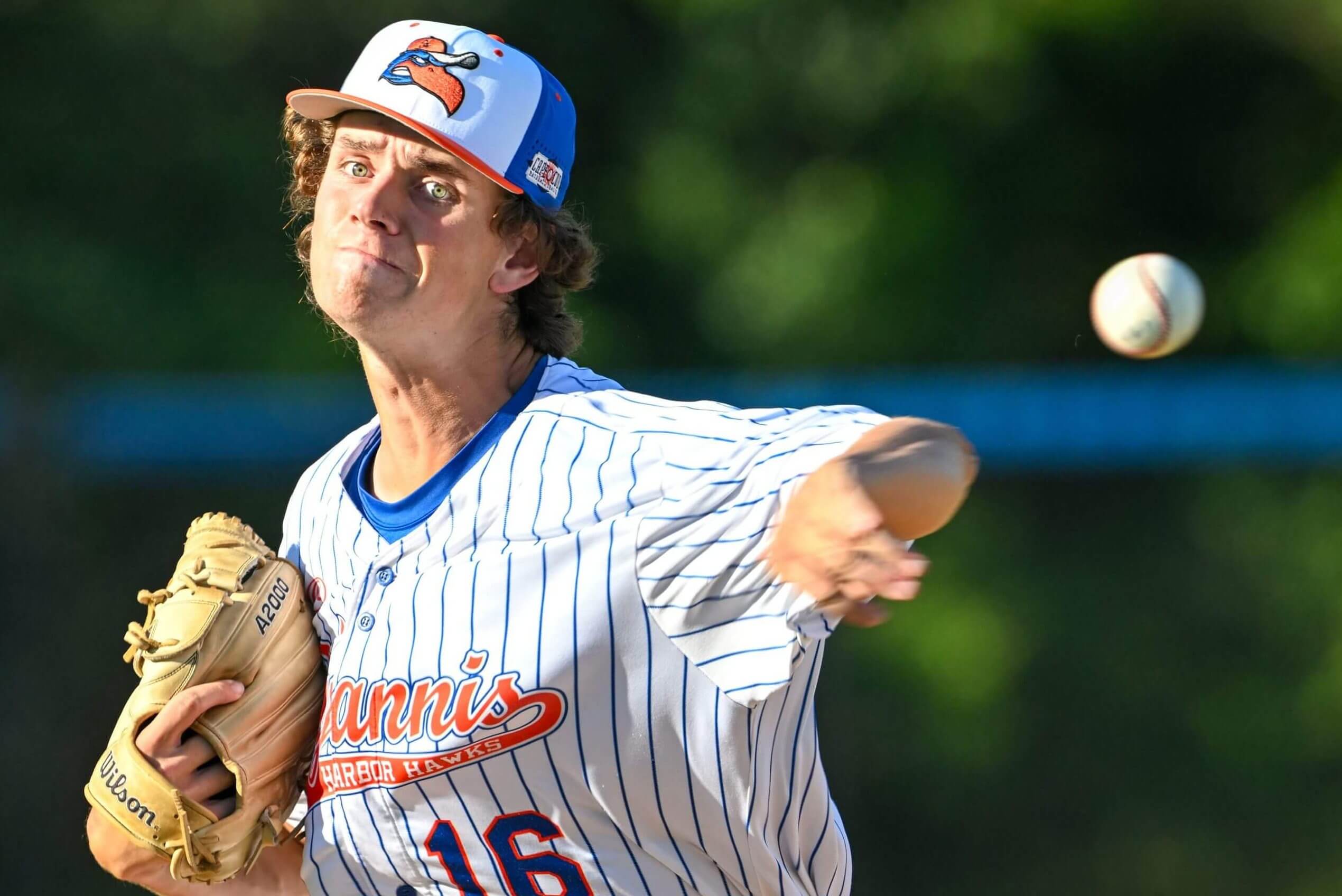

Scouting Report
Bats: R, Throws: R
Harmon is an athletic pitcher who’s been up to 100, pitching more at 93-95. He can flash a 55 slider from a slot just below three-quarters. He takes a huge stride towards the plate to generate velocity, but beyond that it’s not a great delivery, as his arm is extremely late and he cuts himself off in his landing. The slider can get slurvy and blend into his curveball, and he doesn’t have a consistent changeup. He’s a bet on arm strength and pure athleticism, with some possible improvement right away if he uses the slider as his predominant breaking ball. He’s committed to Mississippi State.
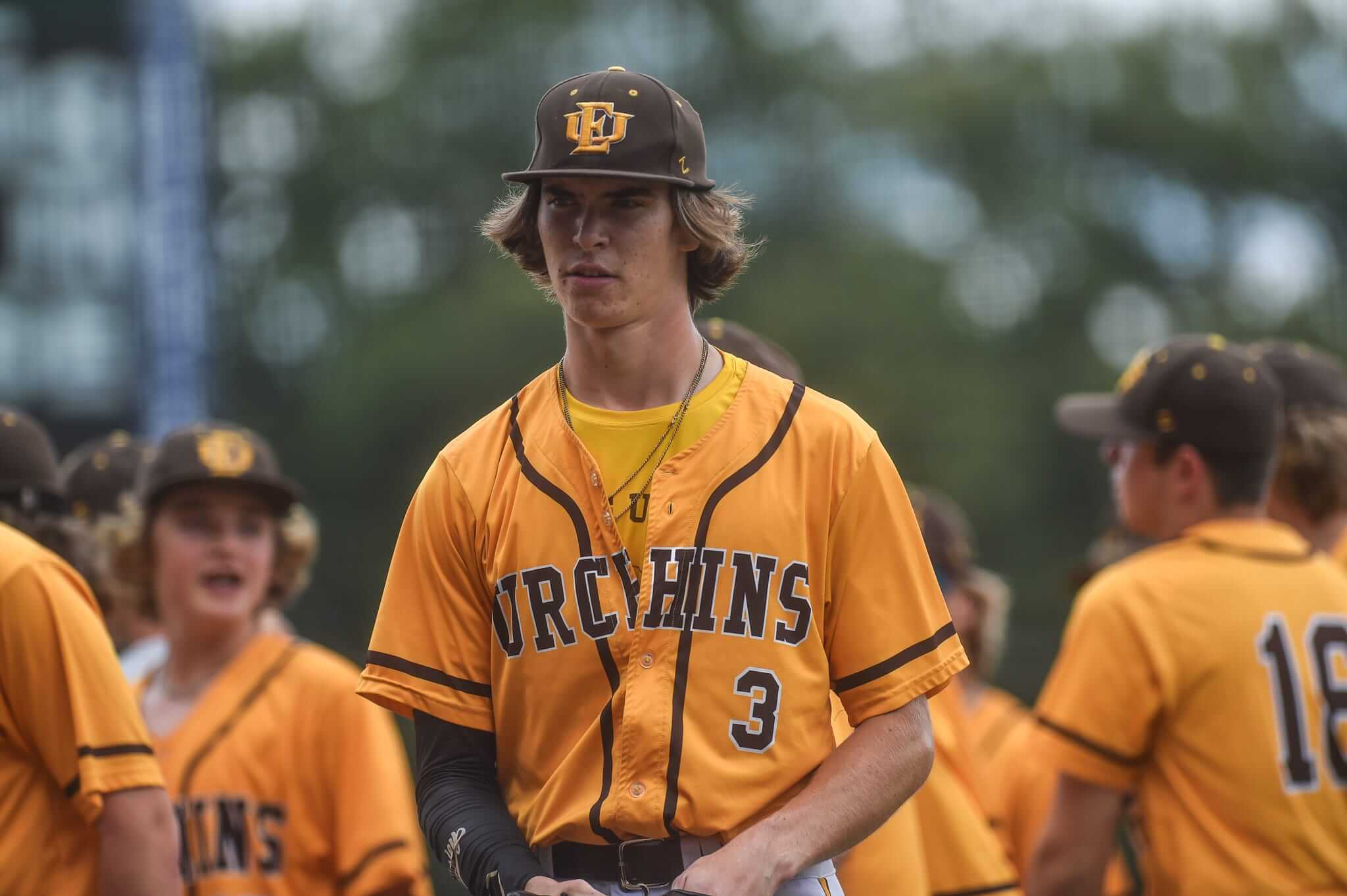

Scouting Report
Bats: L, Throws: R
Teel is the younger brother of White Sox catcher Kyle Teel, having followed his brother to University of Virginia. Aidan doesn’t have a plus tool but does everything reasonably well, hitting .317/.442/.538 this spring with just a 12.9 percent strikeout rate, showing 55 speed and 55 defense in center, even going 9-for-9 in stolen bases. He has a fourth-outfielder floor and I wouldn’t be shocked if he ended up a regular because he keeps making adjustments. If Teel doesn’t sign, he’s transferring to Mississippi State, part of the carousel of players going from Charlottesville to Starkville along with coach Brian O’Connor.
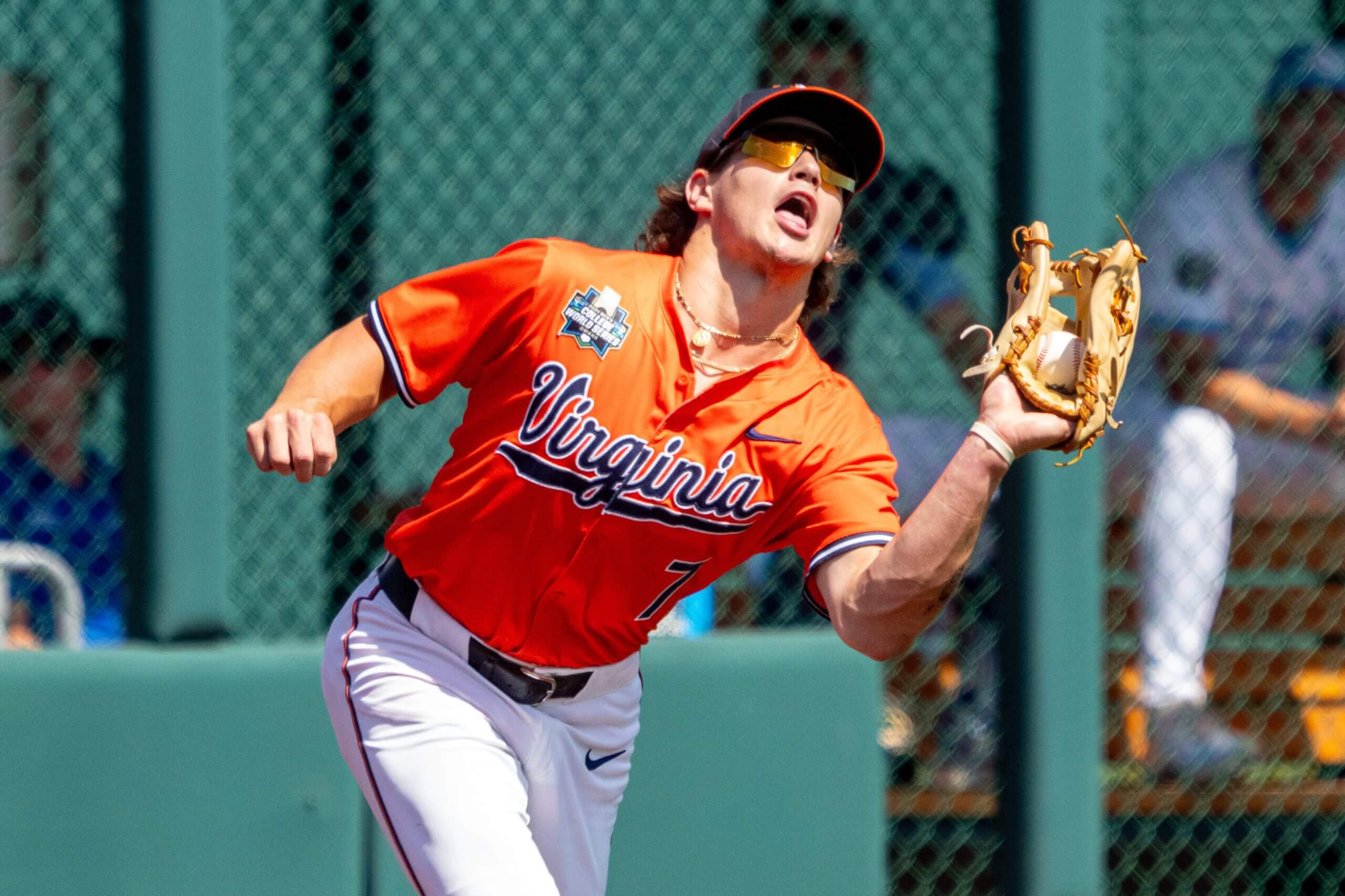
Position Player
4-Year College
OF

Scouting Report
Bats: L, Throws: L
Obermueller was draft-eligible last year, and declined to sign when the Rangers took him in the 19th round, so he’s back in the draft this year and should go on Day 1 after a much better junior year. Obermueller has been up to 98 and sits 92-94 with a 55 slider that’s very horizontal, and given his low arm slot it’s not surprising that he’s very east-west. He barely uses a changeup and the whole operation is very relieverish, from the delivery to the arsenal to the command. He did improve his control significantly this year, however, cutting his walk rate from over 15 percent a year ago to 9 percent this spring. I could see someone hoping they can build on his adjustments and develop a left-handed starter with two 55s or better.
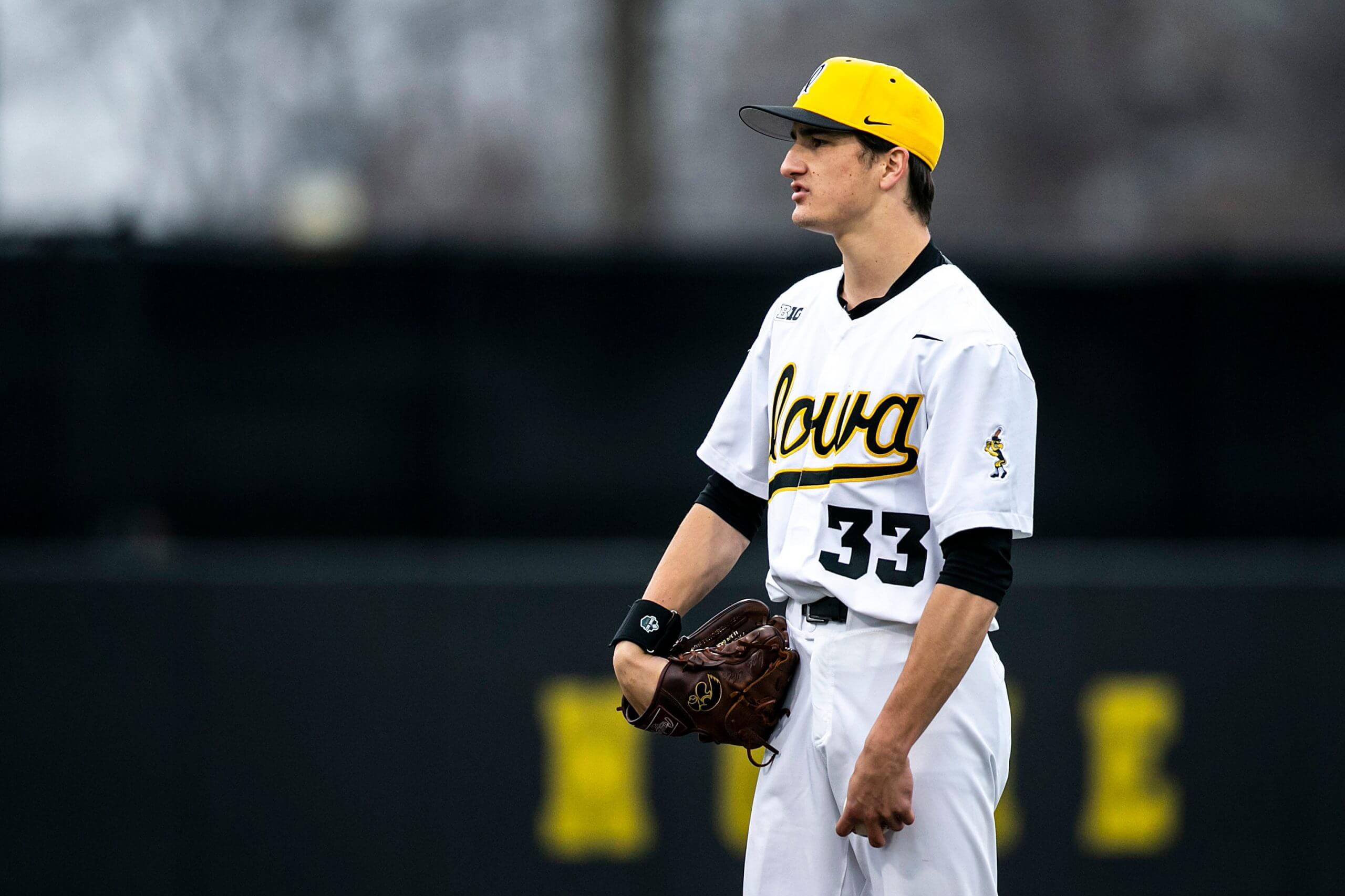

Scouting Report
Bats: R, Throws: R
Phillips needs a pitch to get lefties out, and if he finds one, he could be a mid-rotation starter. He’s 95-98 with some sink, coming from a low three-quarters slot, and he has a hard, sweepy slider at 86-88, also using an occasional cutter and changeup. The changeup isn’t bad, maybe a 45, just too firm and too often on the outer third. He used the changeup just 16 percent of the time against left-handed batters, while using the slider — a pitch that runs right at their bat paths — 28 percent of the time, which is at least part of why lefties hit .258/.365/.402 off him this spring. His arm action is a little long, but he repeats it enough for average control. Odds are he’s a sinker/slider reliever in the long run; someone should give him every opportunity to start, however.
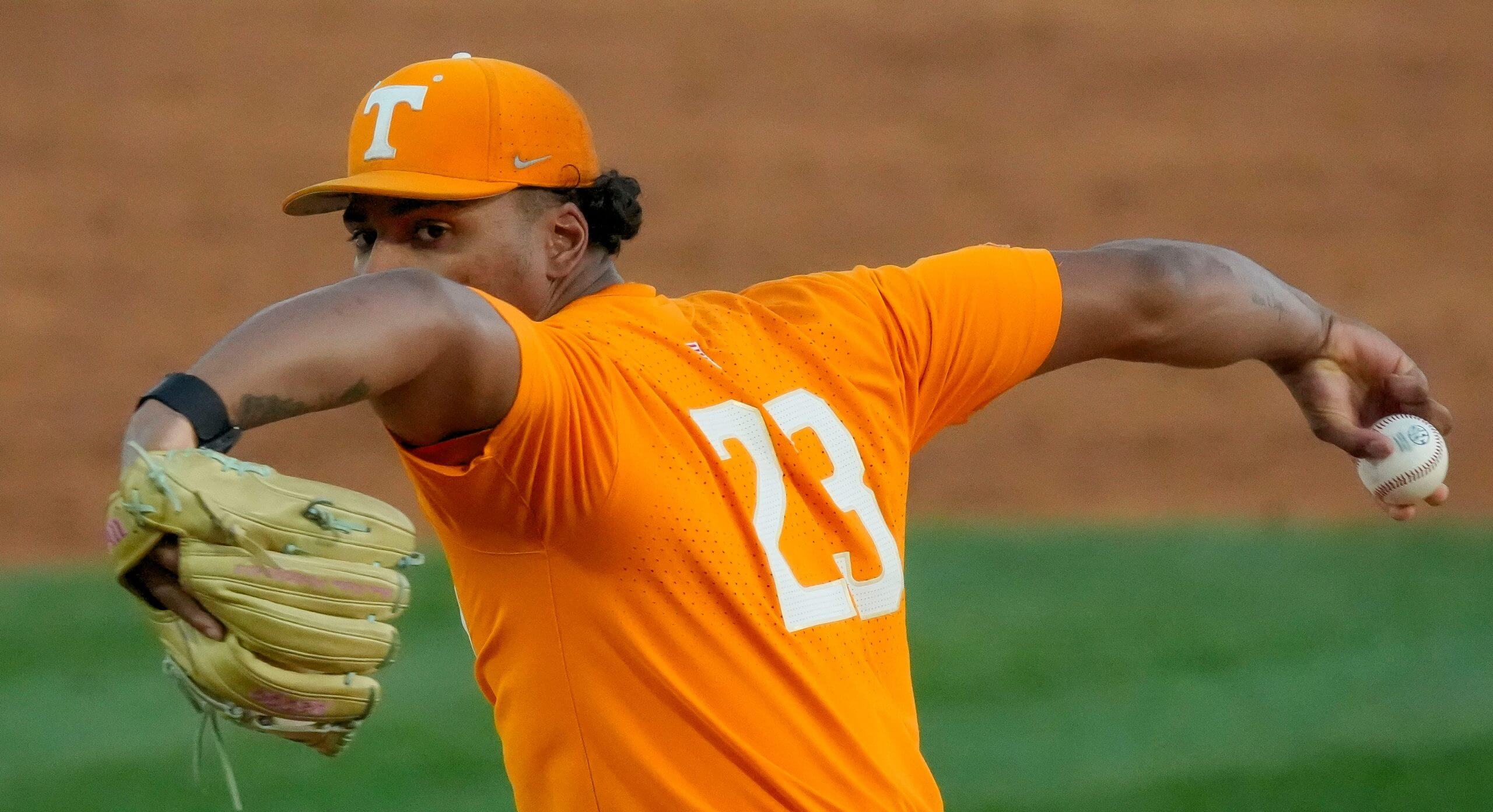

Scouting Report
Bats: R, Throws: R
Bowker comes from a low three-quarters slot, working 92-95 with excellent ride on the pitch. He has a 55 slider, enough to see a pretty good reliever floor here. He throws a cutter and changeup, both 45s, and probably should junk the cutter entirely as hitters have gotten to it — it’s one of the biggest reasons he allowed 14 homers in 72 innings this year. He hasn’t had a platoon split, however, with slightly better results against left-handed batters than right-handed this spring, his first season for Vanderbilt after he transferred from Georgetown. I’d start him for now and see if the changeup improves with usage enough to keep him in a rotation.
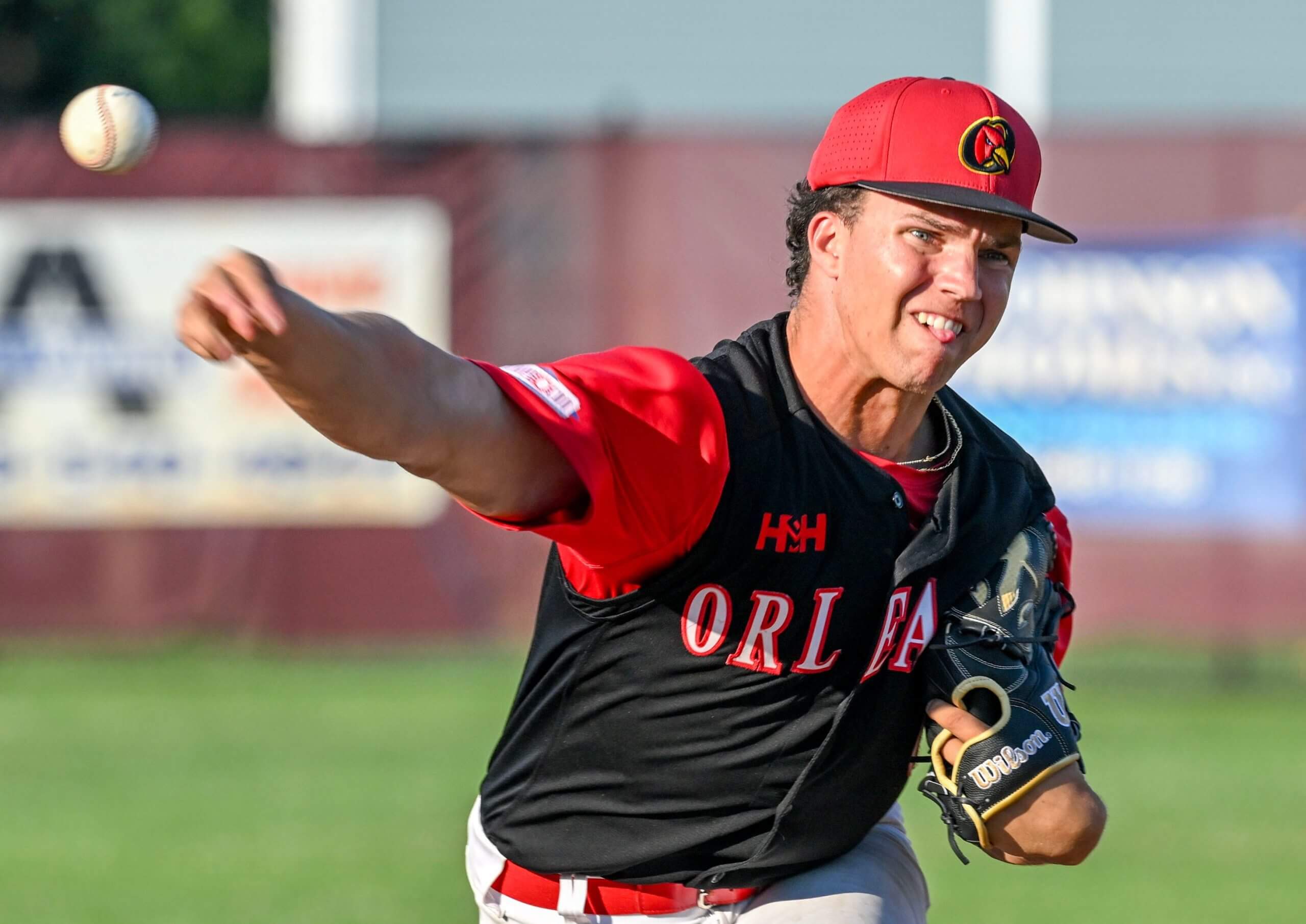

Scouting Report
Bats: L, Throws: R
West has quick hands and a sound swing, with the potential to hit with some power his main attraction. He’s already pretty filled out physically, enough to say he’s not going to stay at short for very long, with the arm for third base and possibly the speed for the outfield. He hit very well against some extremely mediocre competition this spring in Maryland, and didn’t do a ton of summer/fall showcases last year, with a 43 percent whiff rate in a small sample. His swing can get long when he starts his hands higher and wraps his bat, but that’s a small thing to fix. If the pitch recognition is better than it looked in 2024, he’s a third-round talent, but he’s also committed to North Carolina State and could be a much higher pick in 2028 if he hits well in the ACC.
Position Player
High School
SS

(Top photo illustration by Kelsea Peterson / The Athletic; Photos of Aiva Arquette, Ethan Holliday, Kade Anderson: Matt Dirksen / Getty Images)
